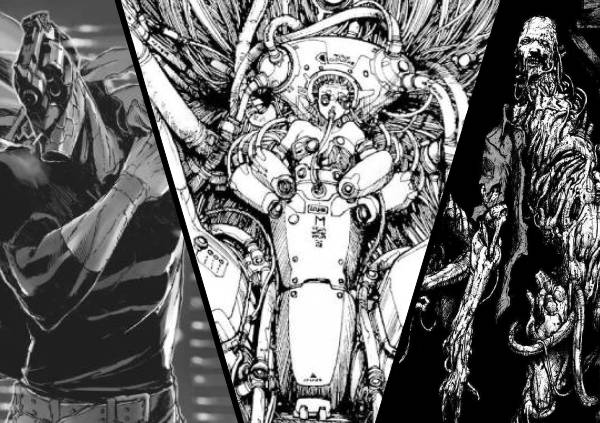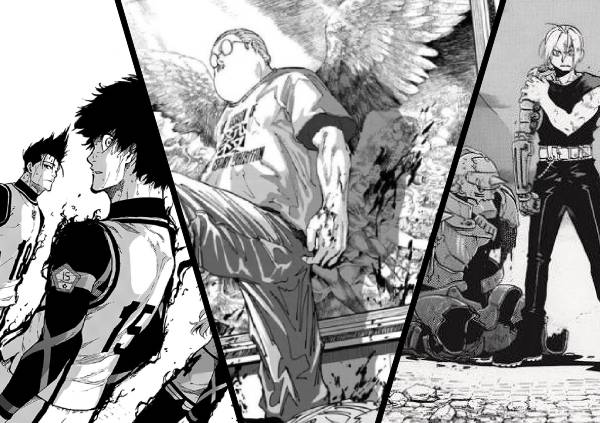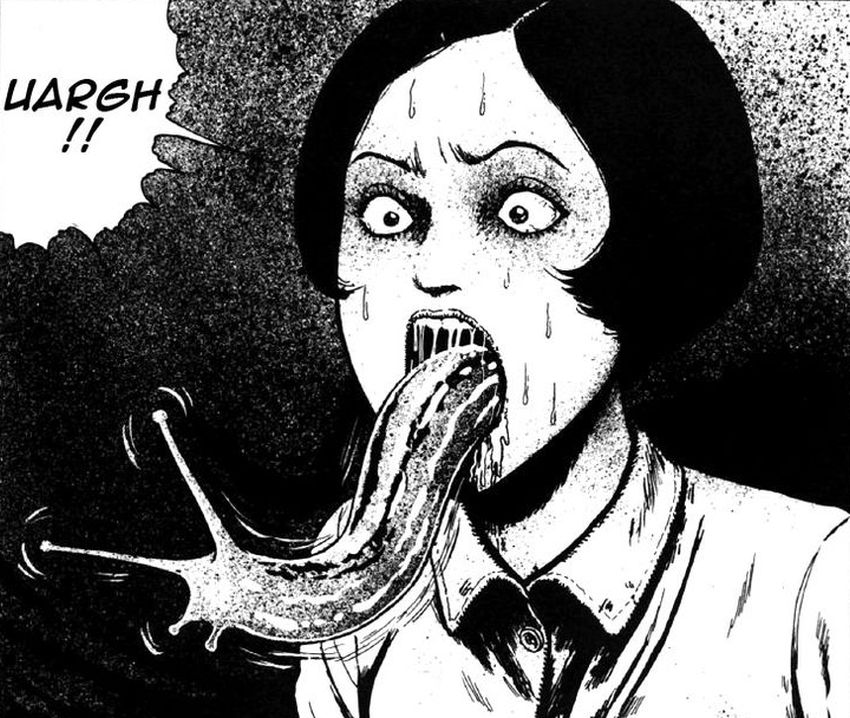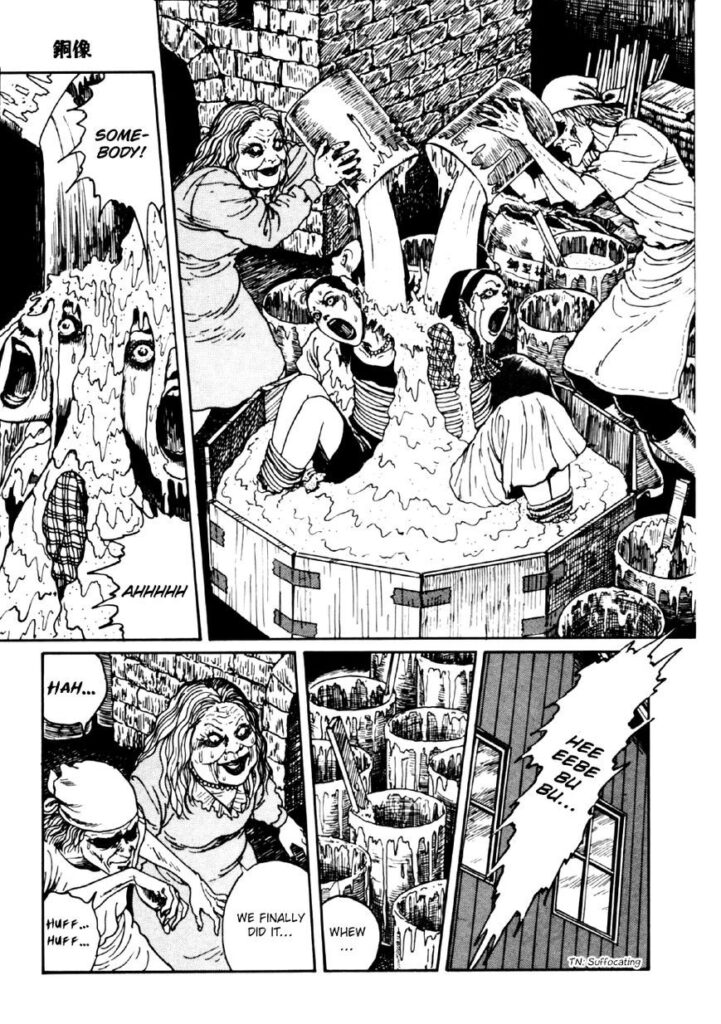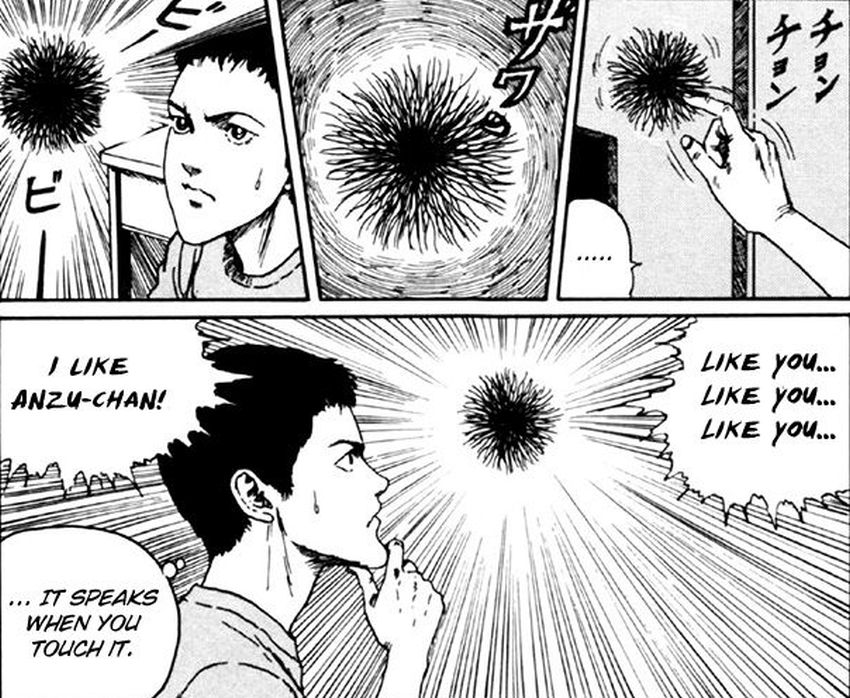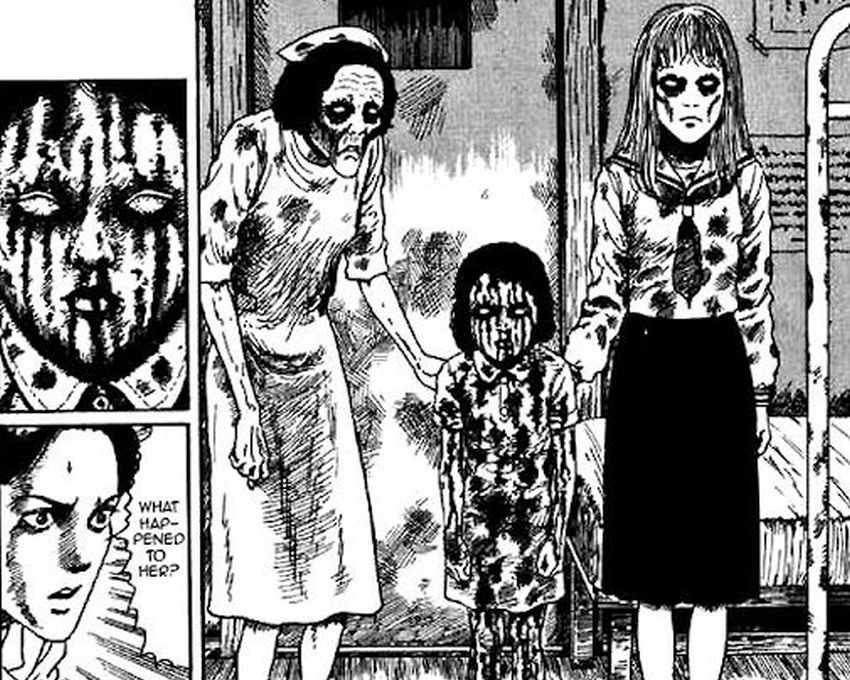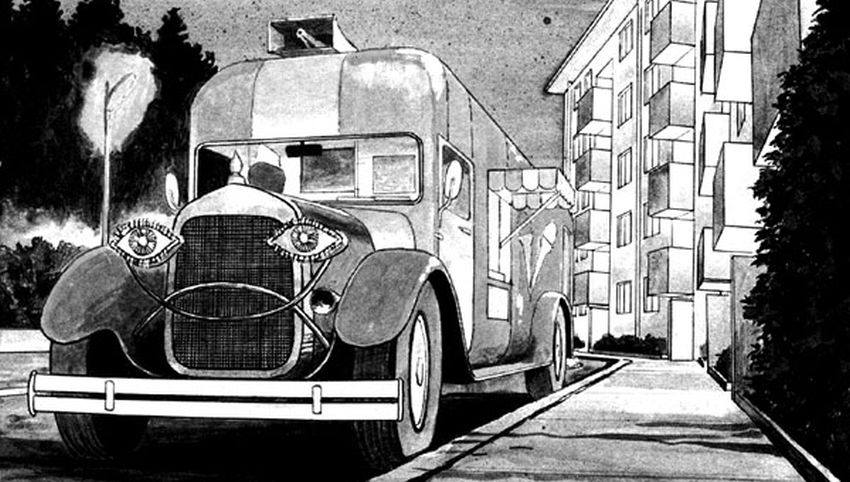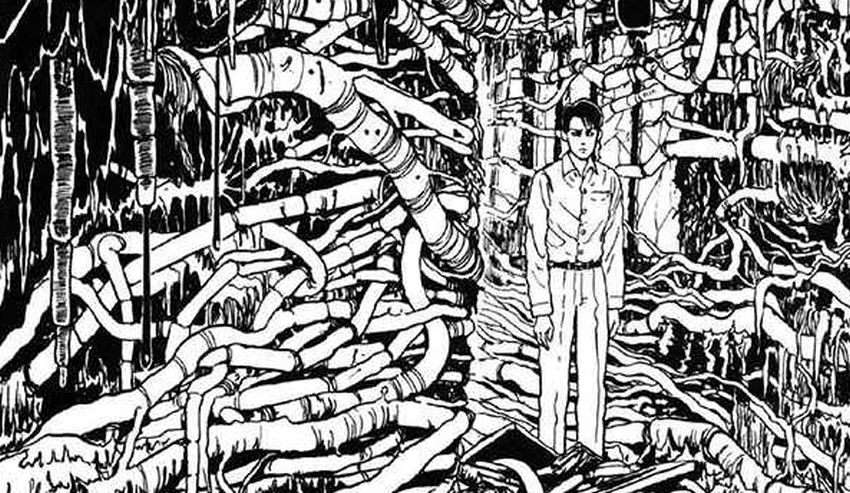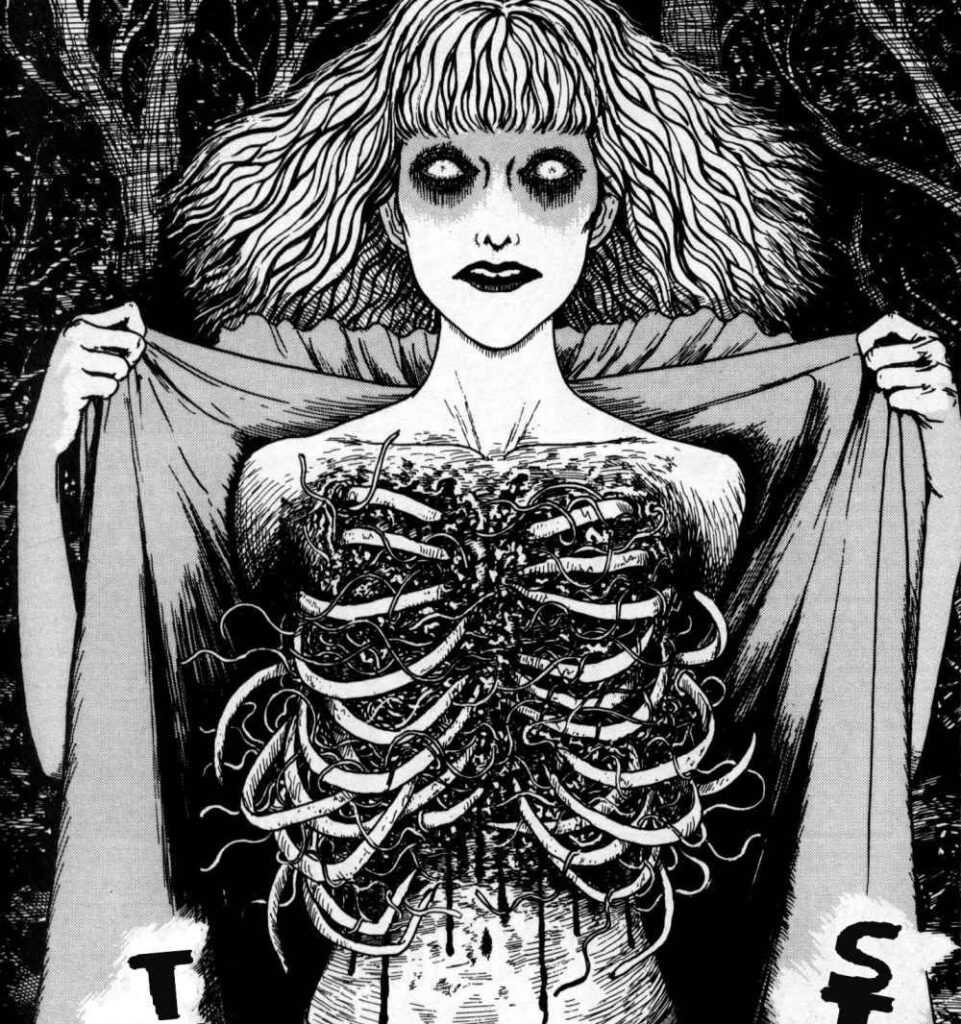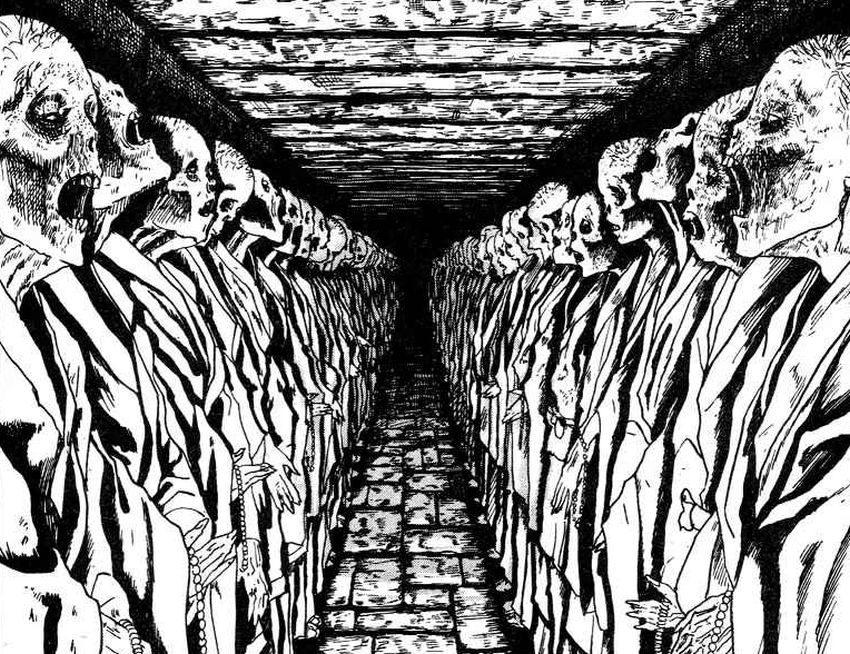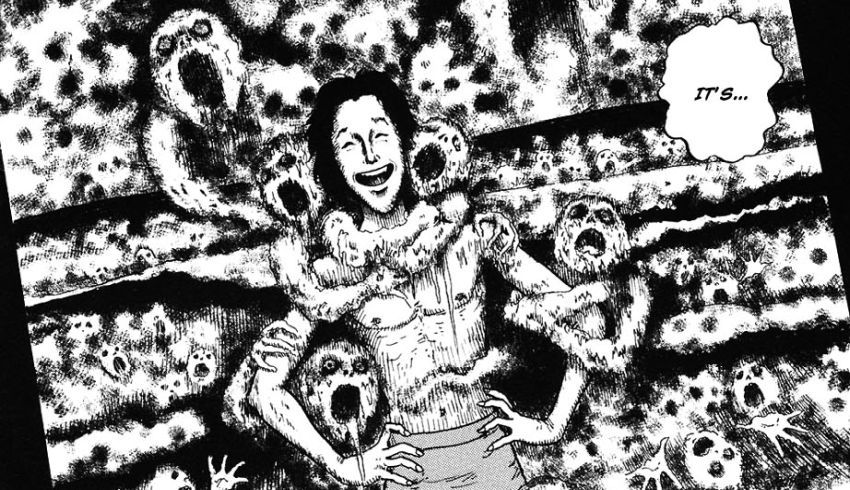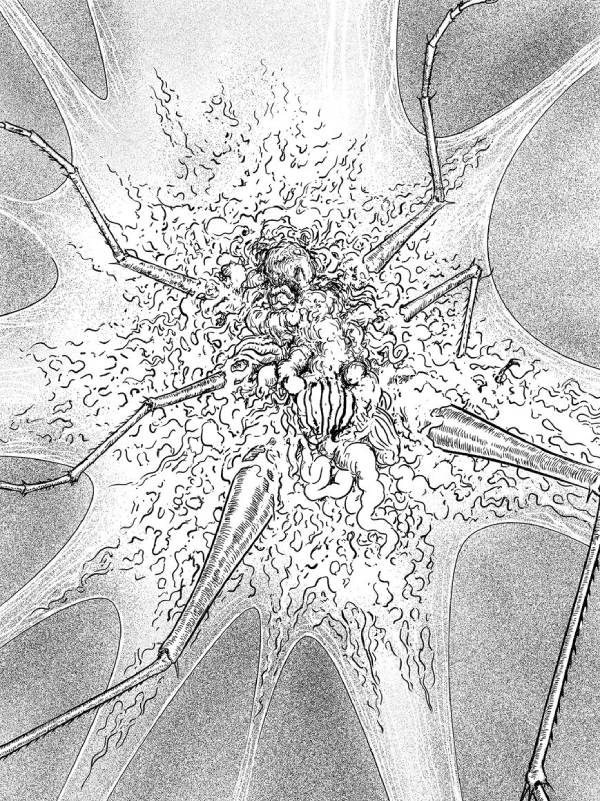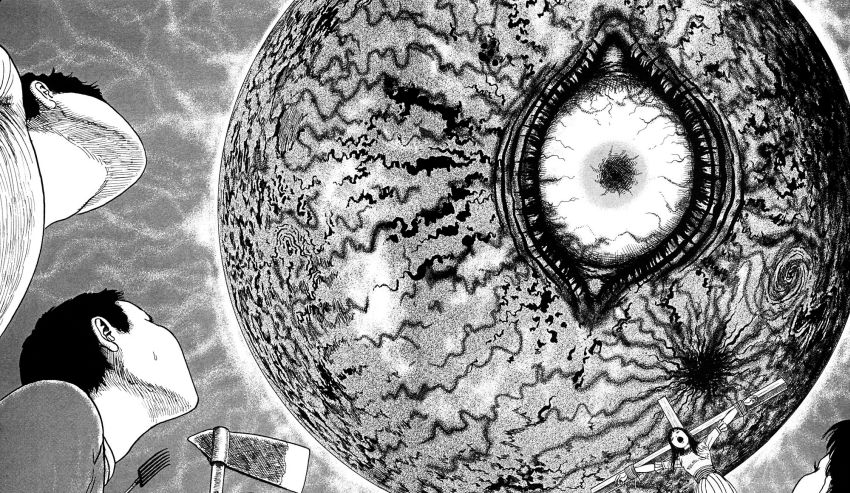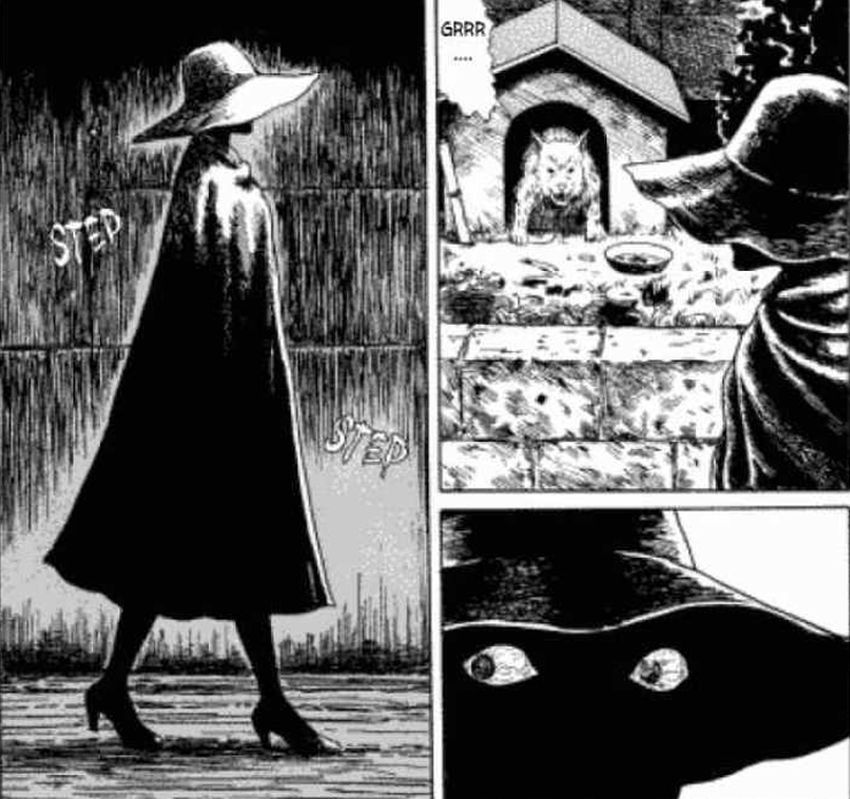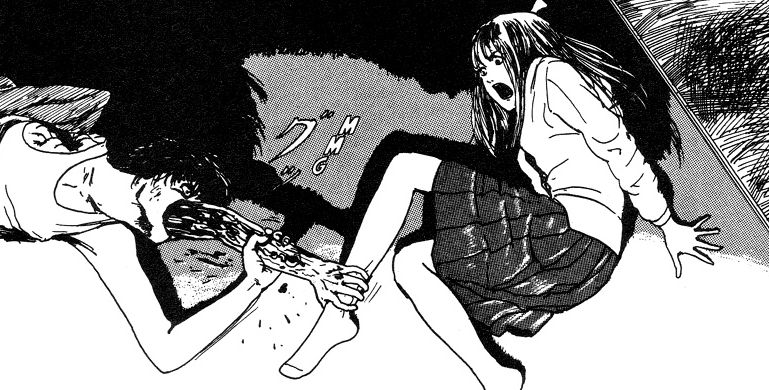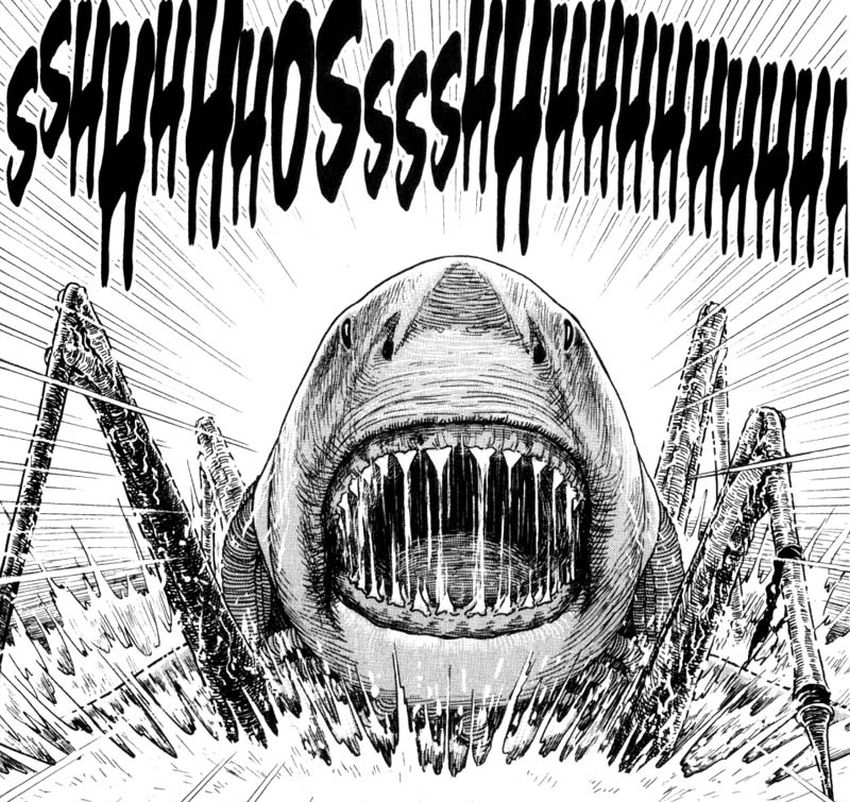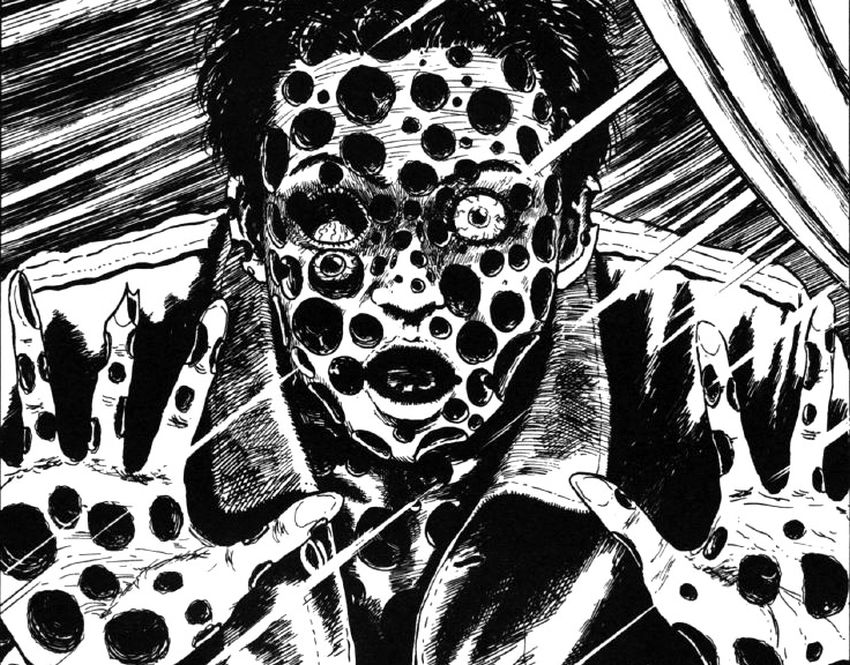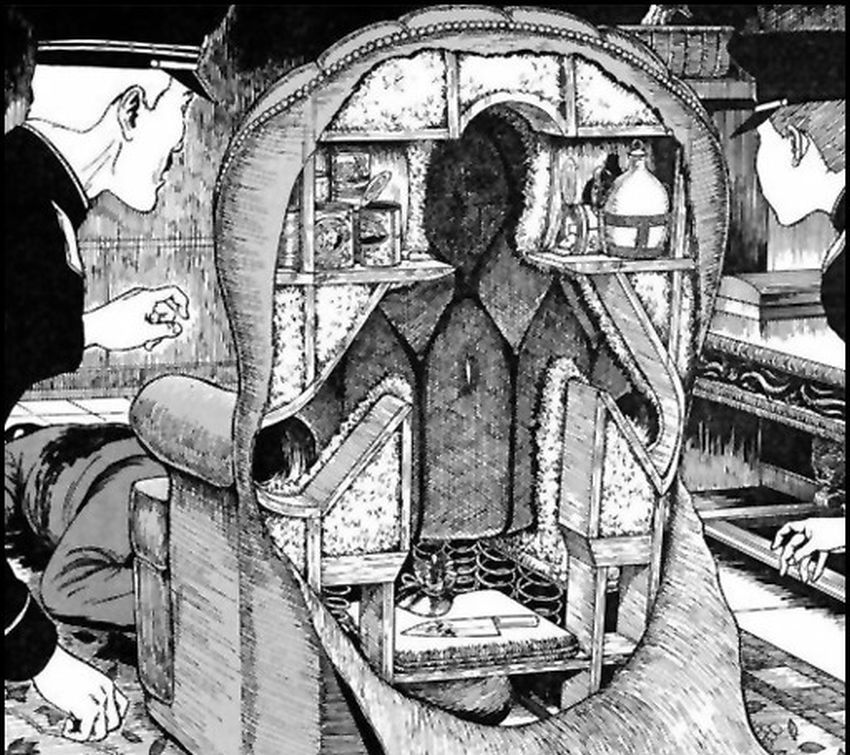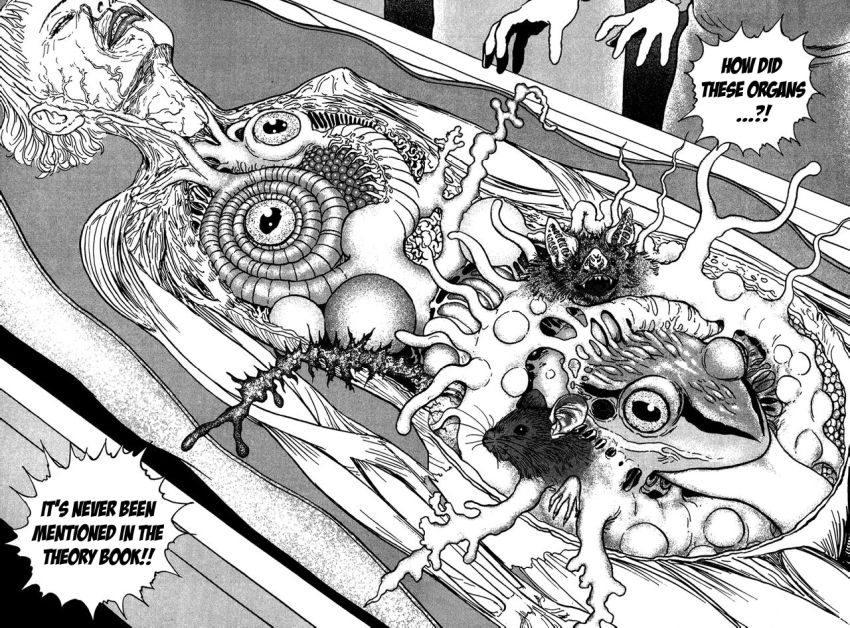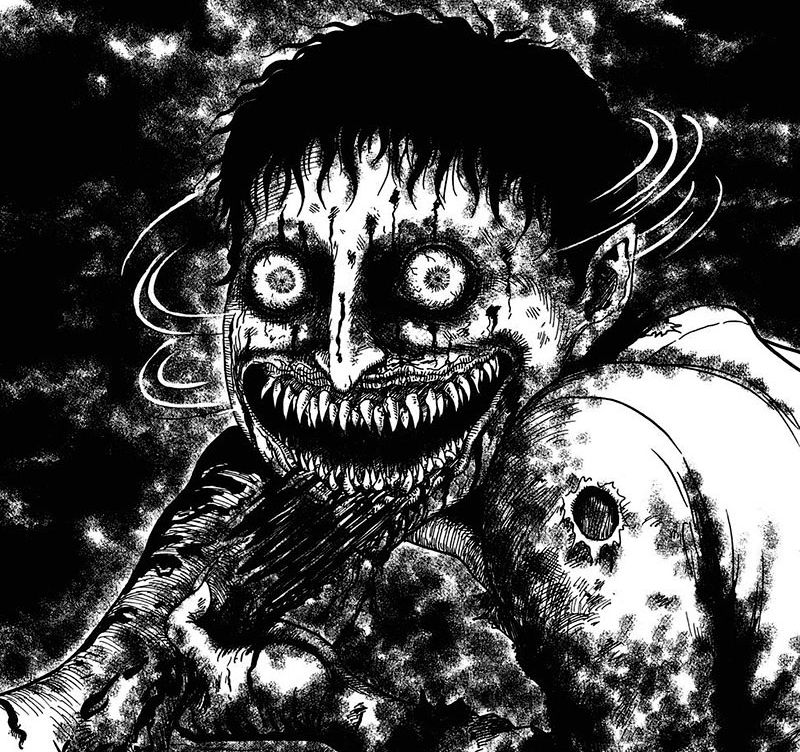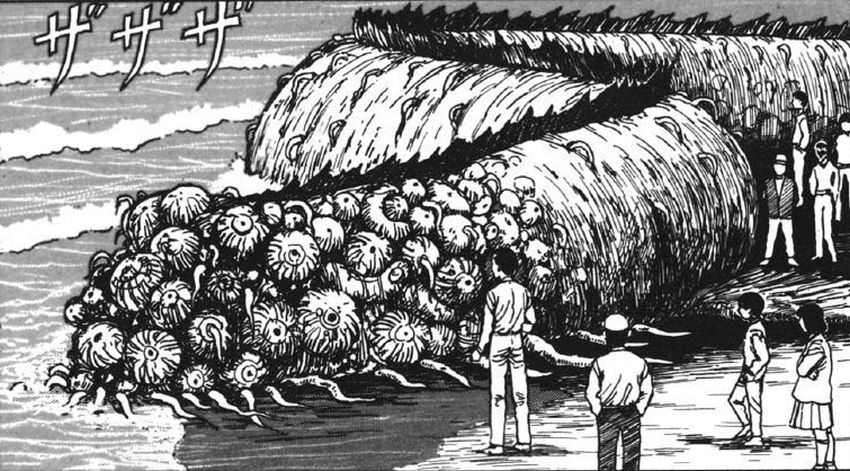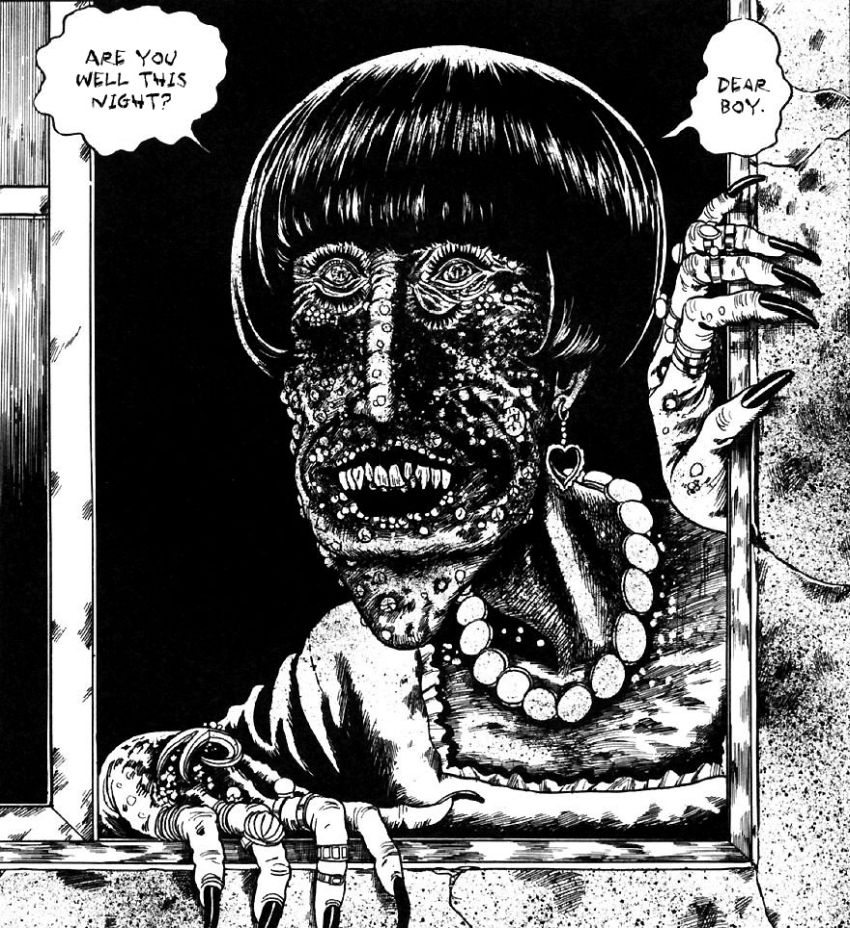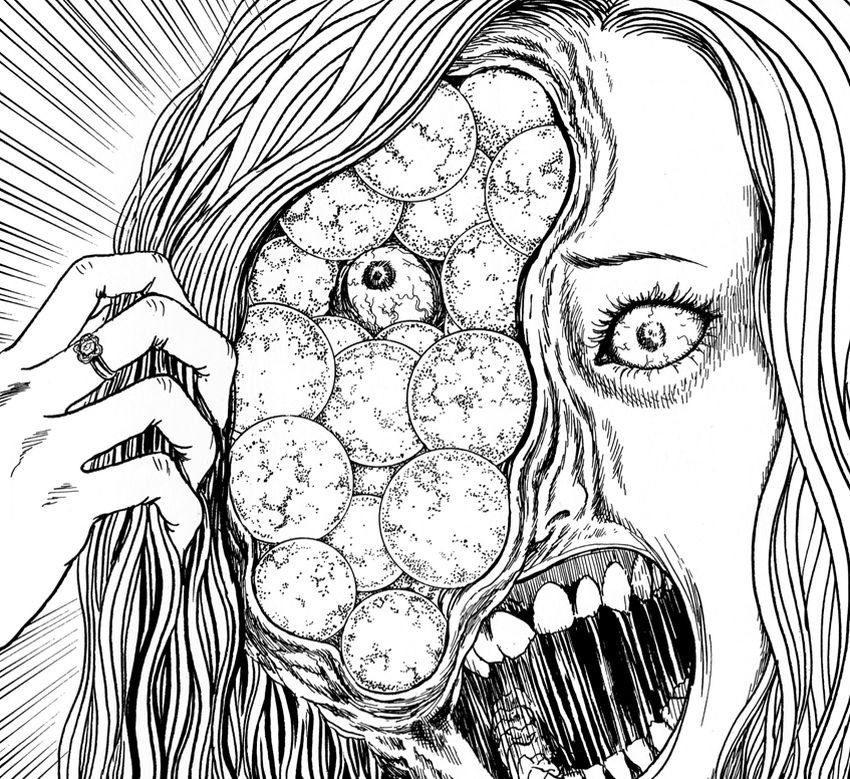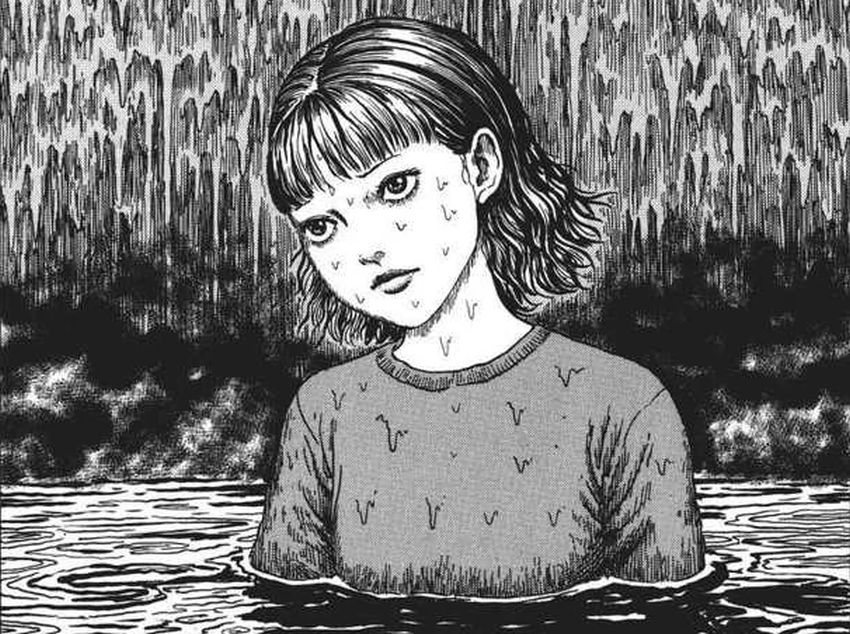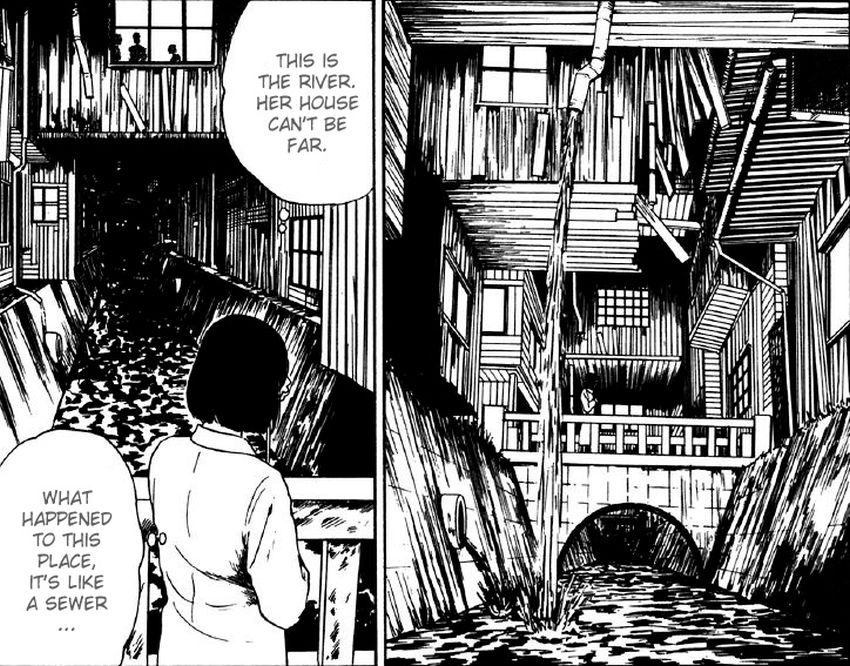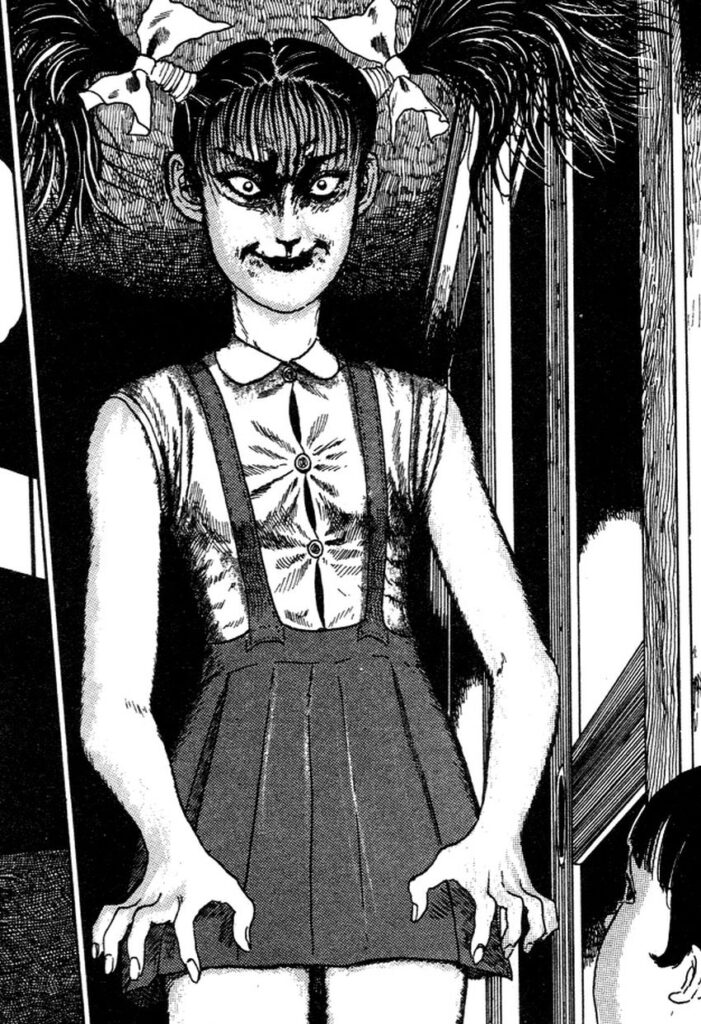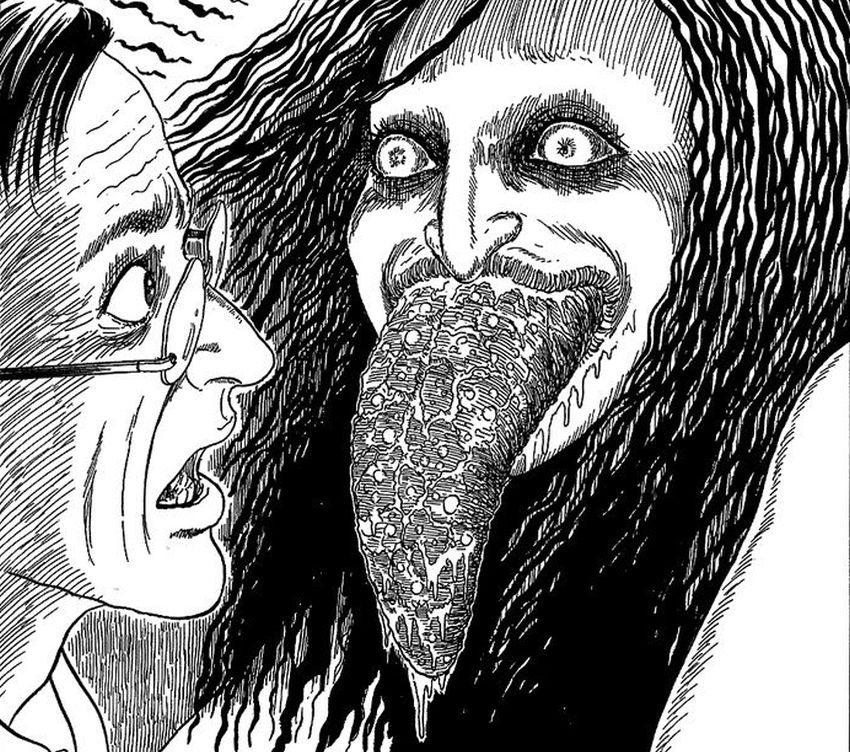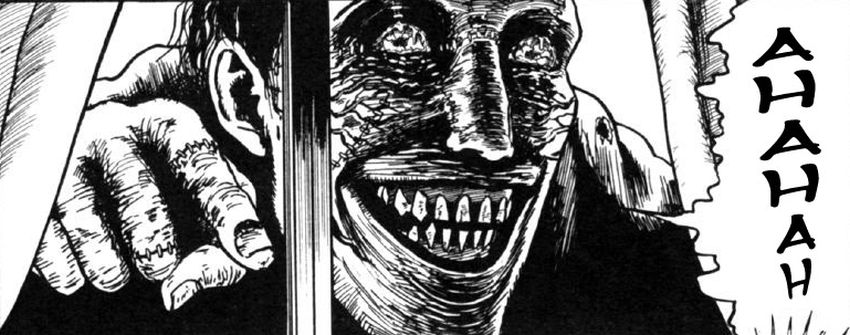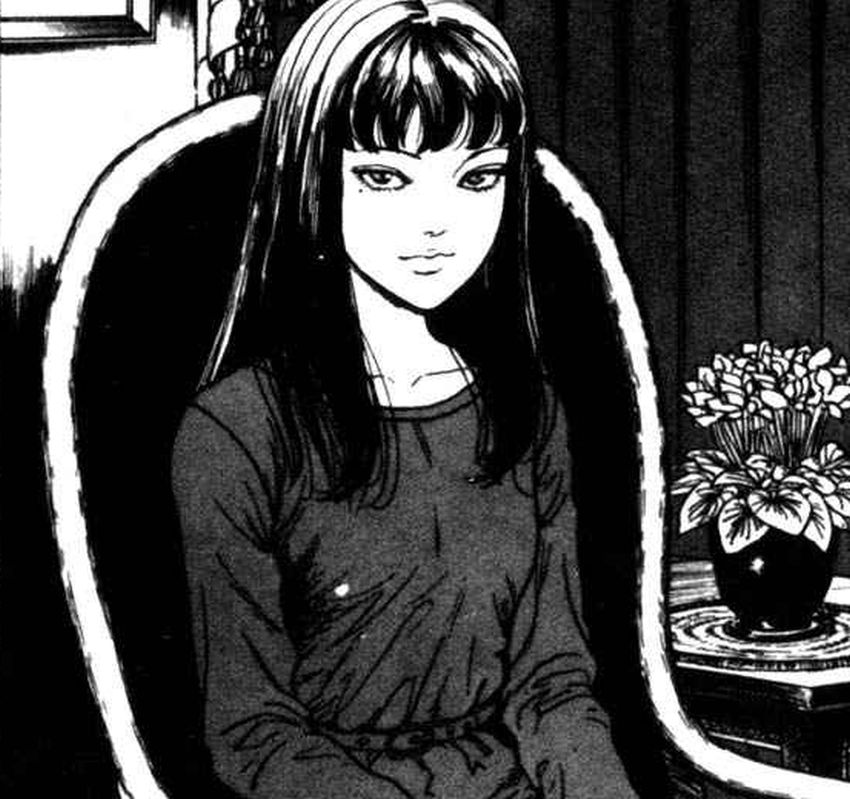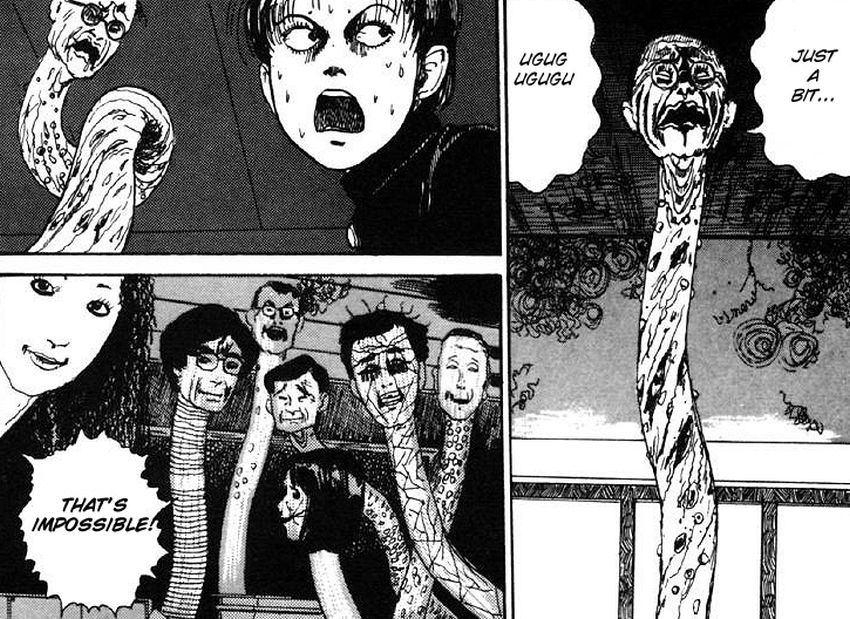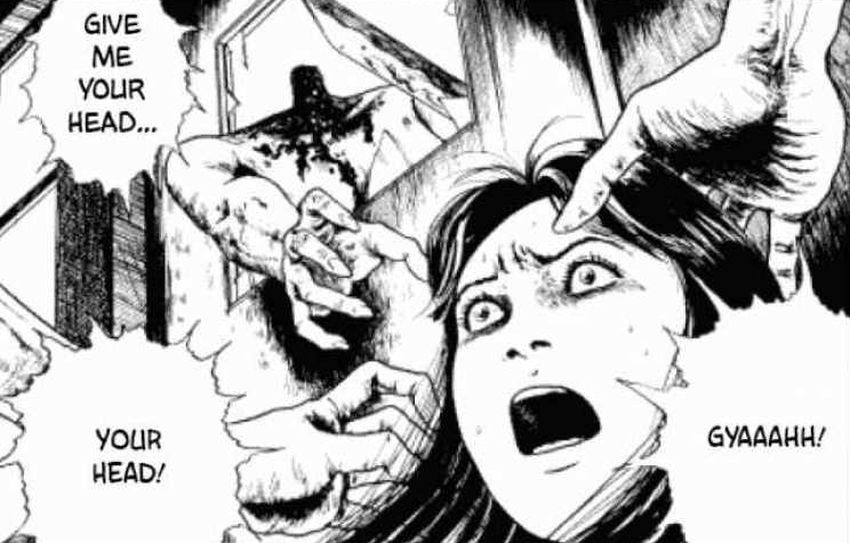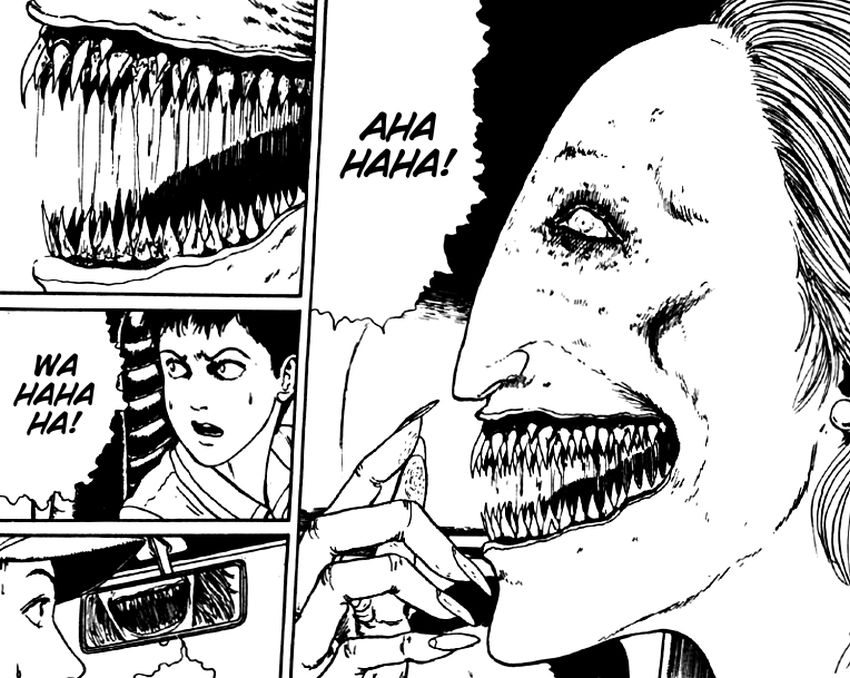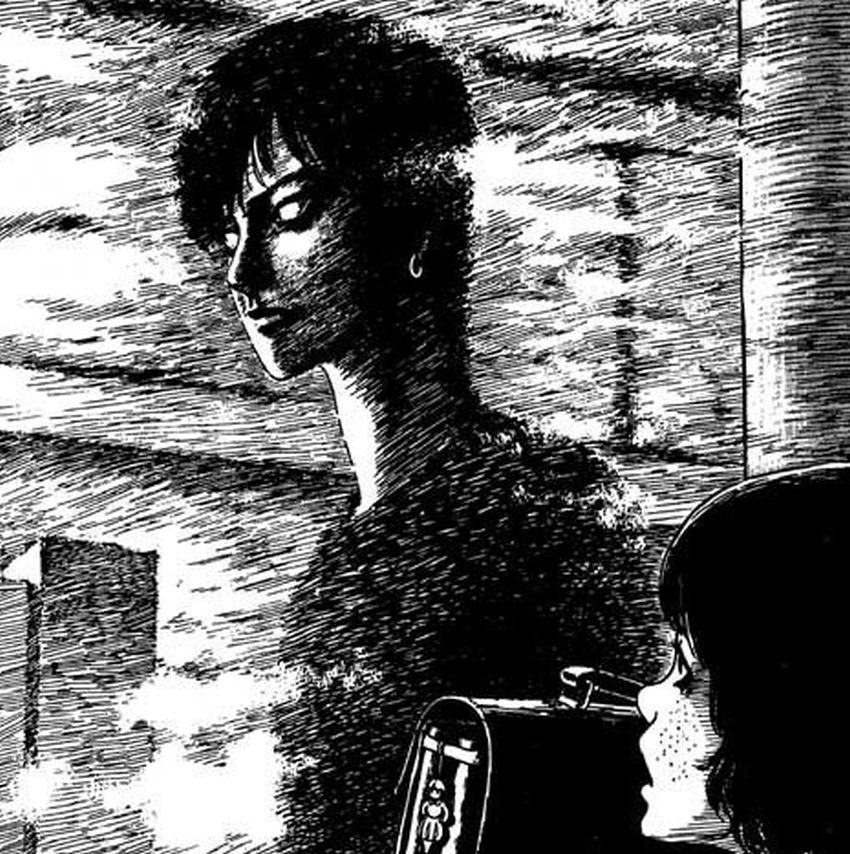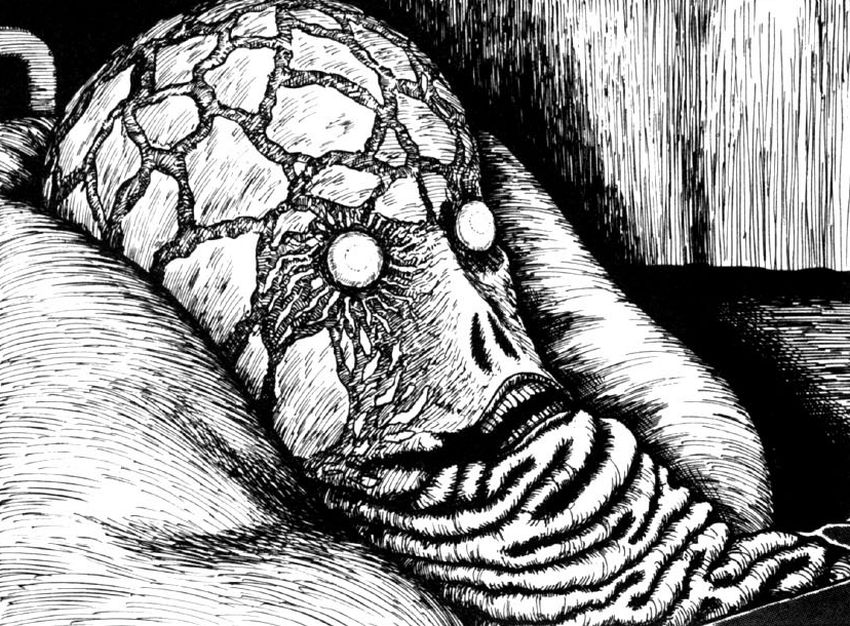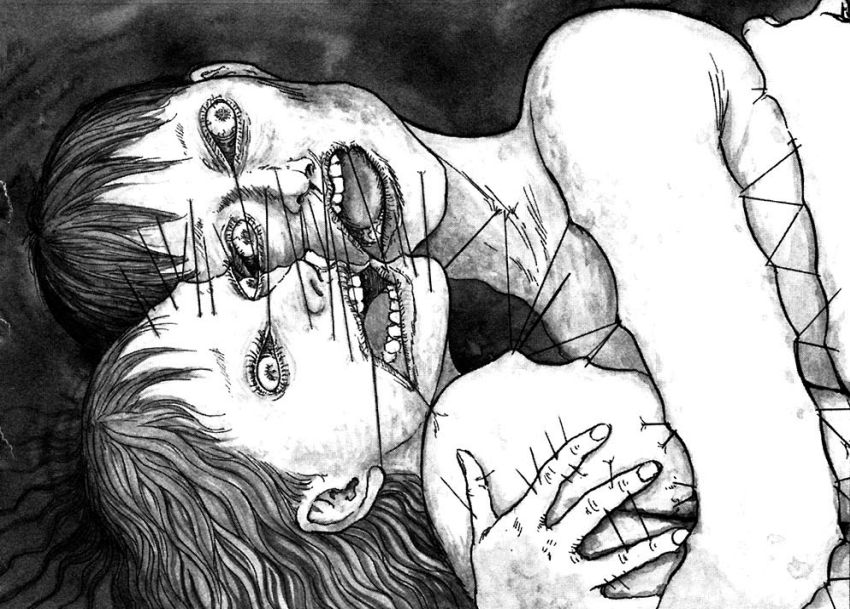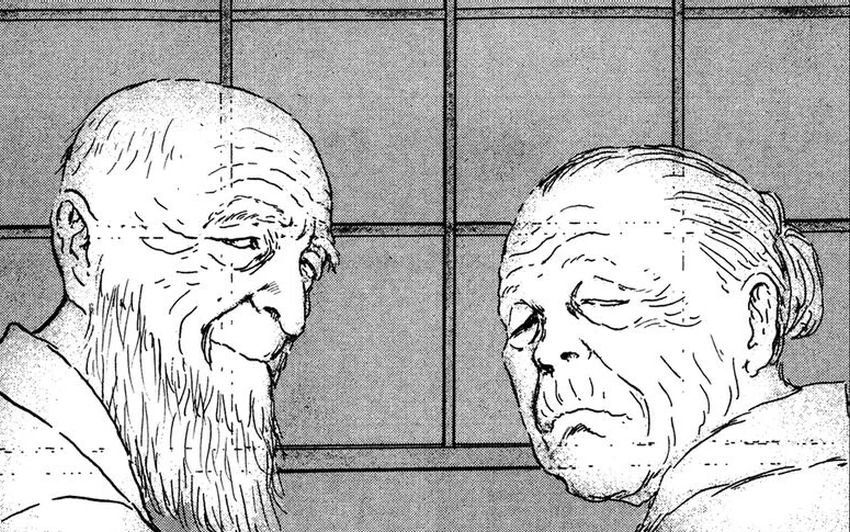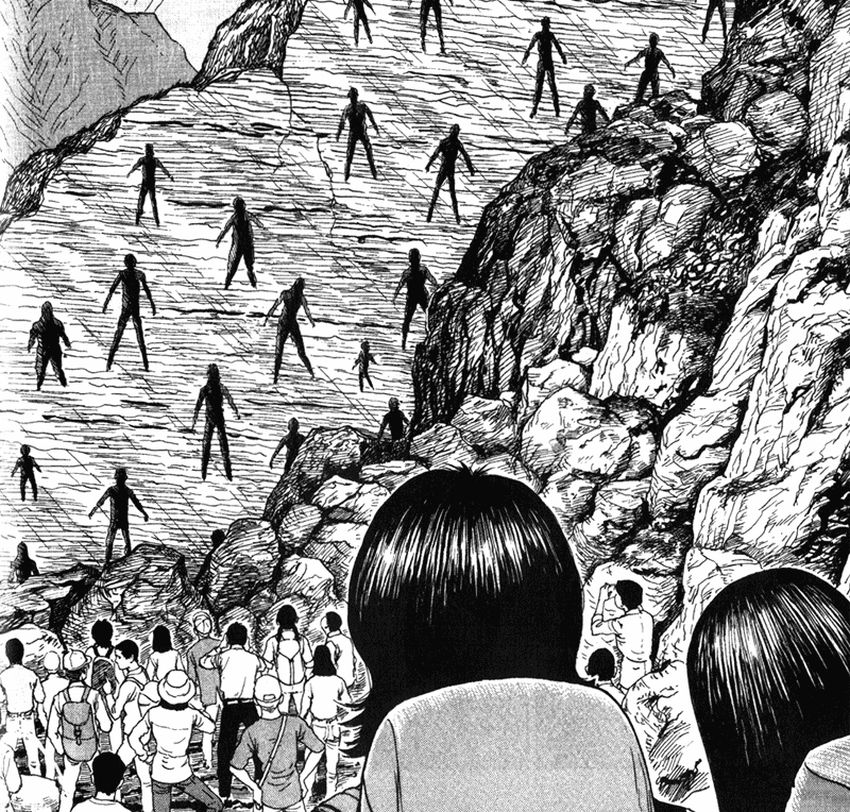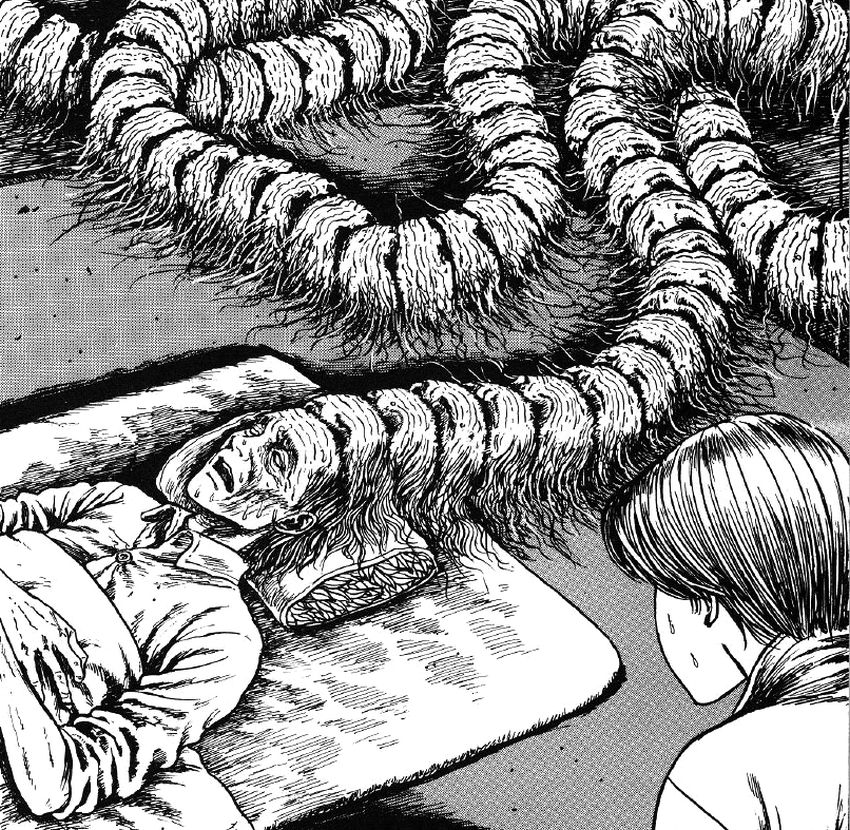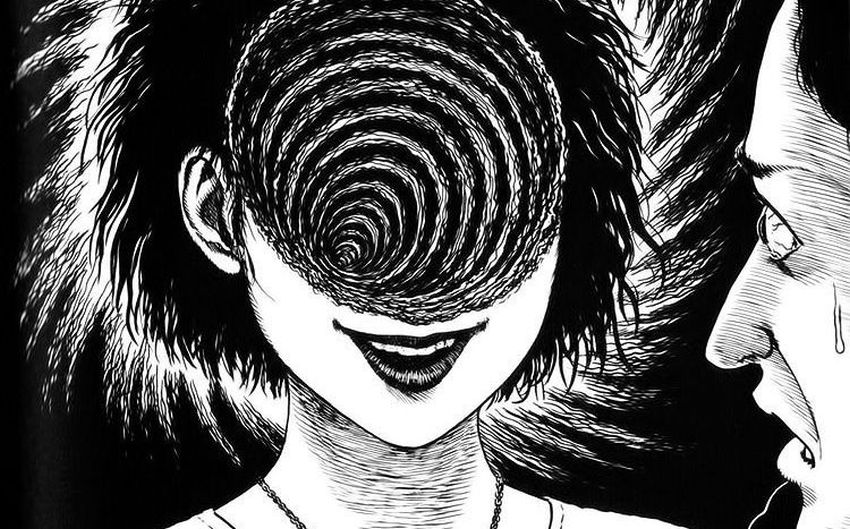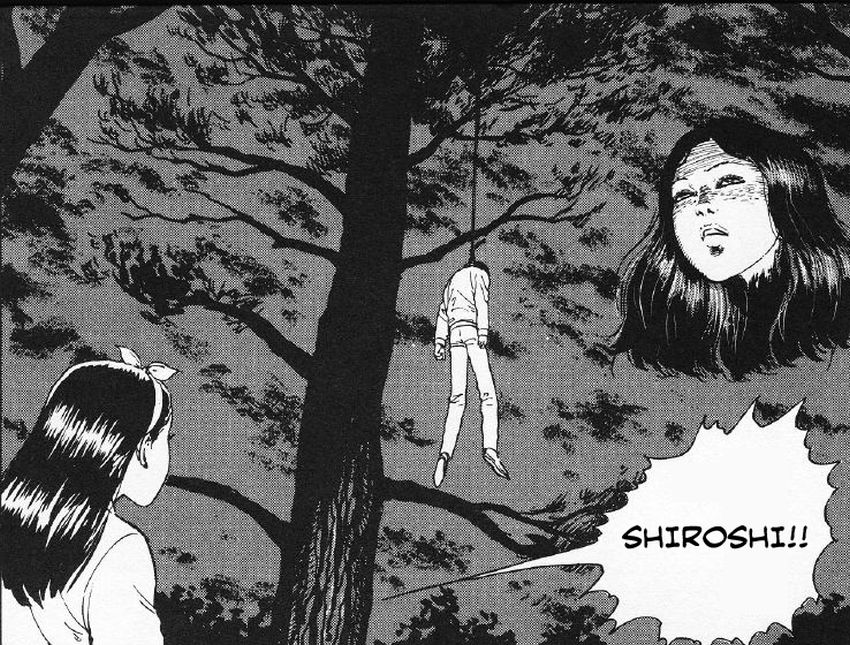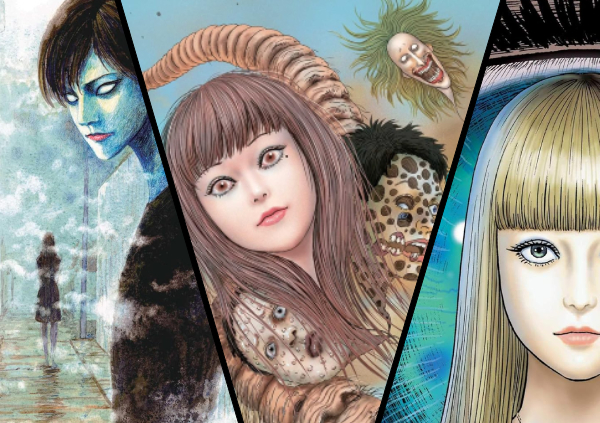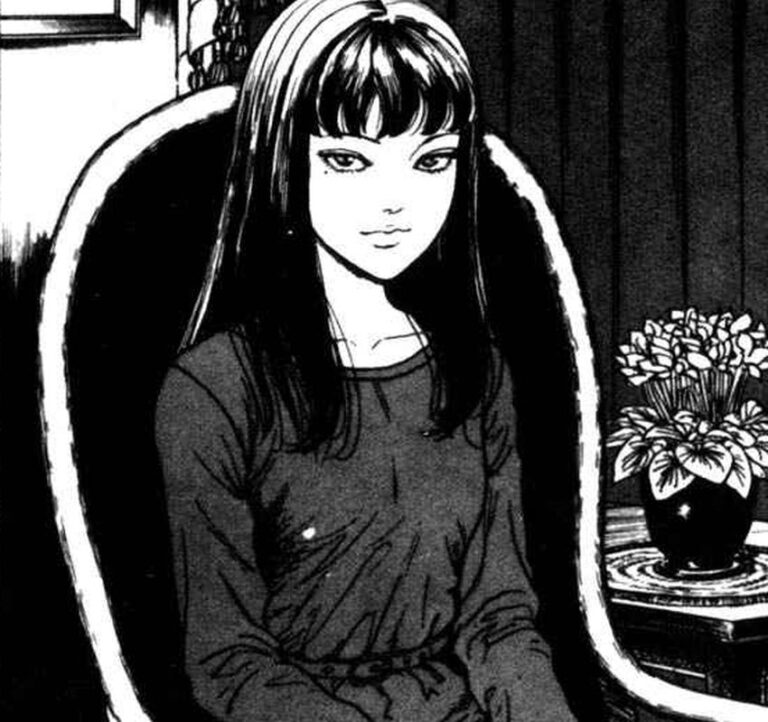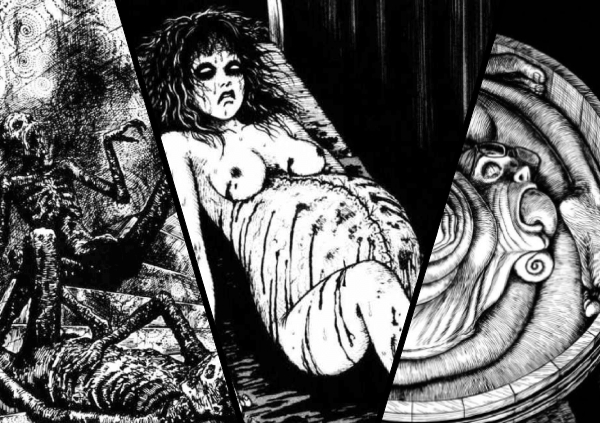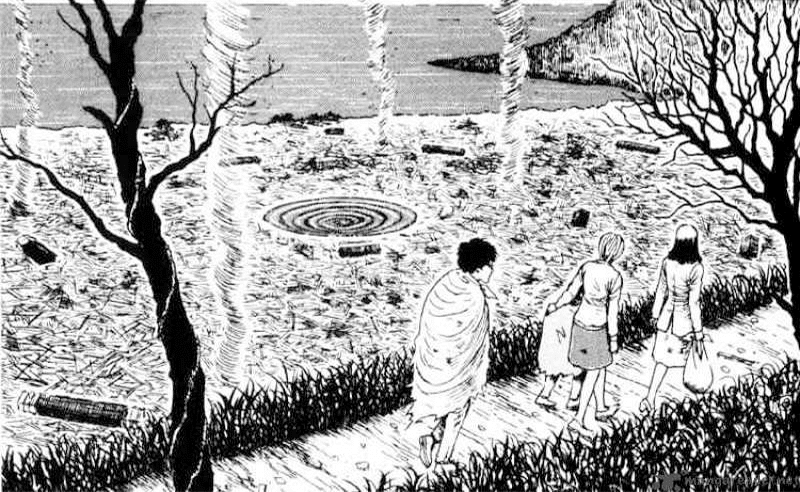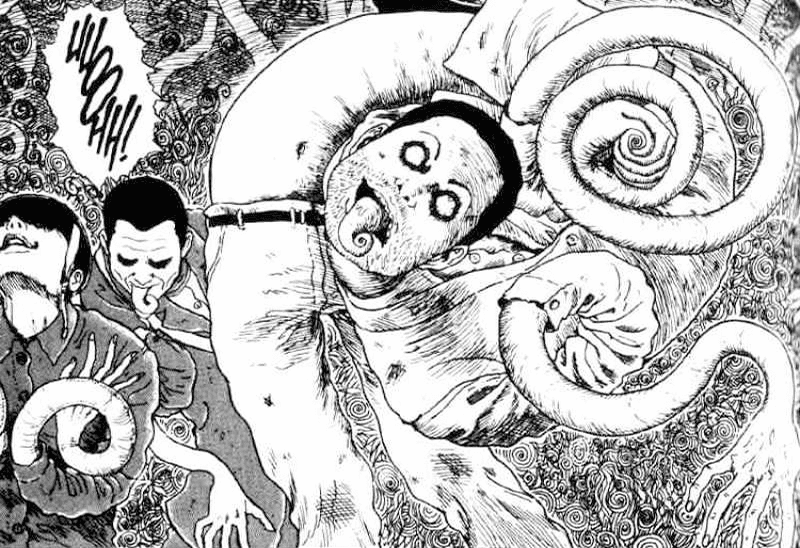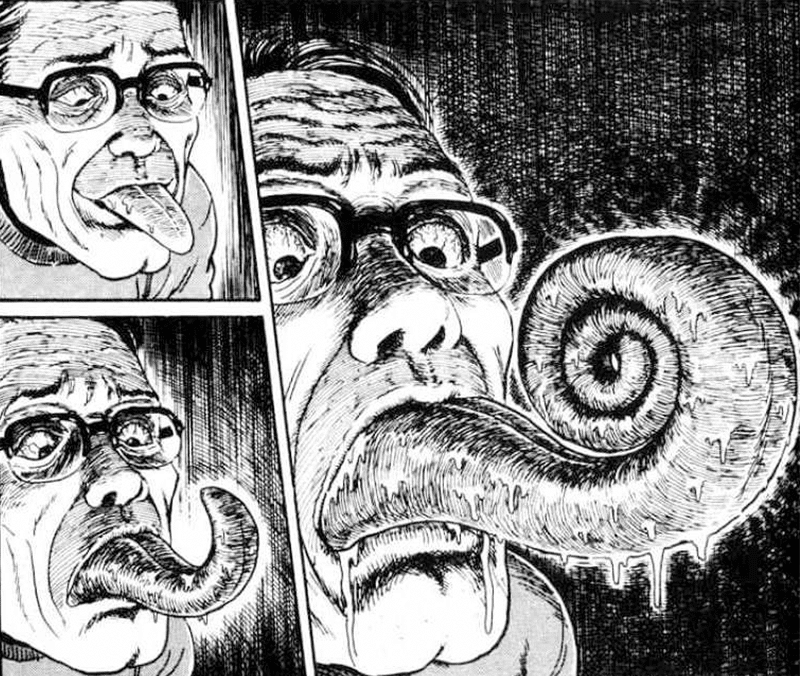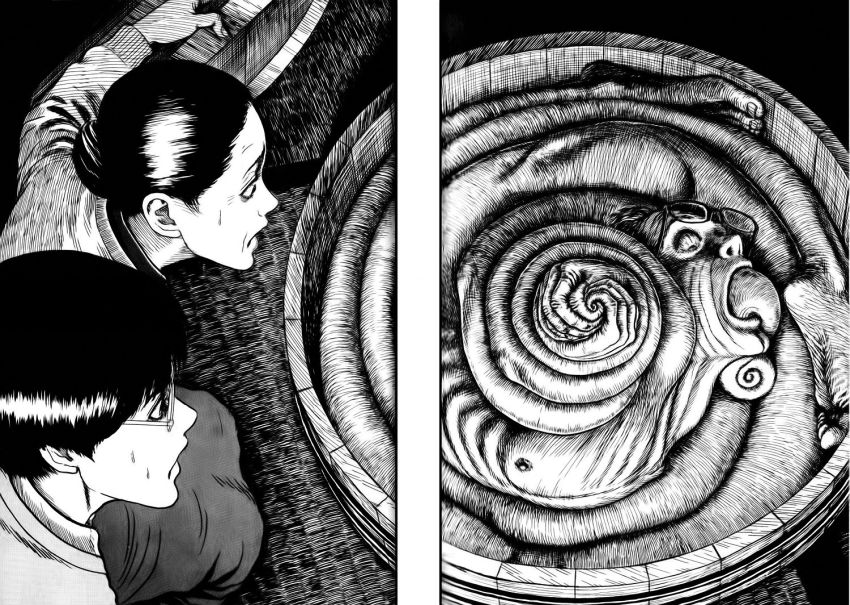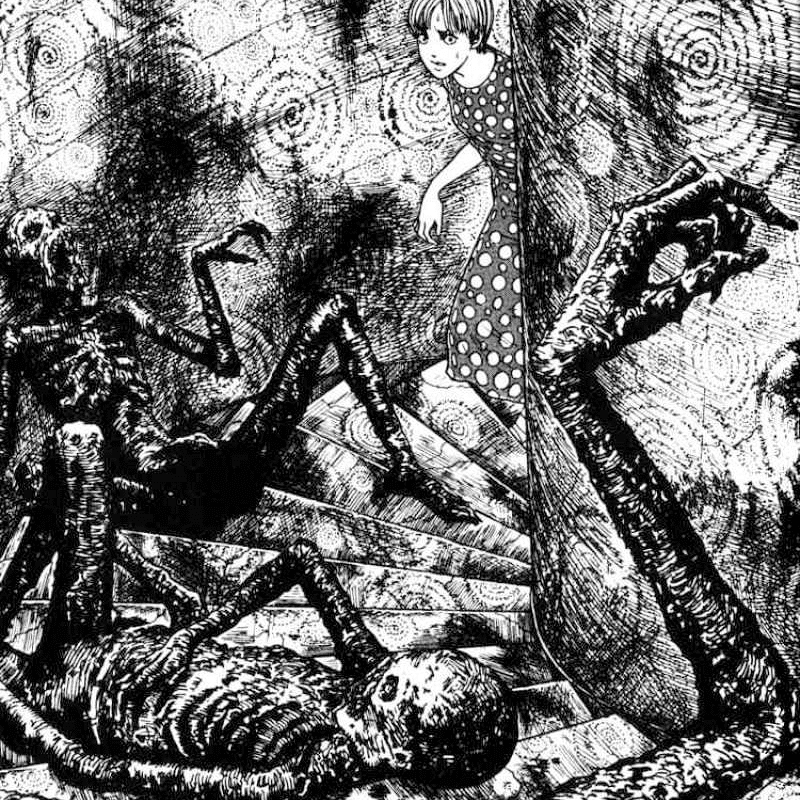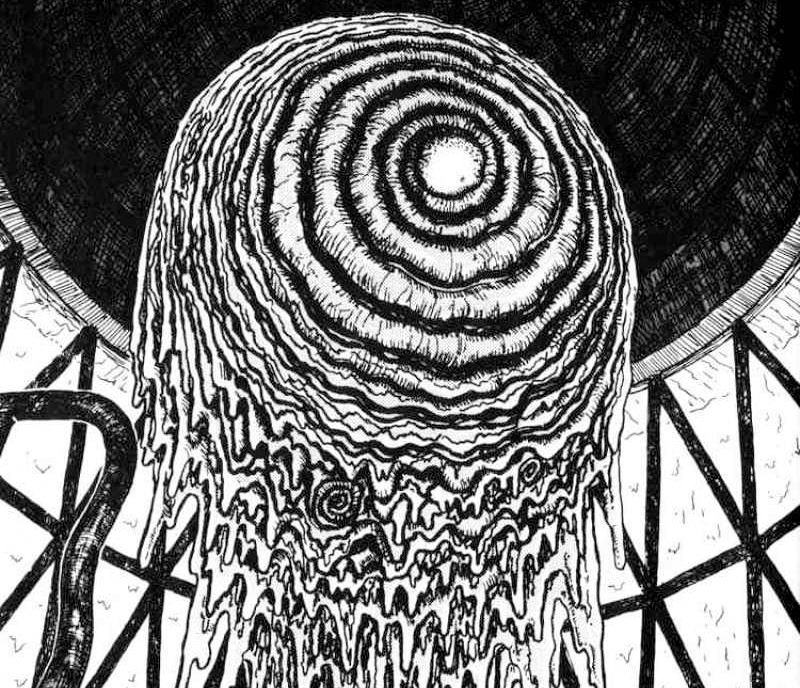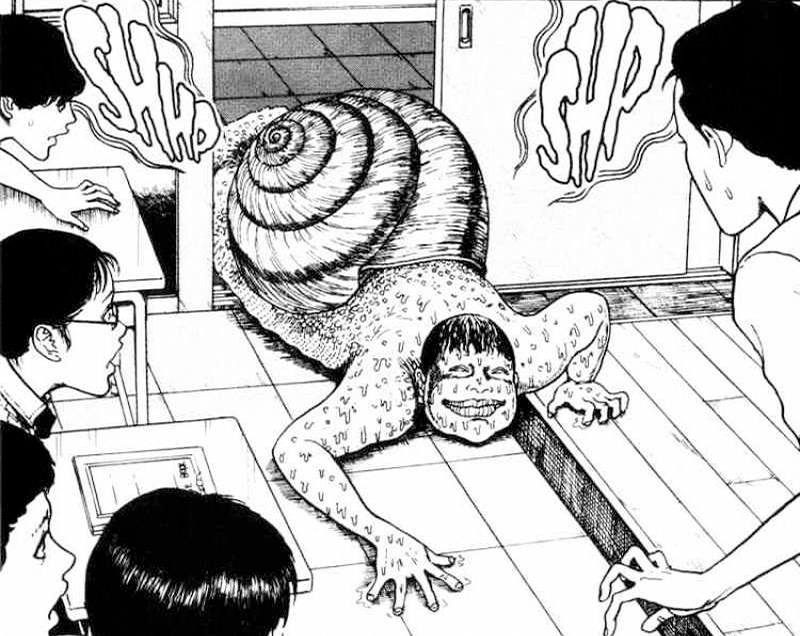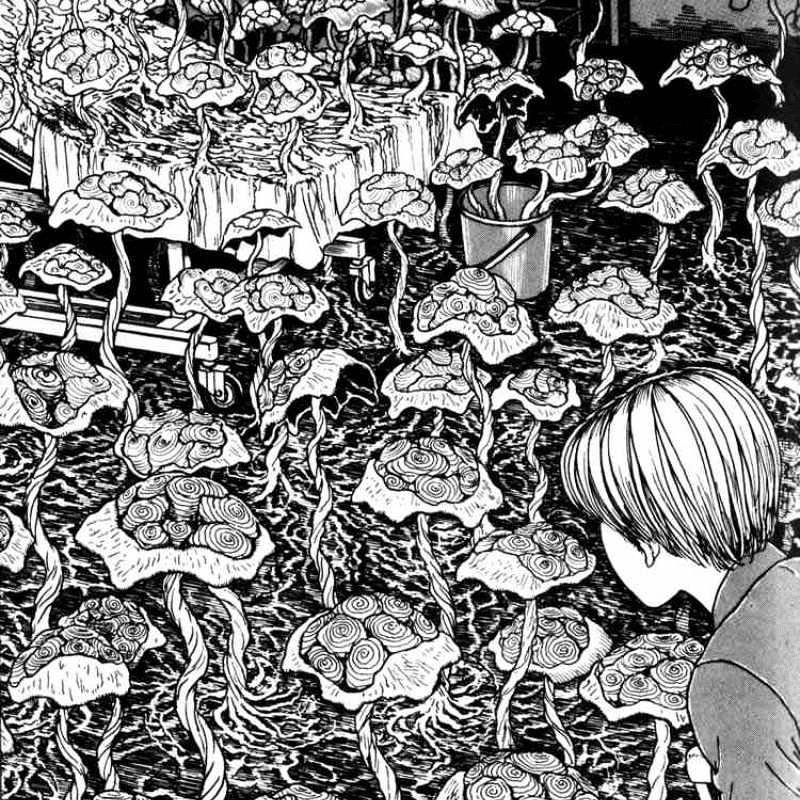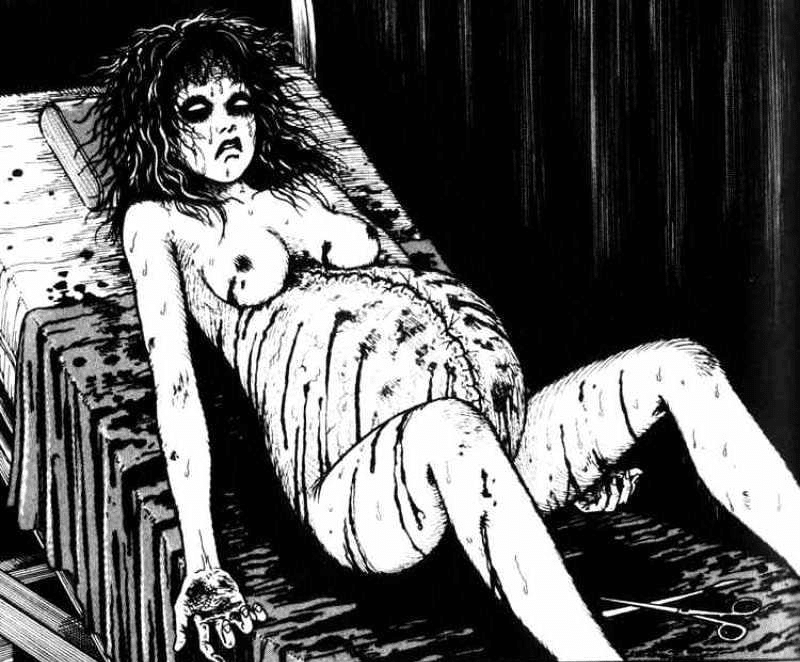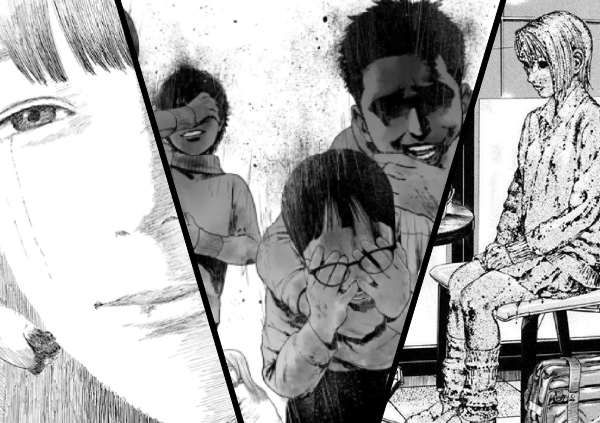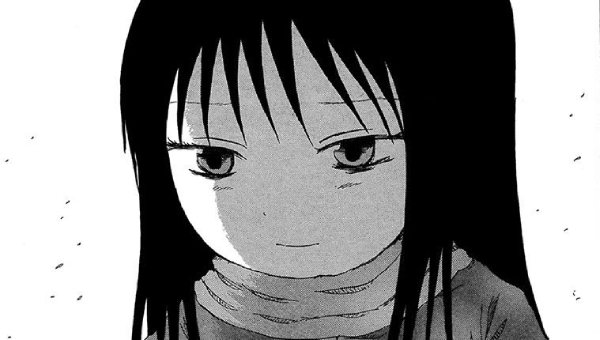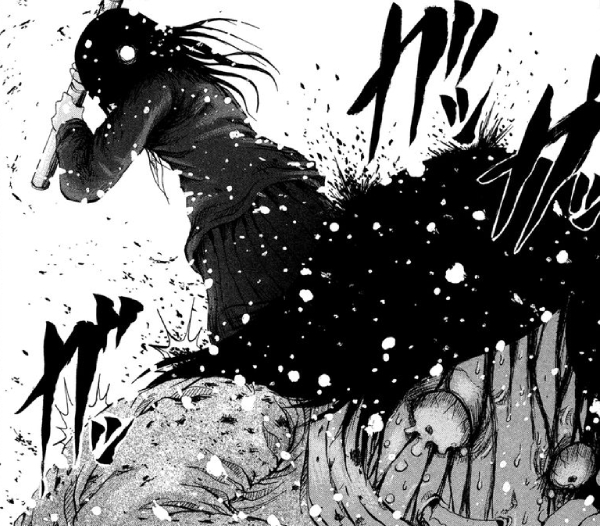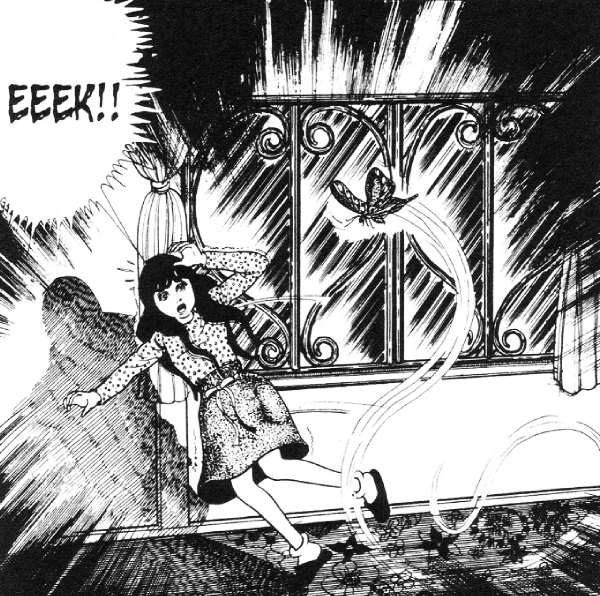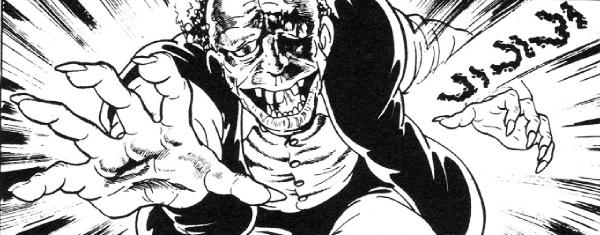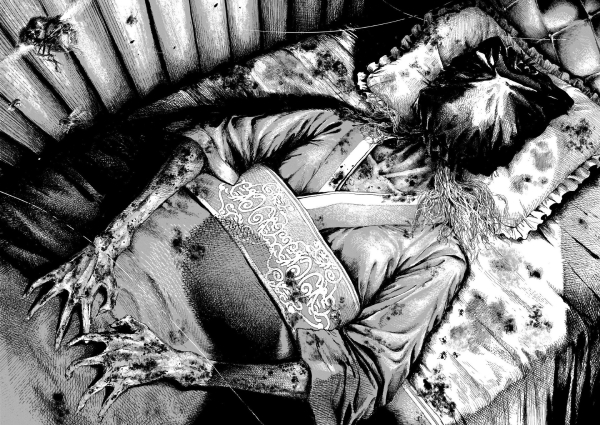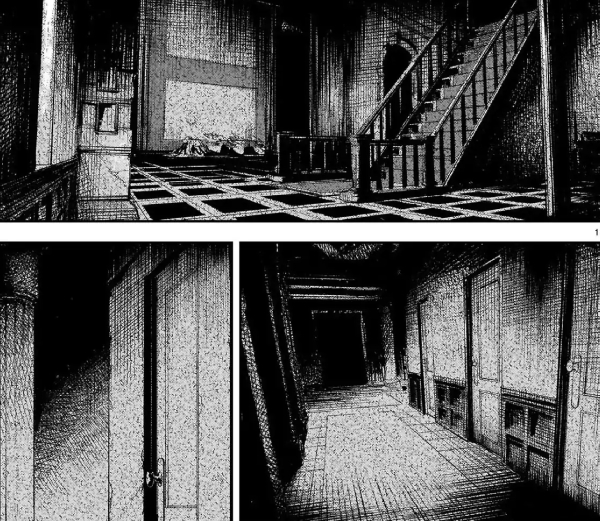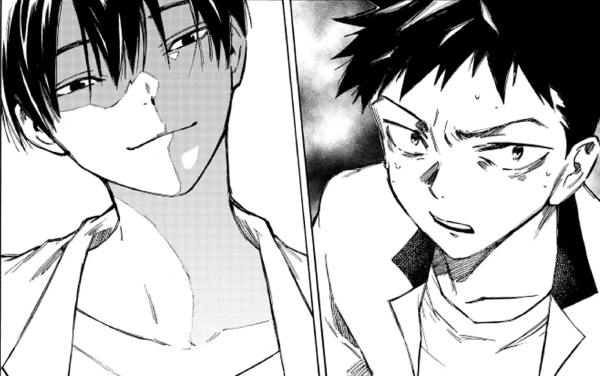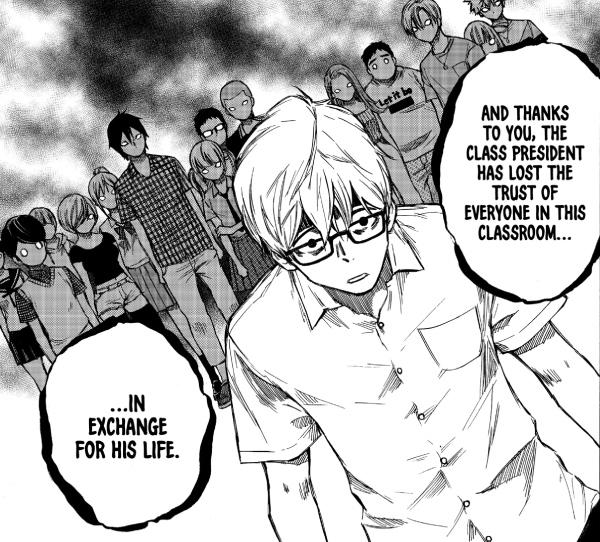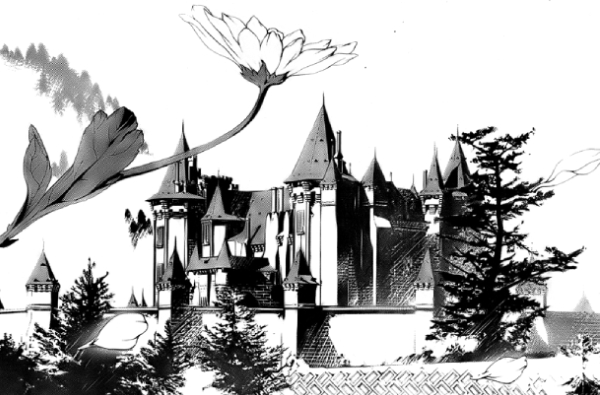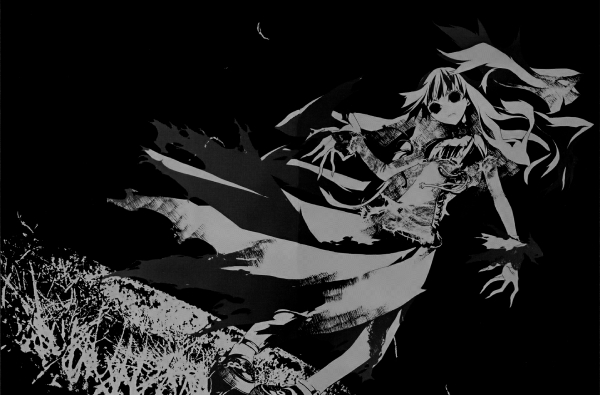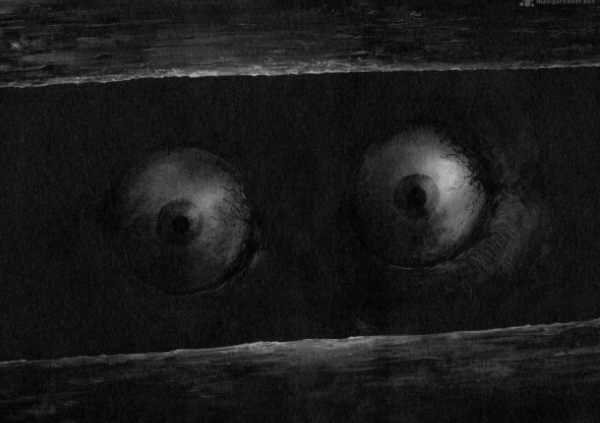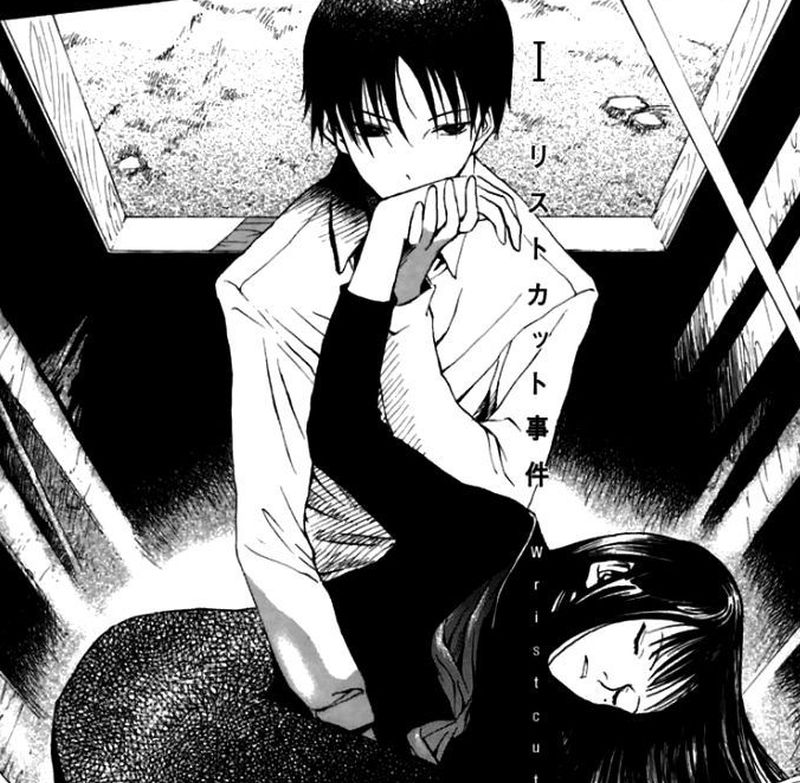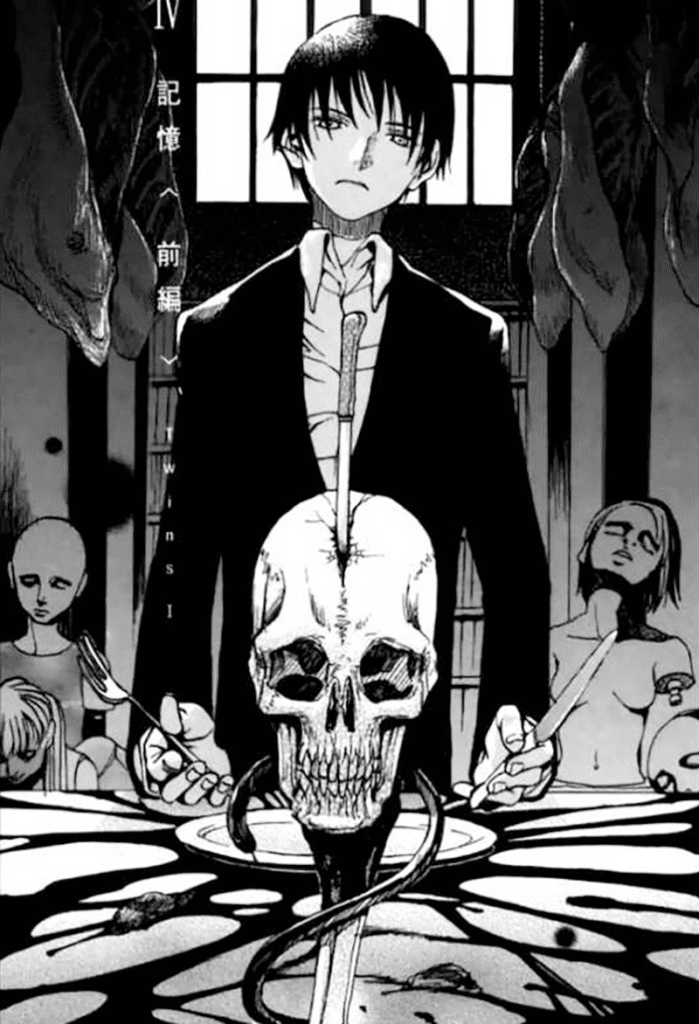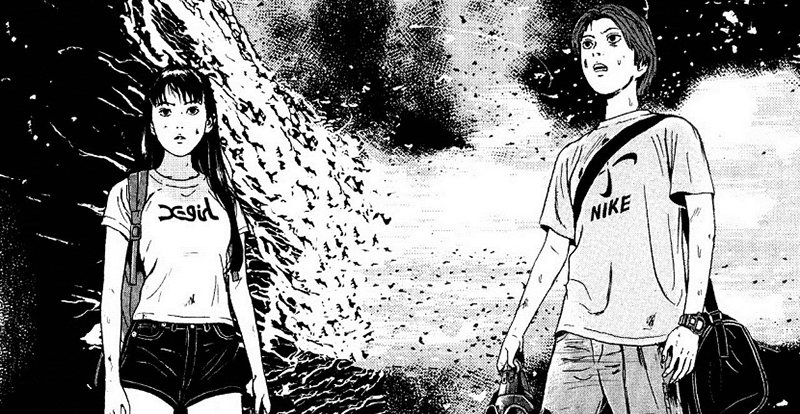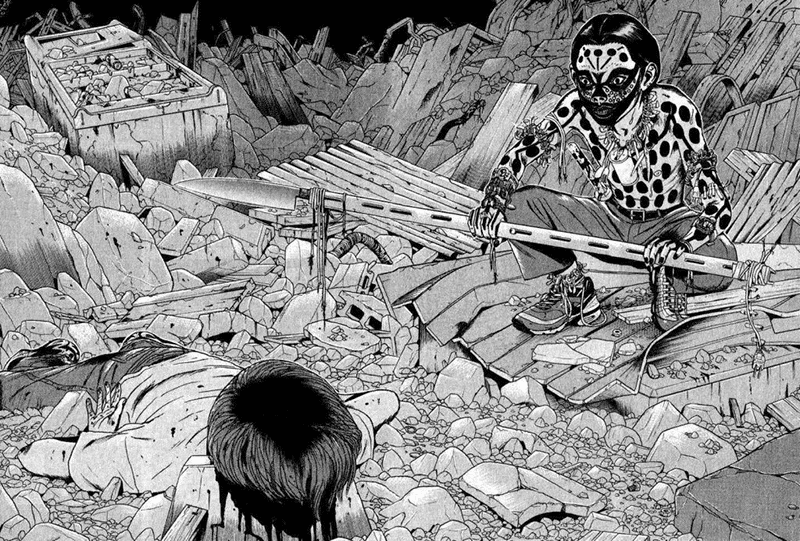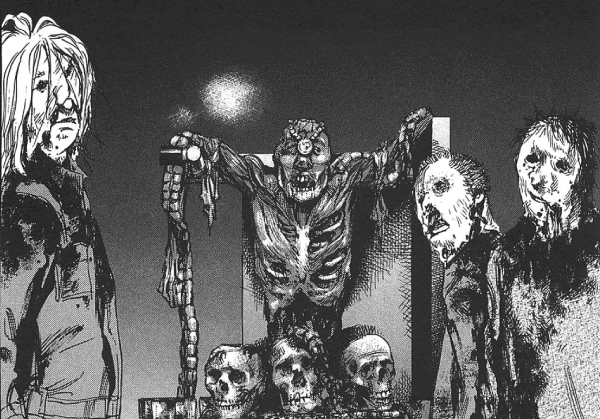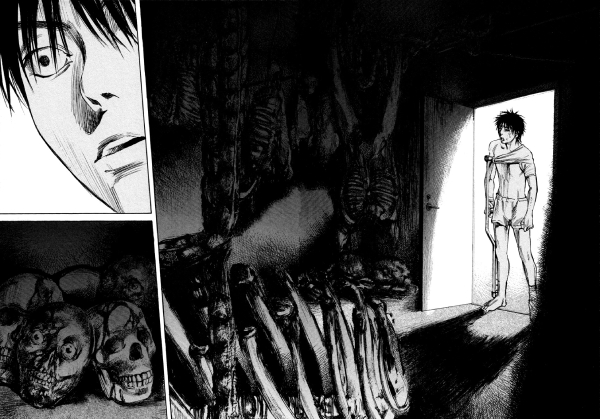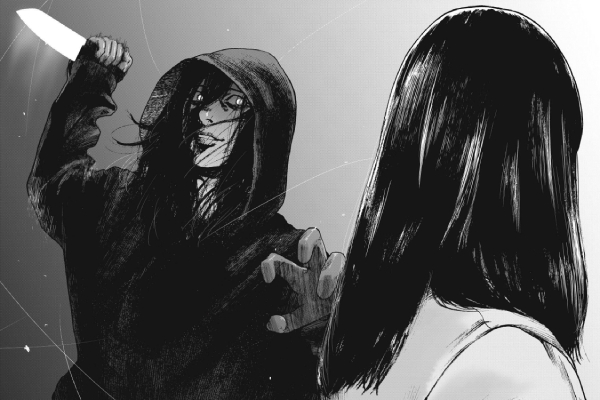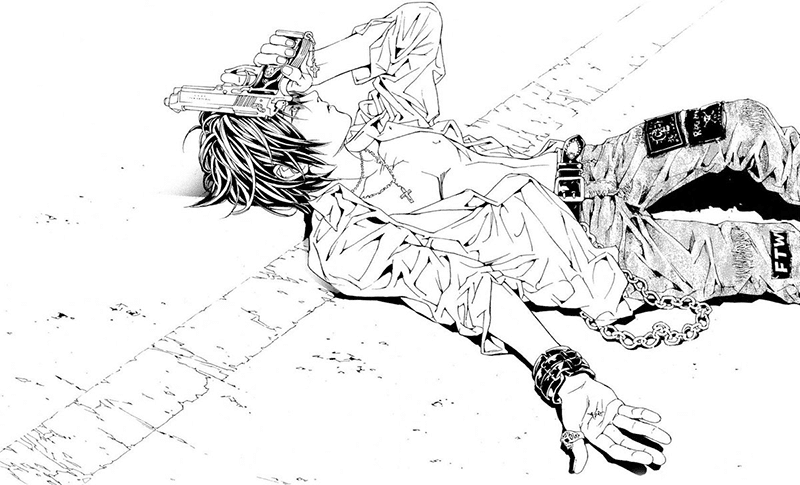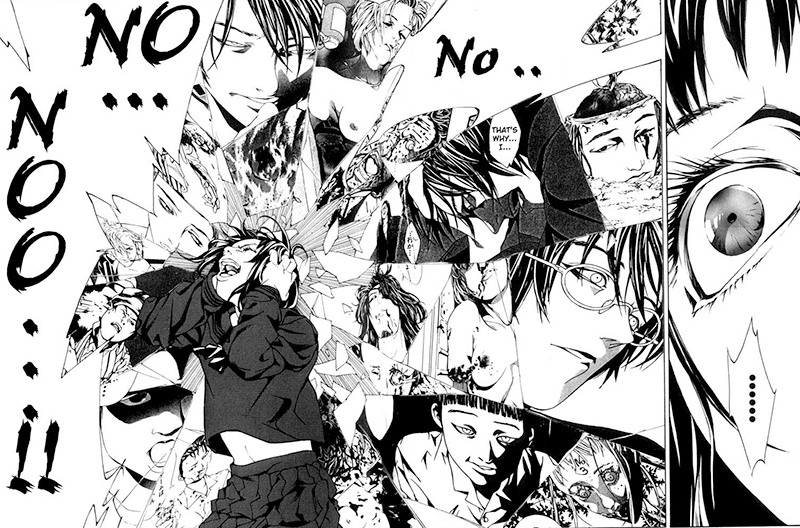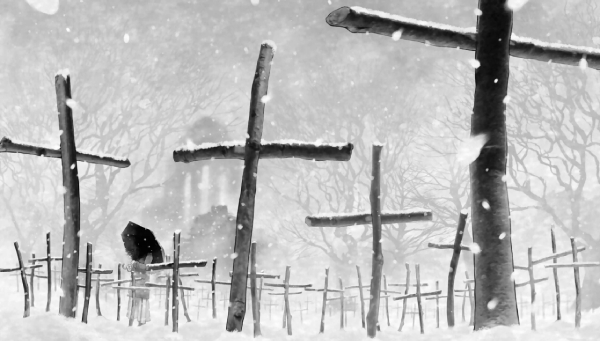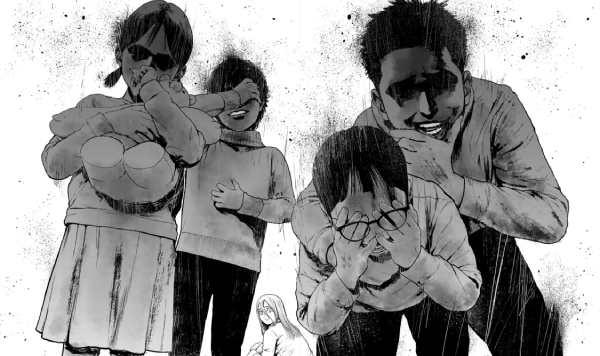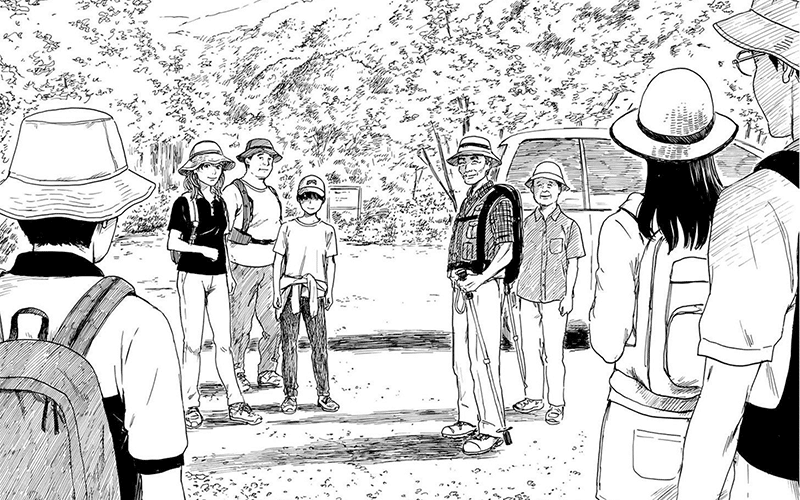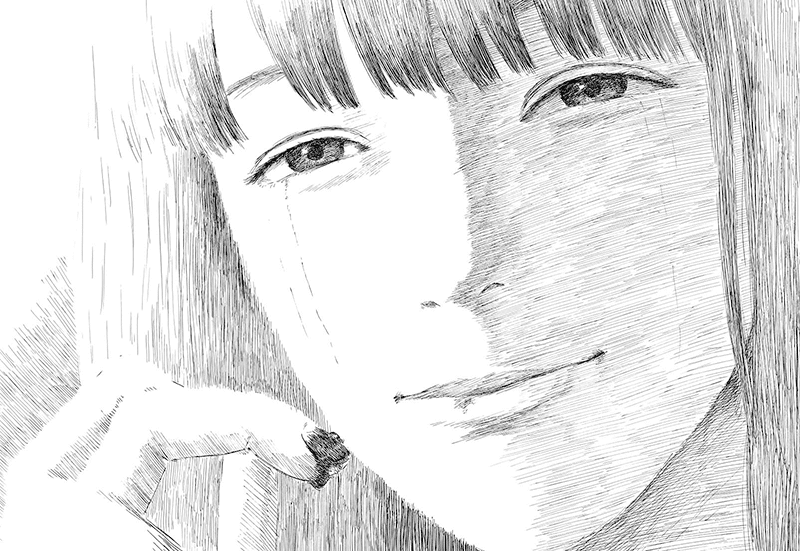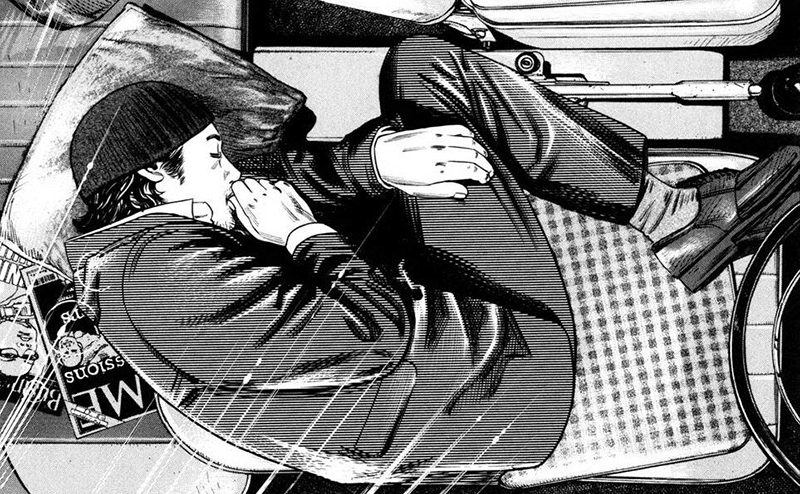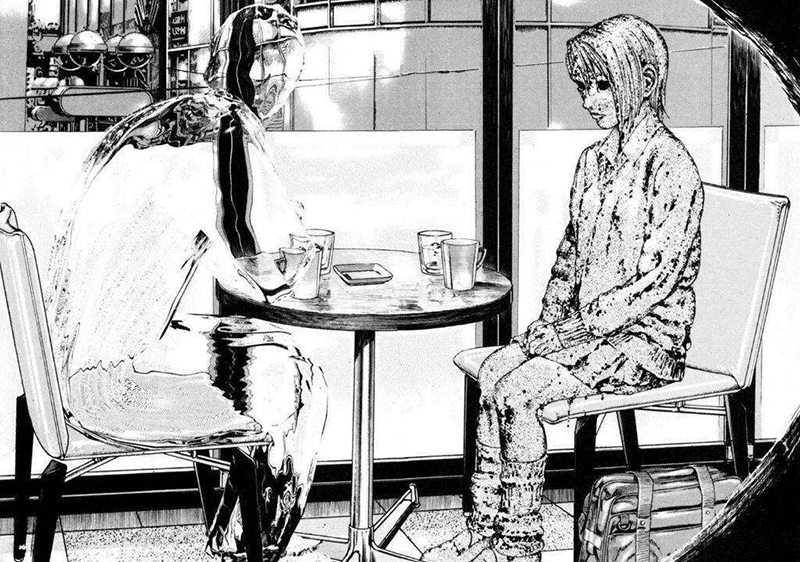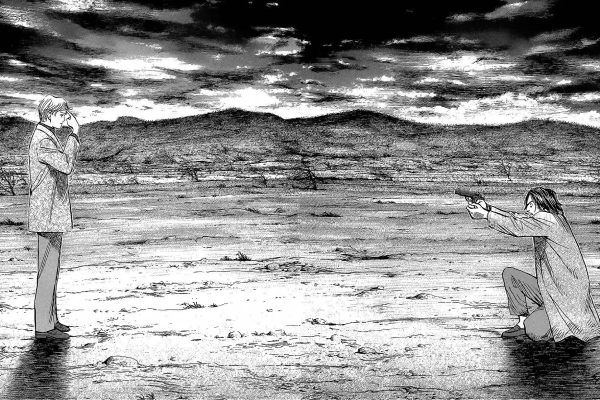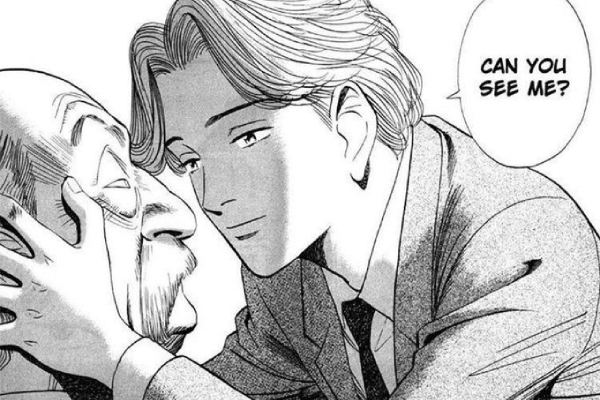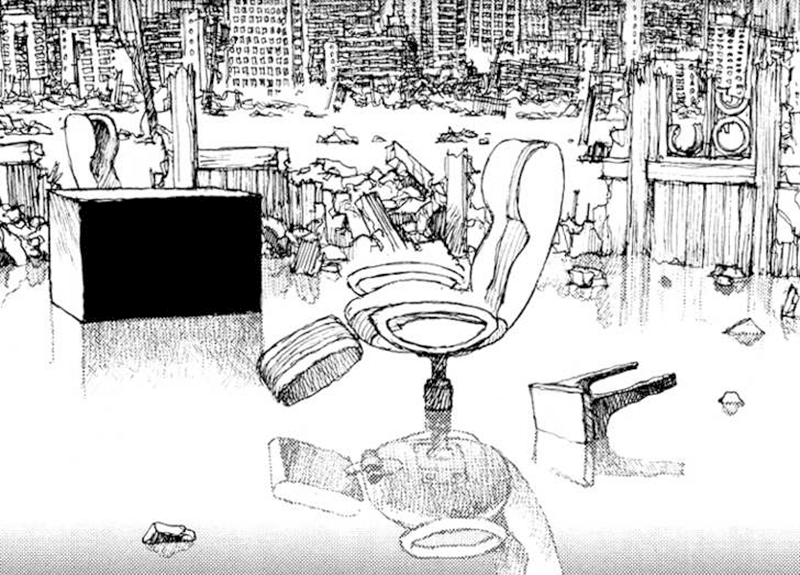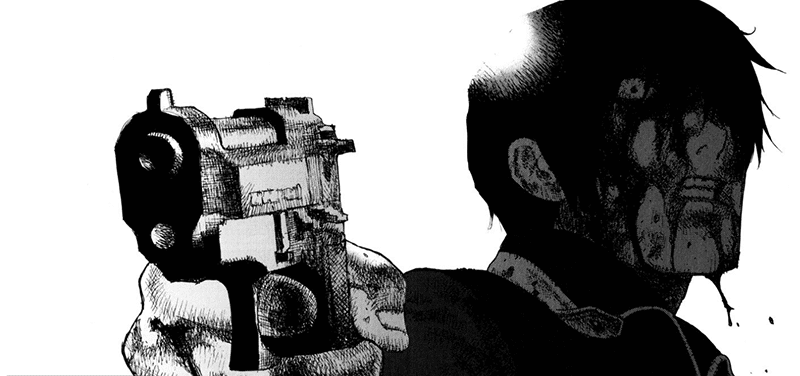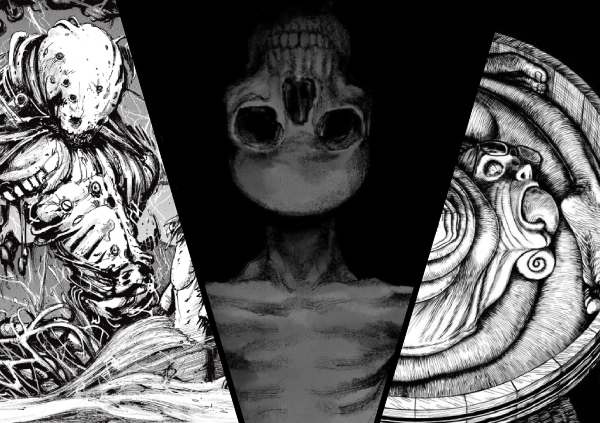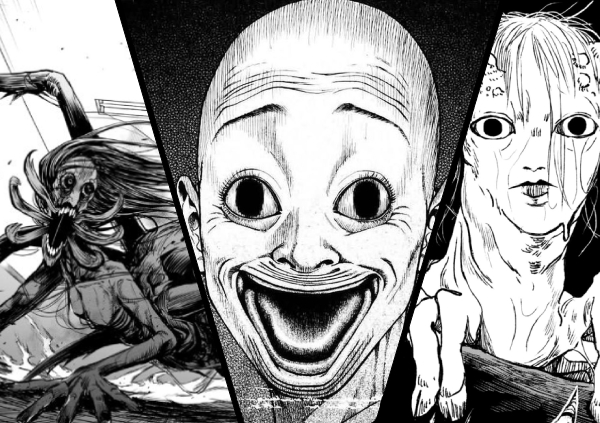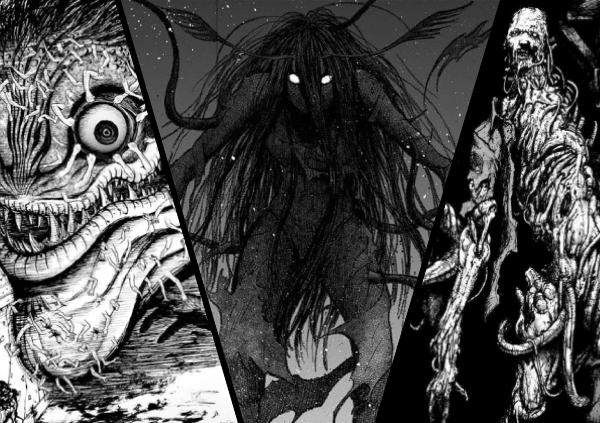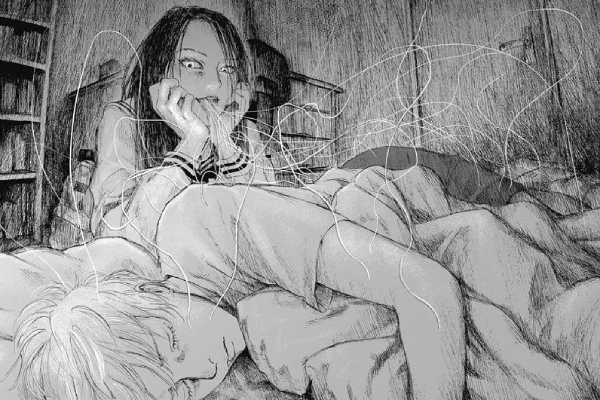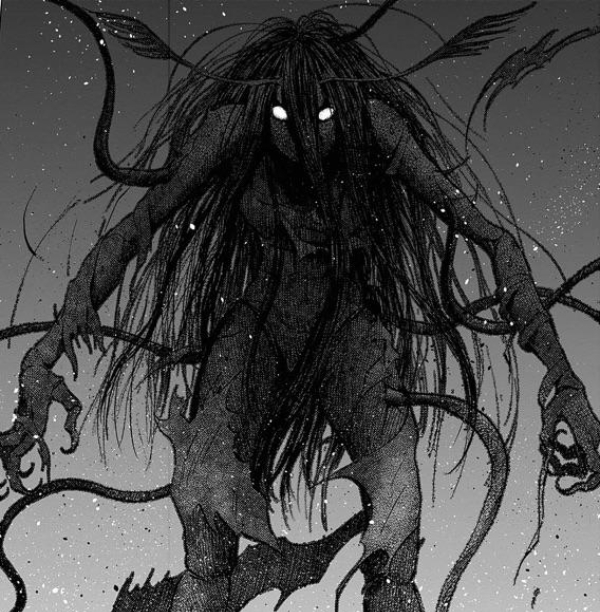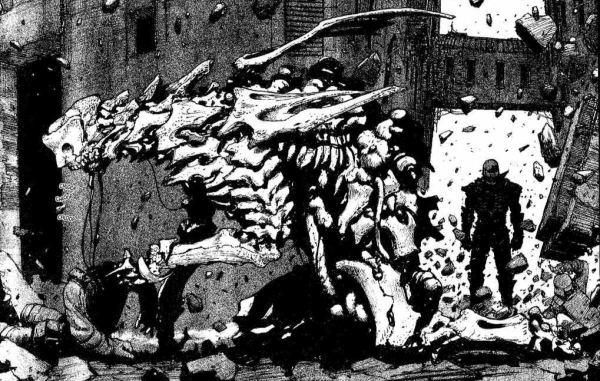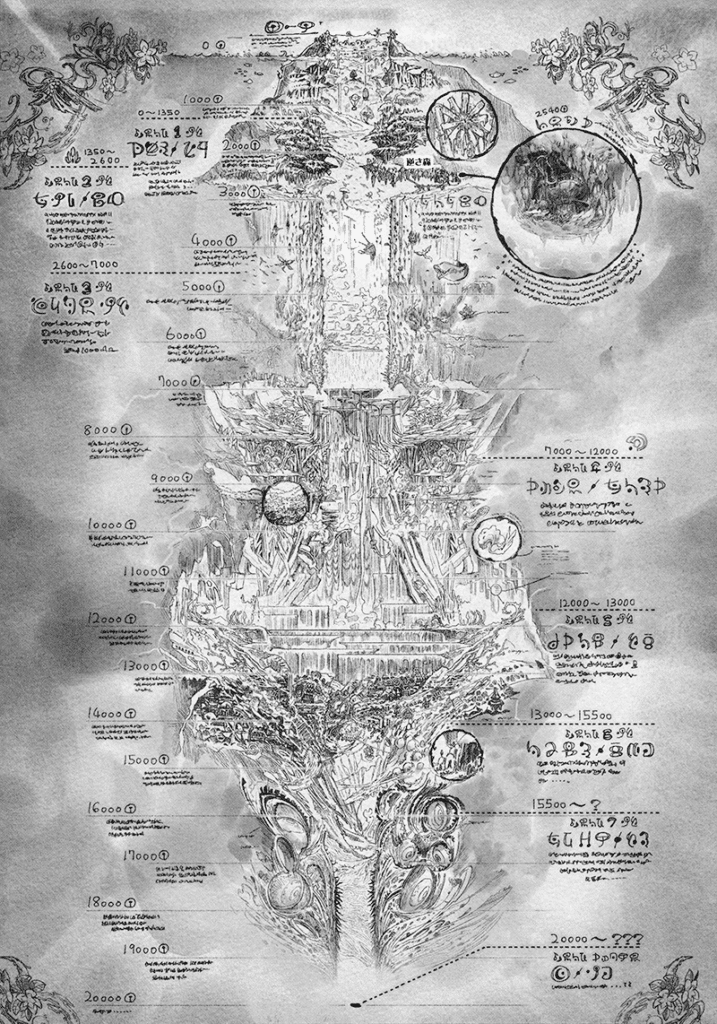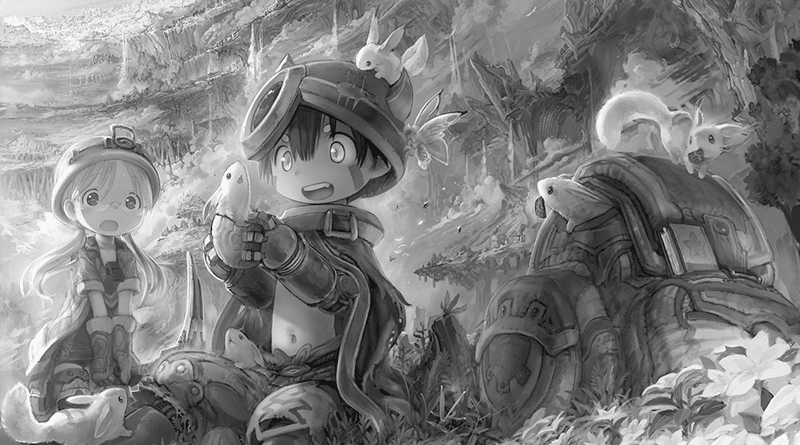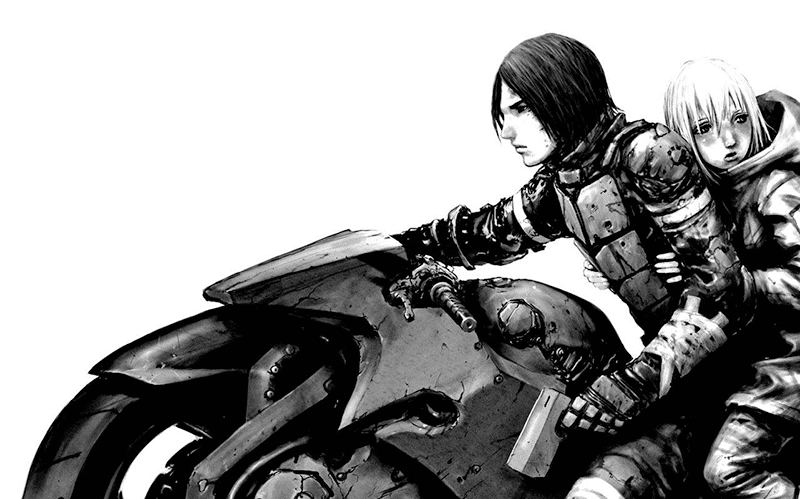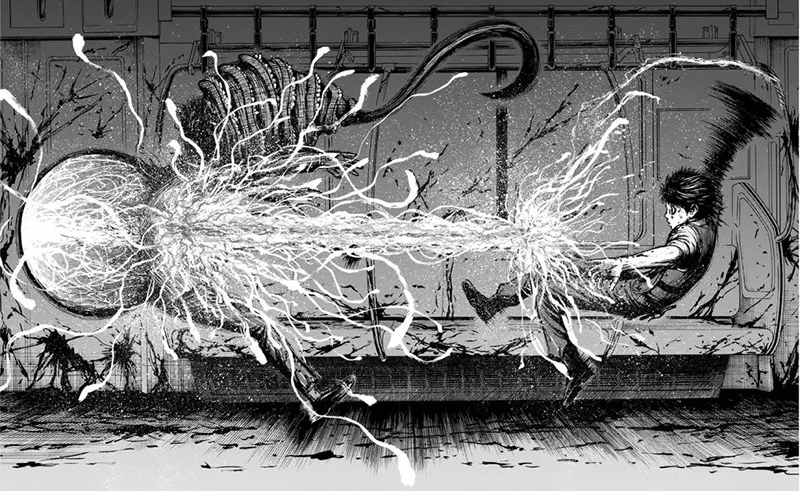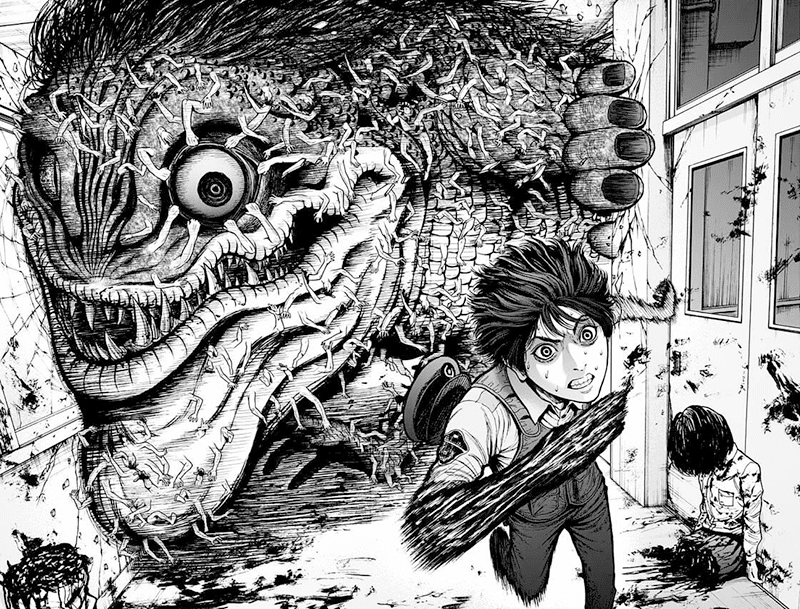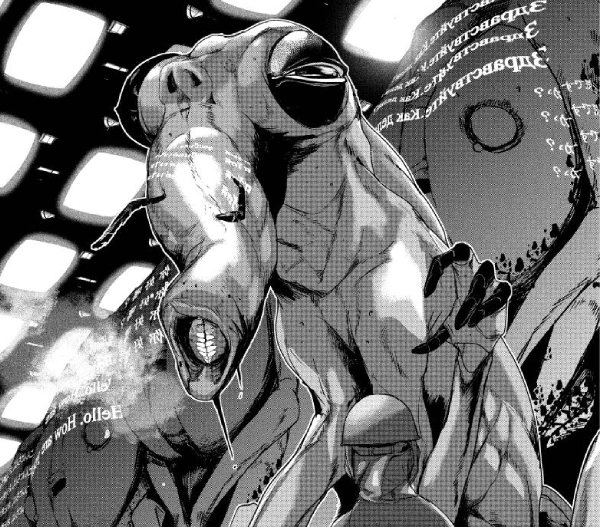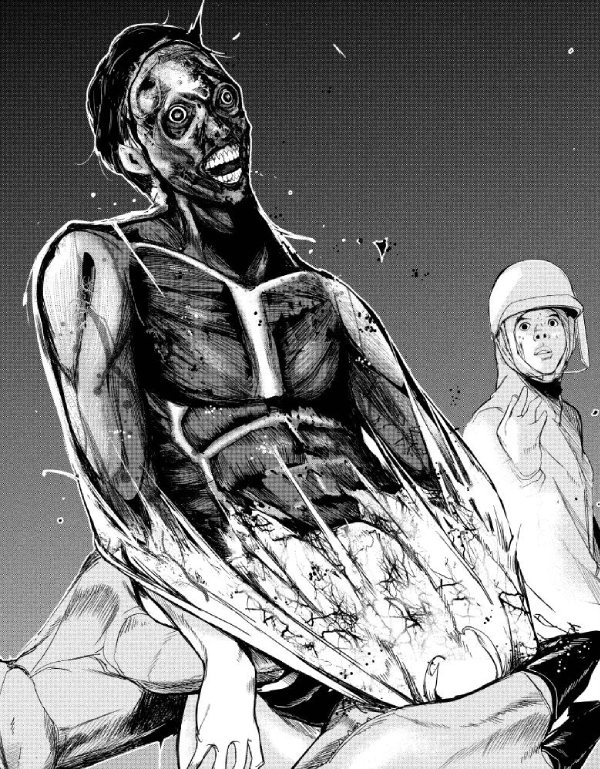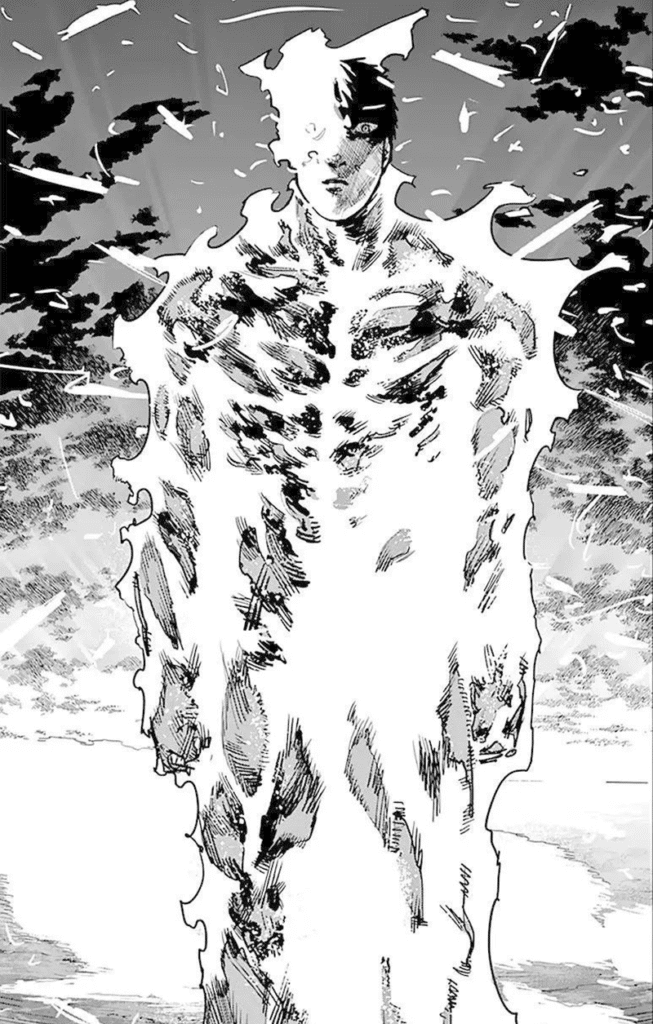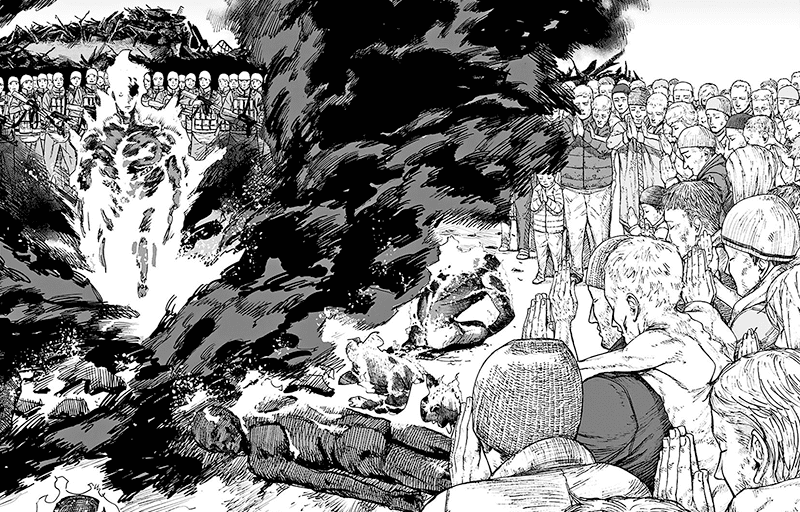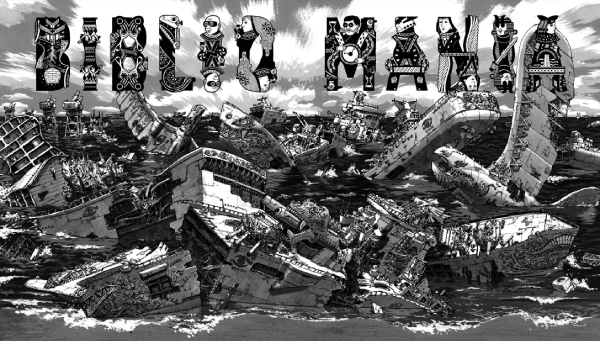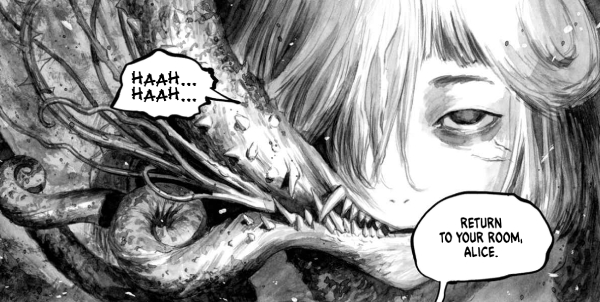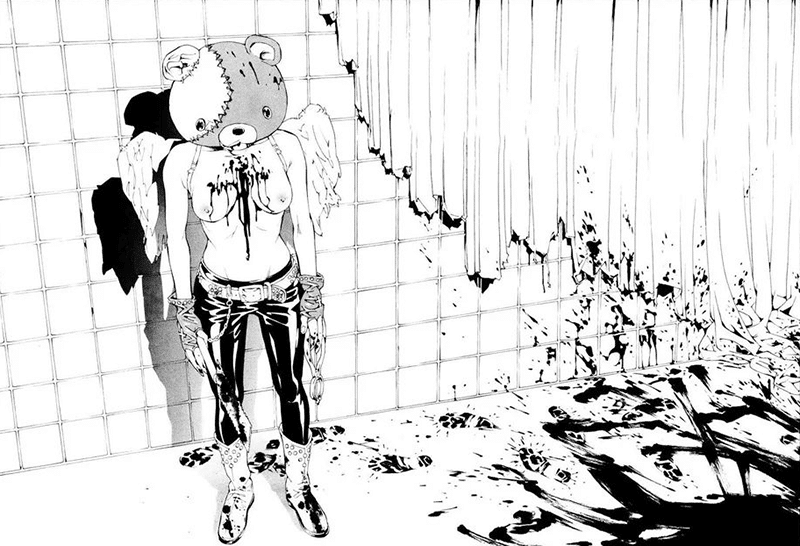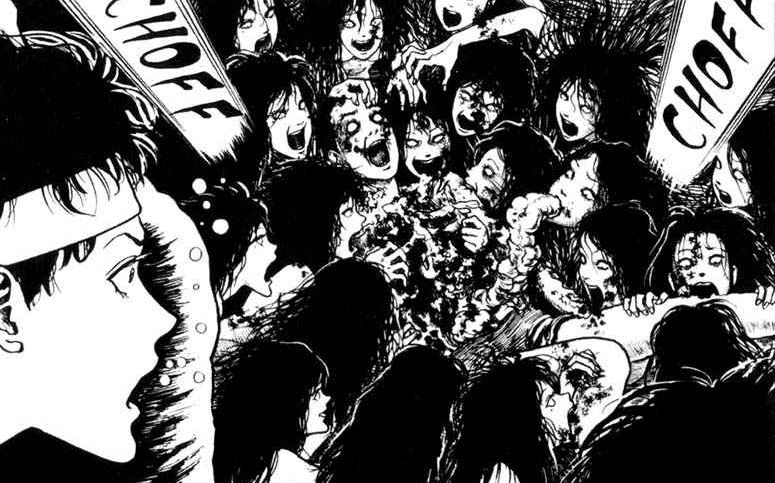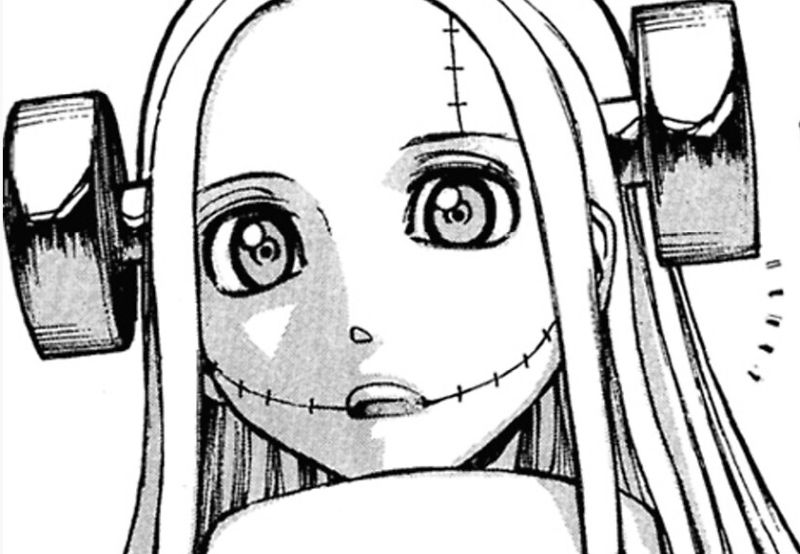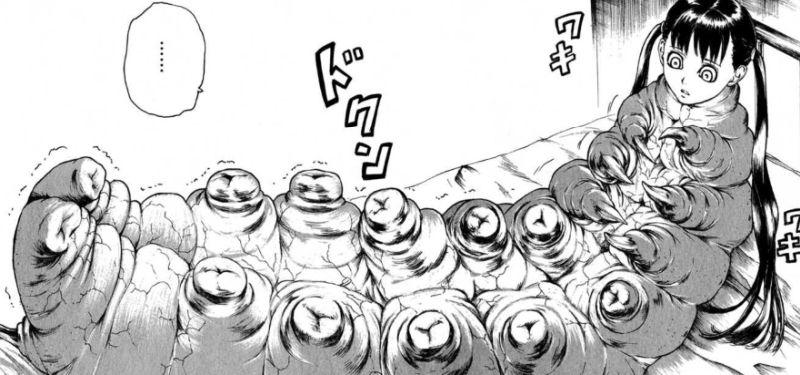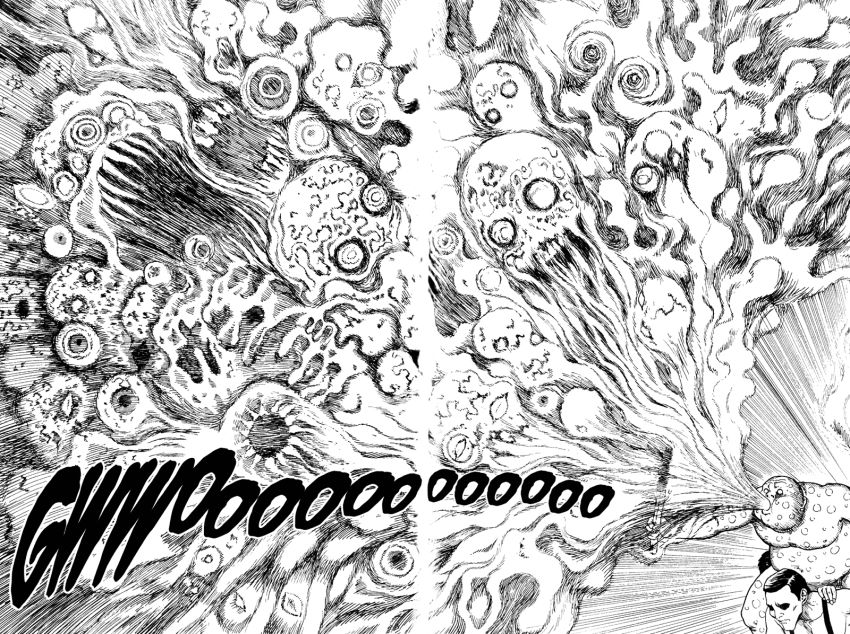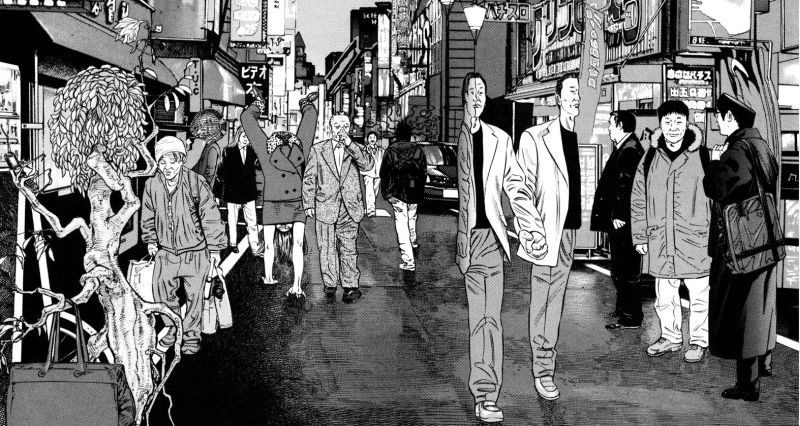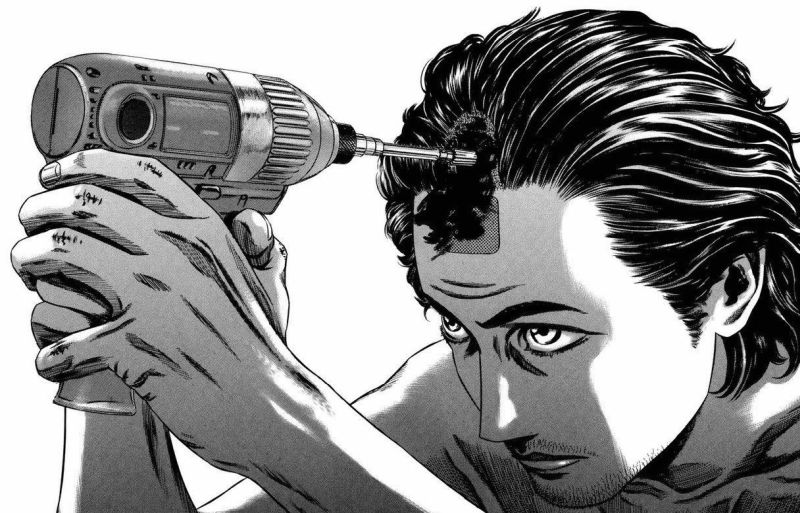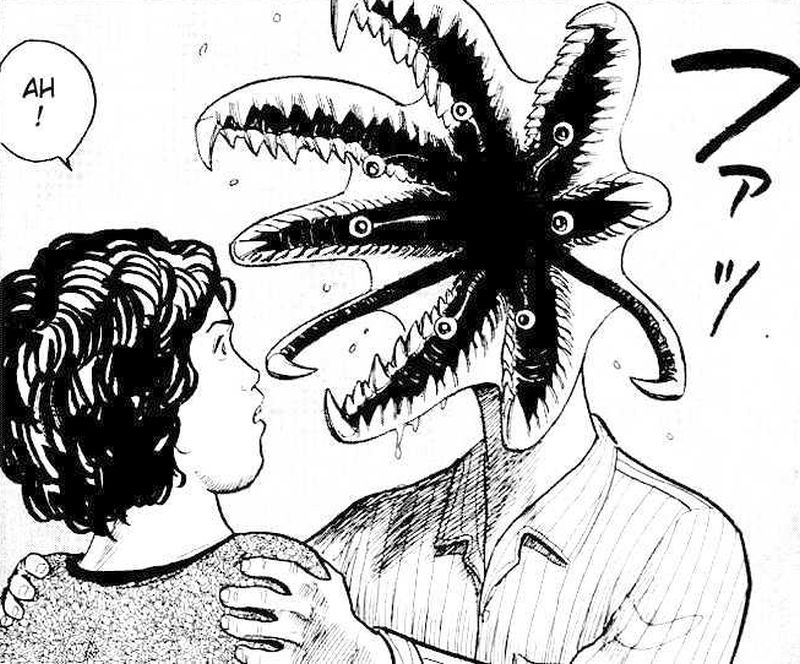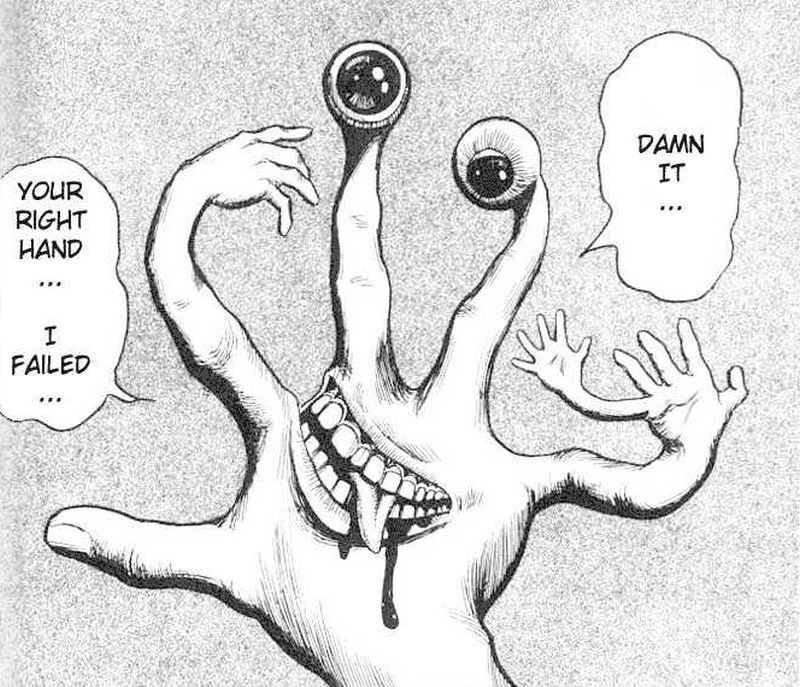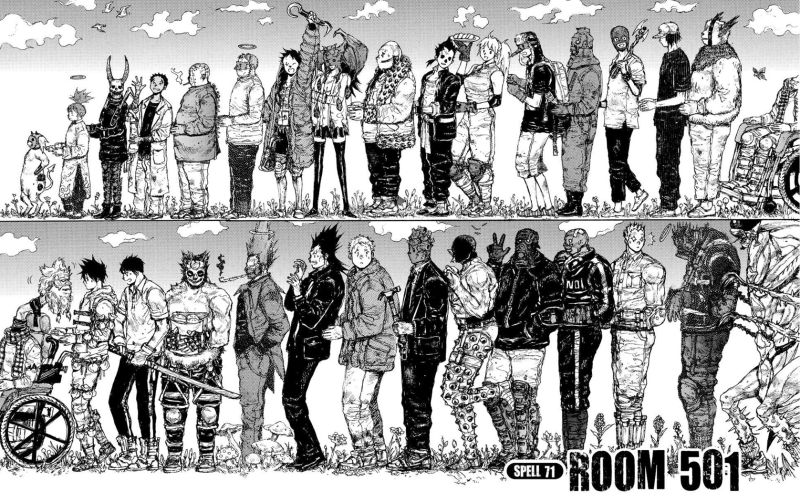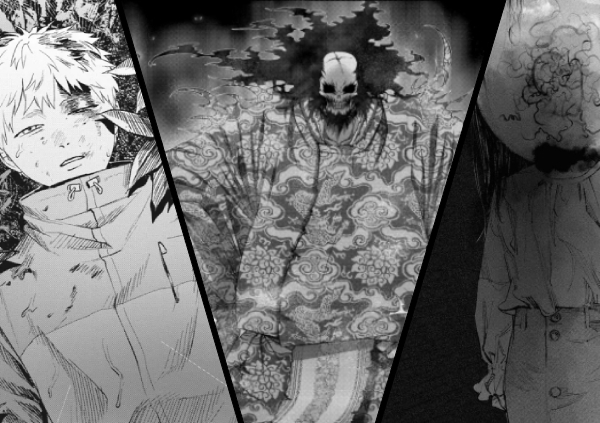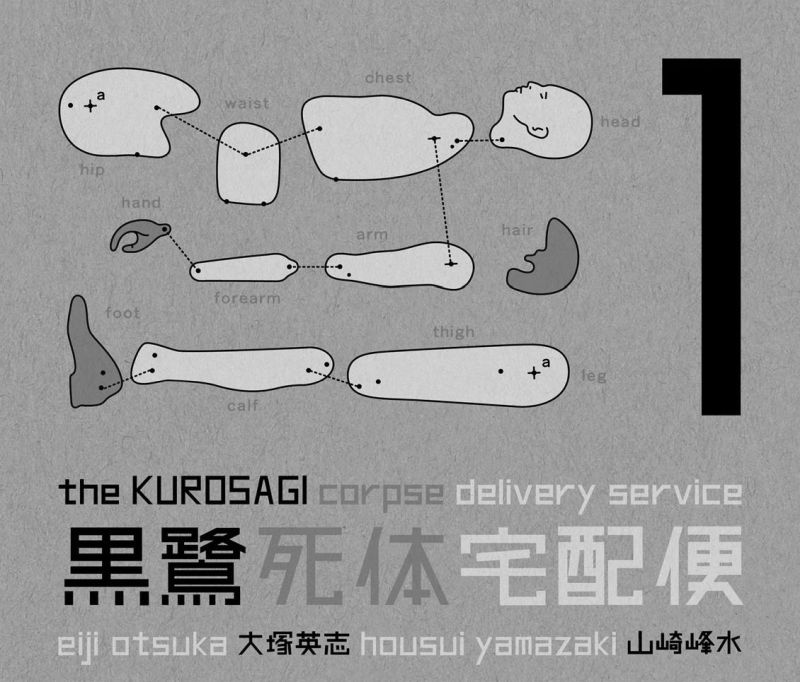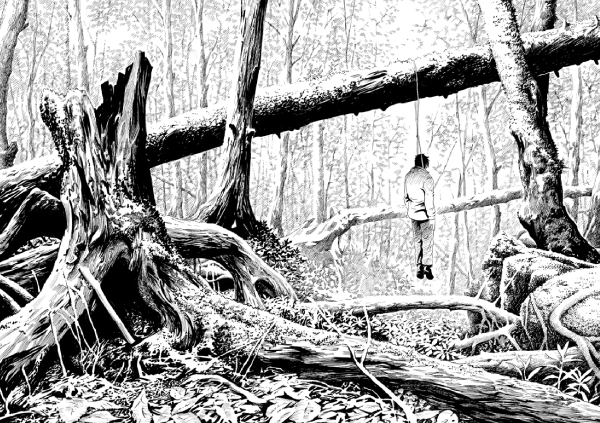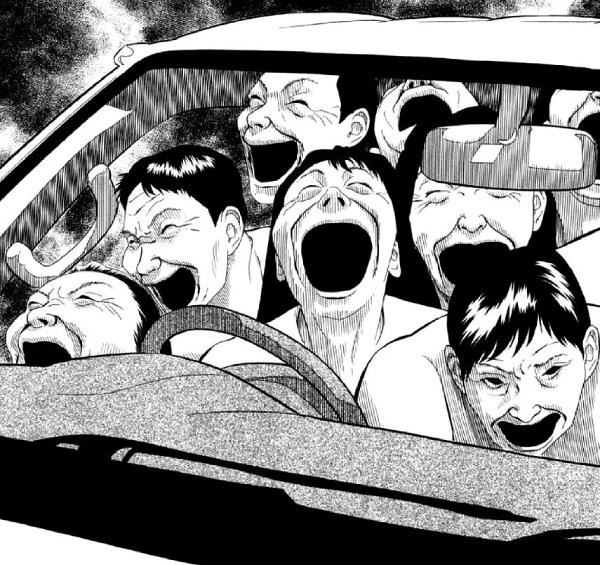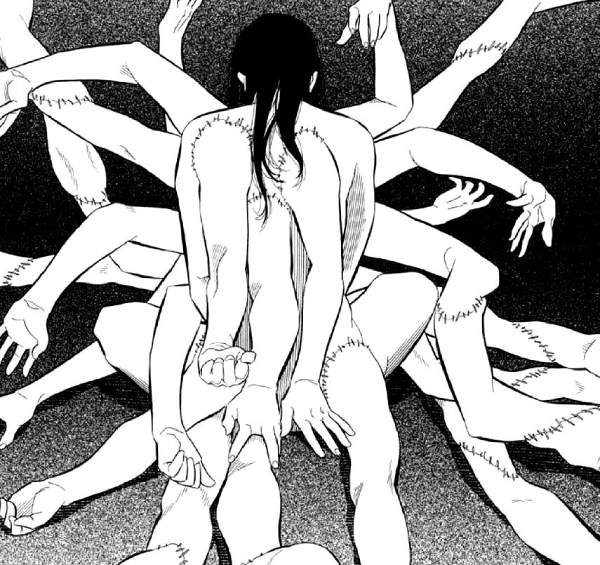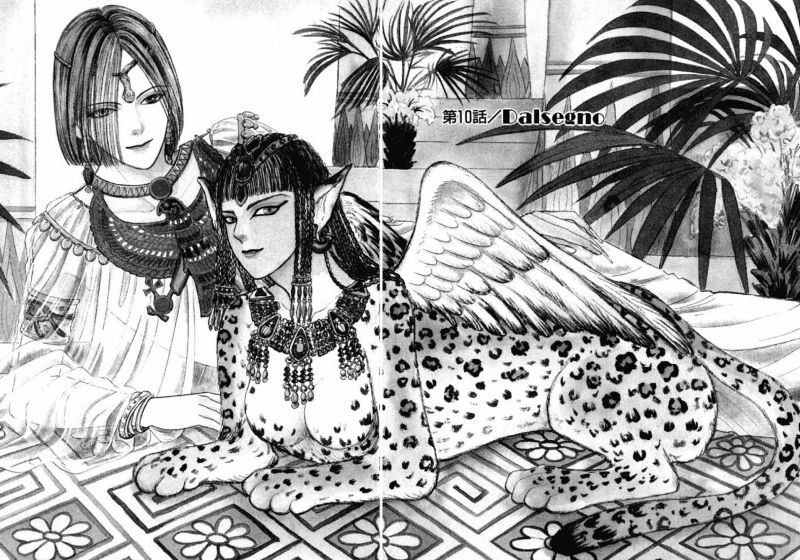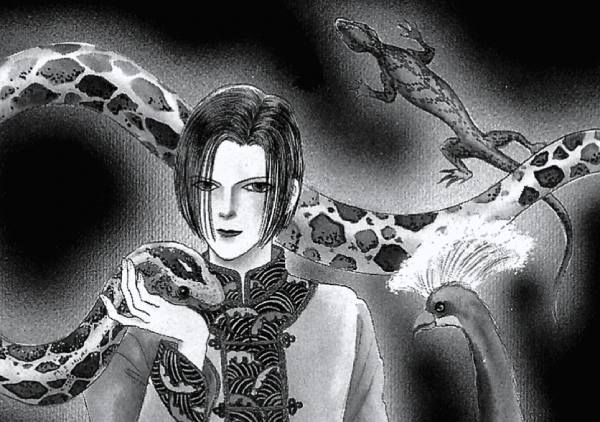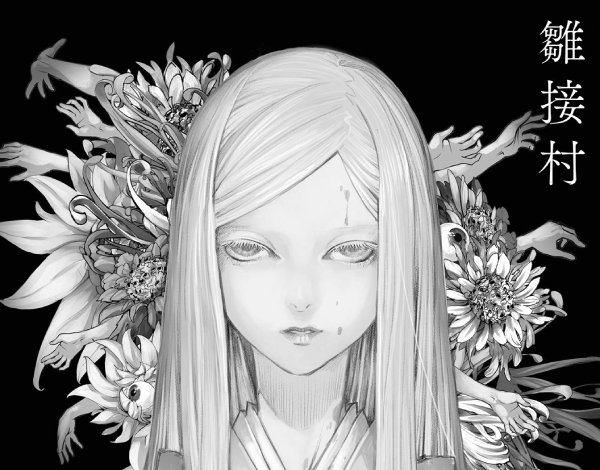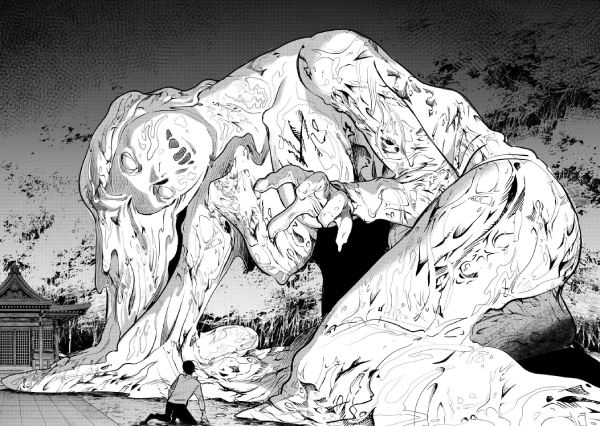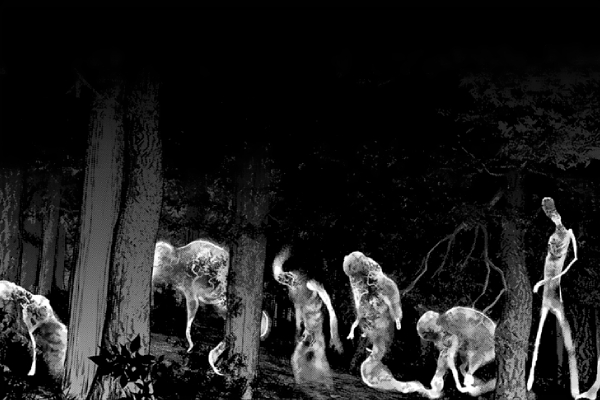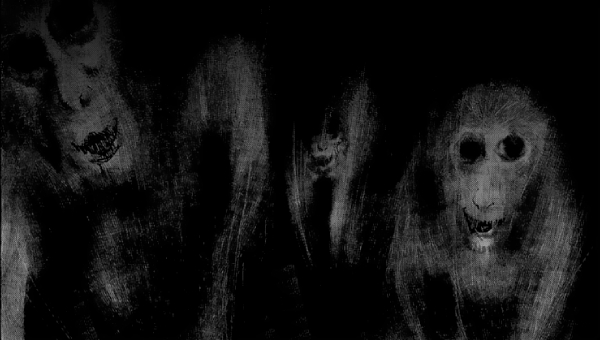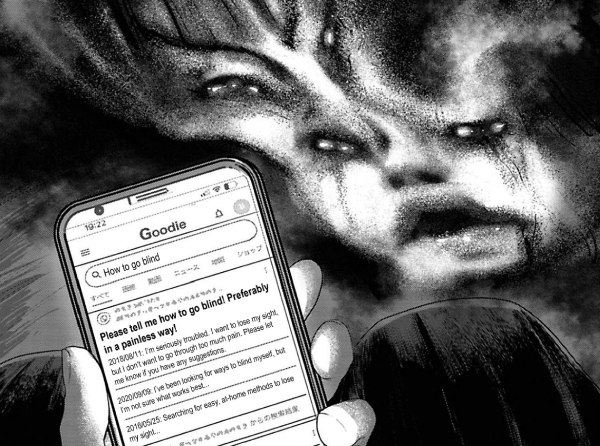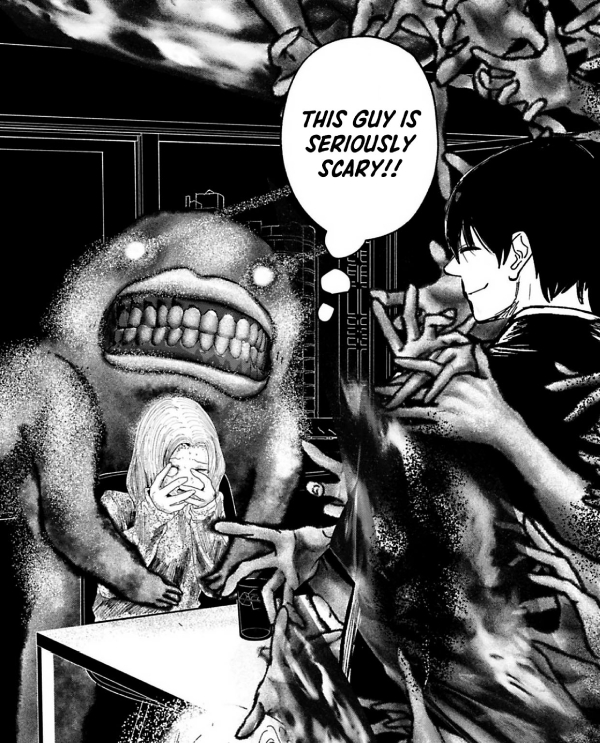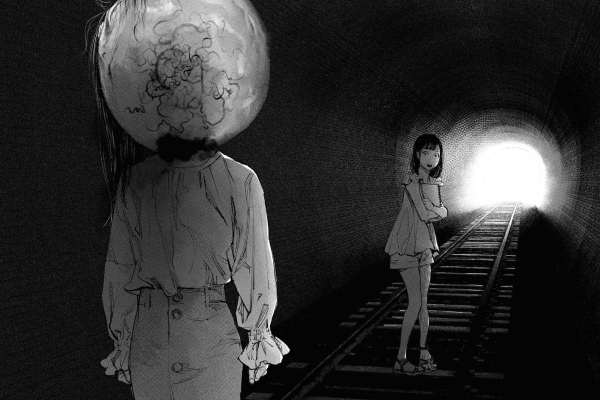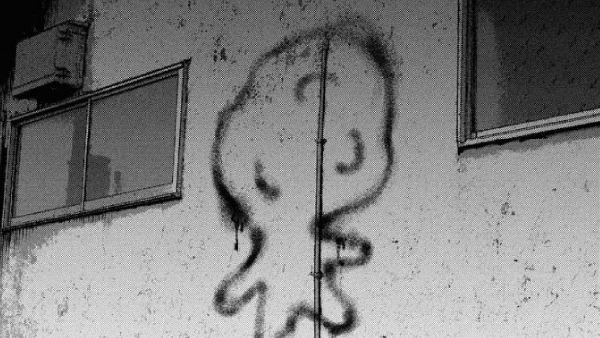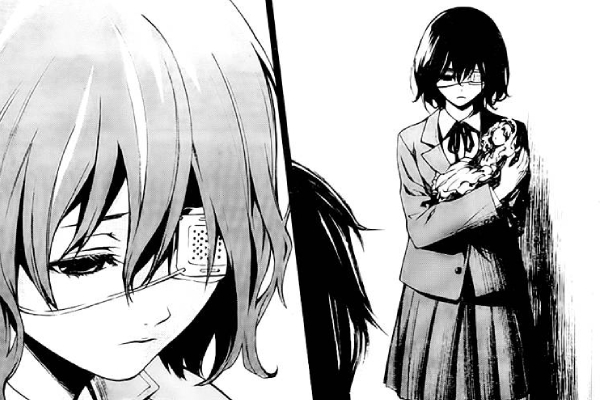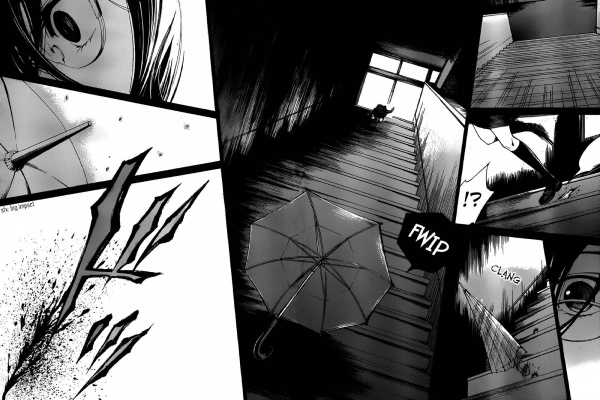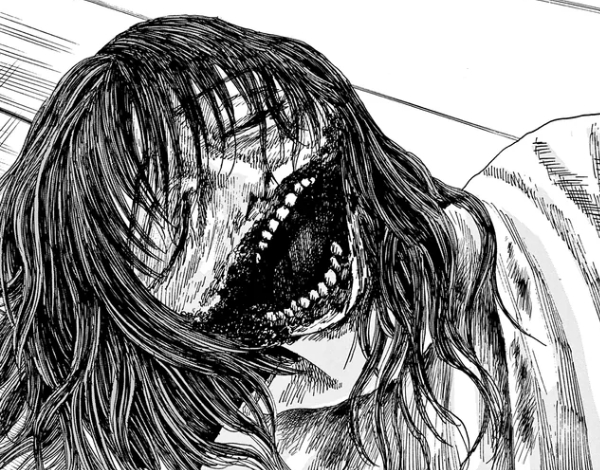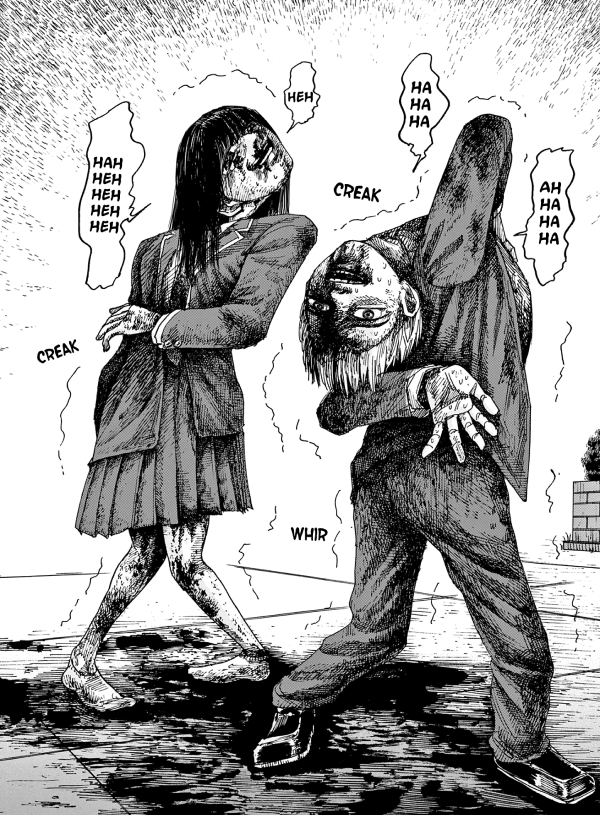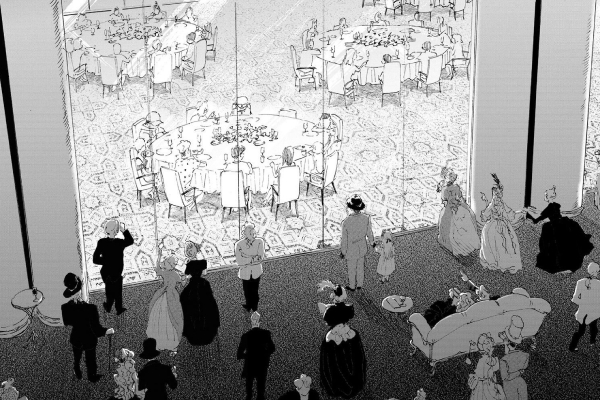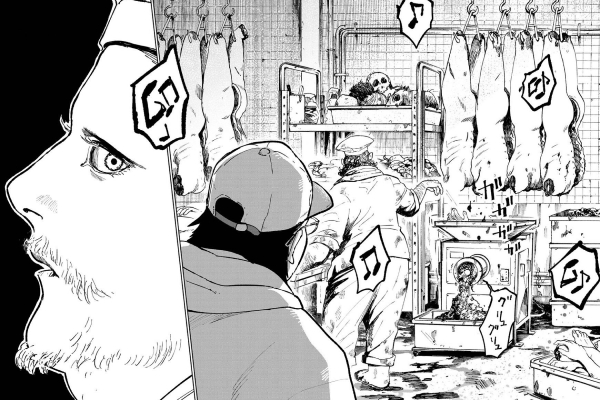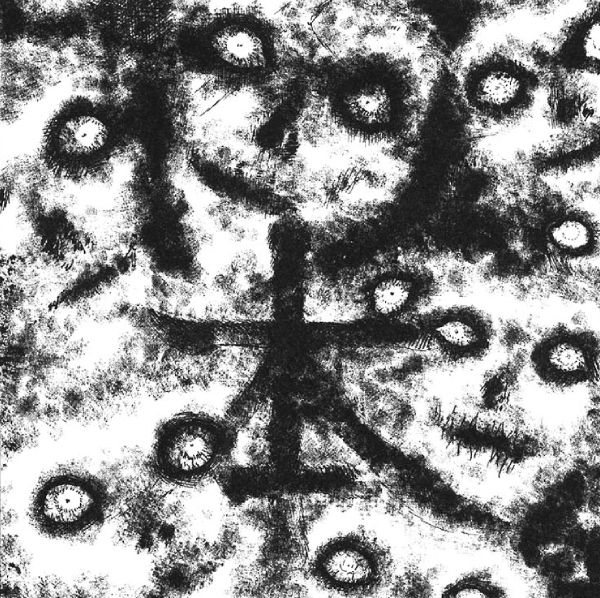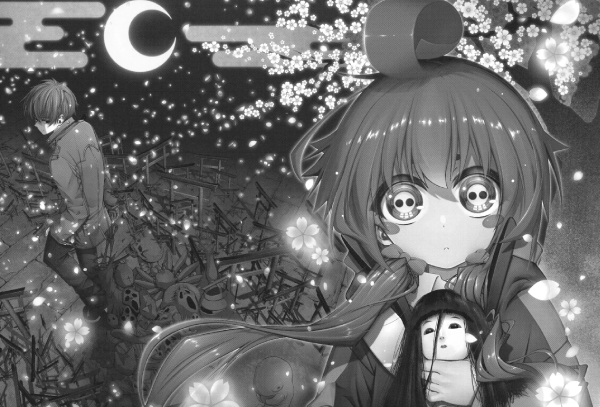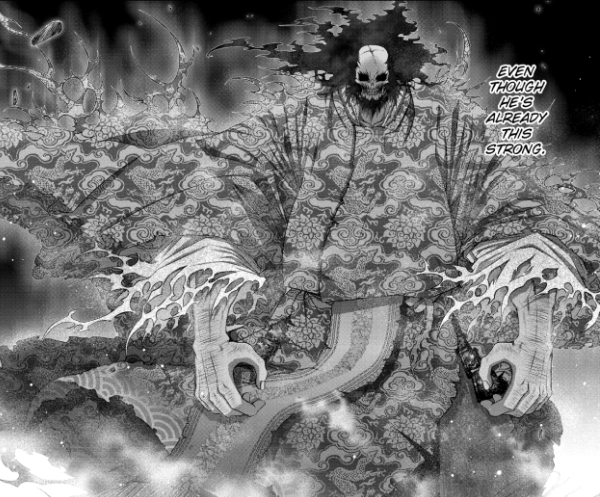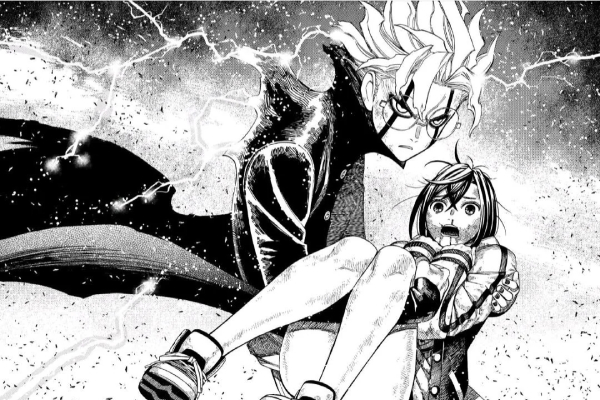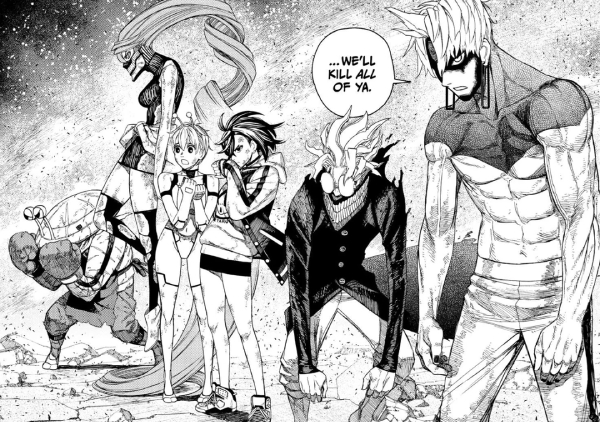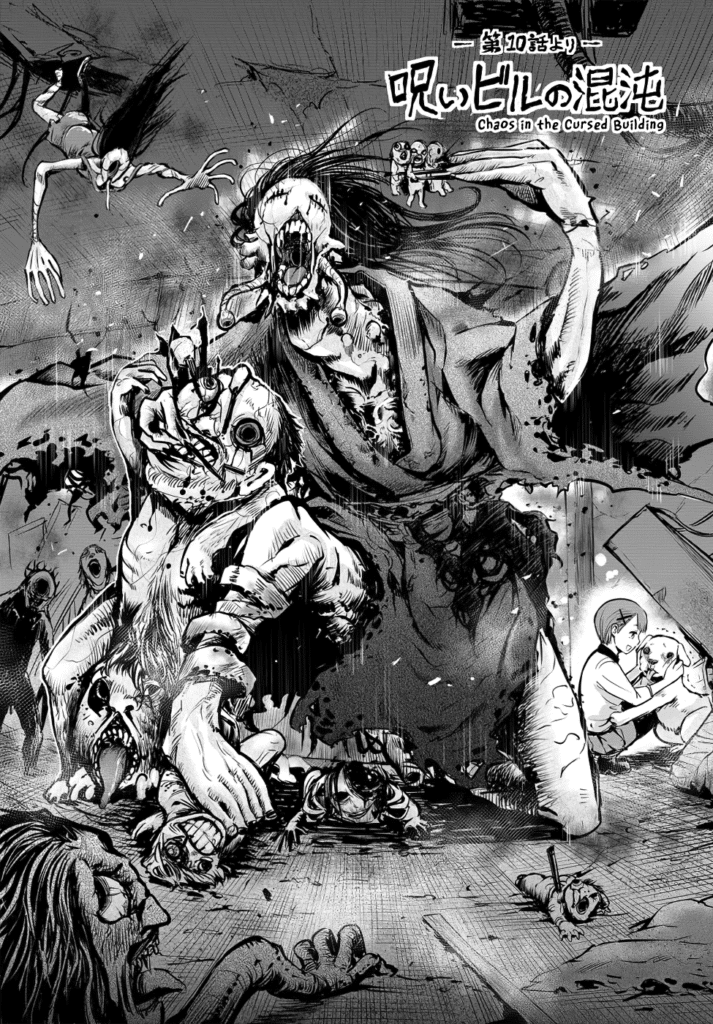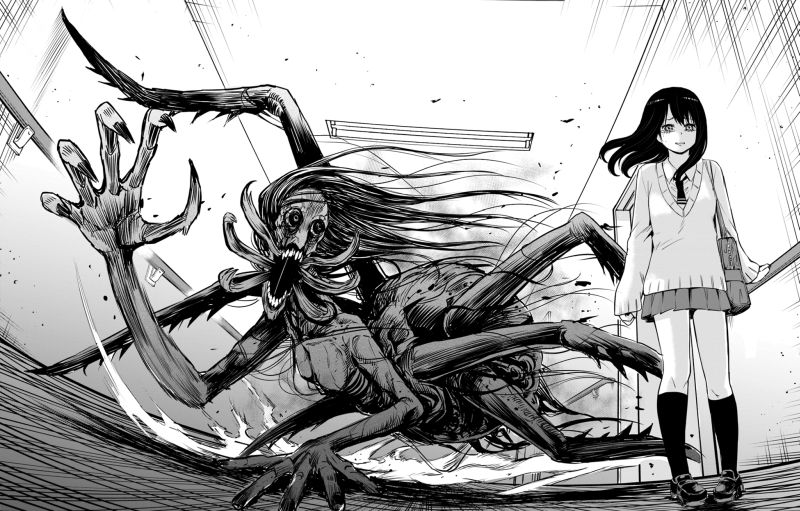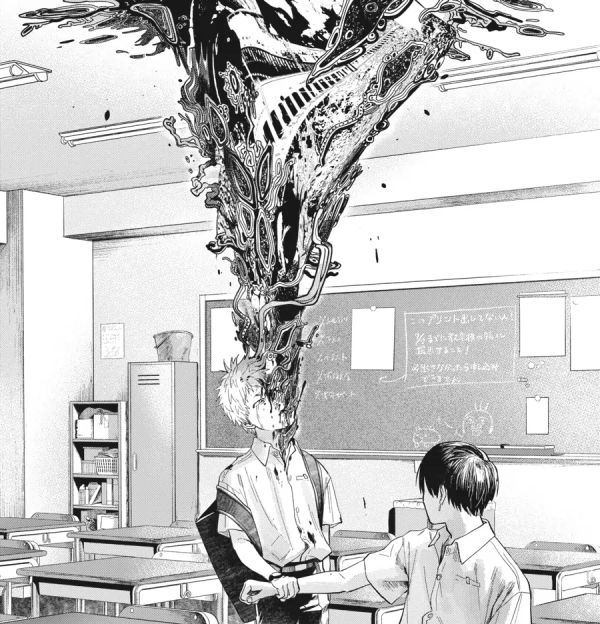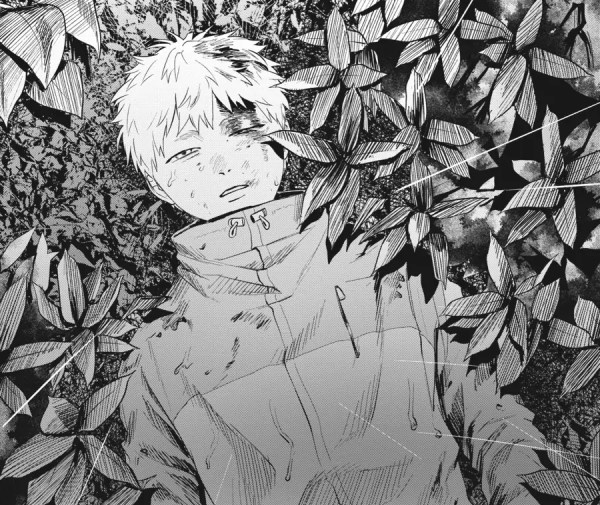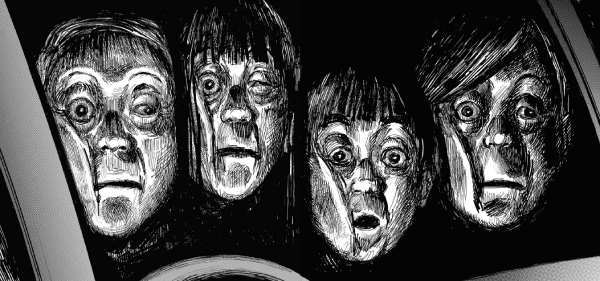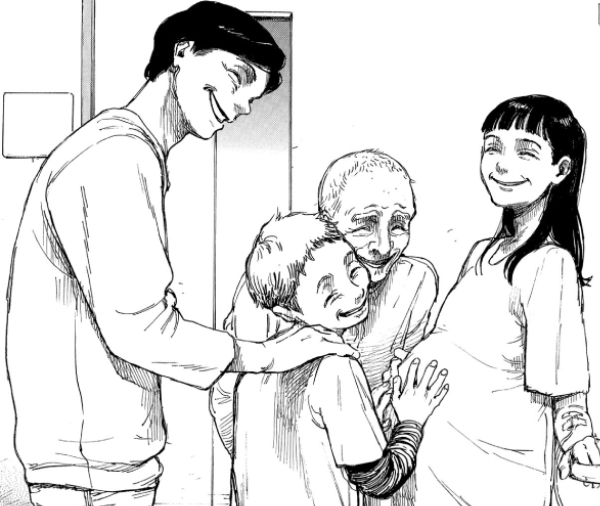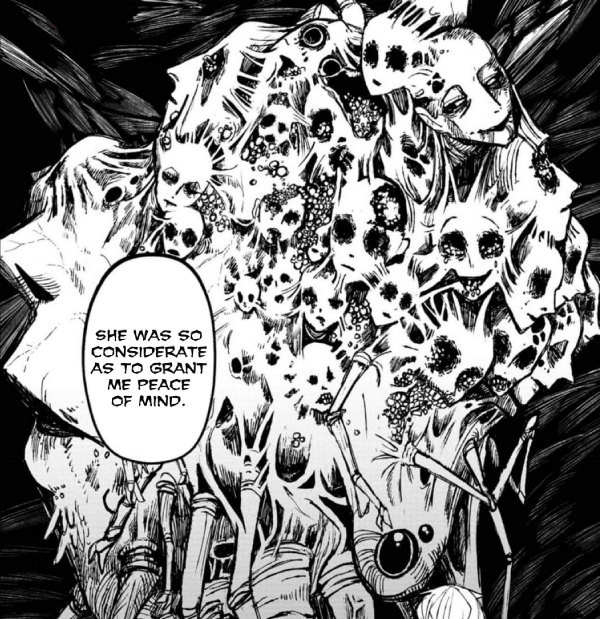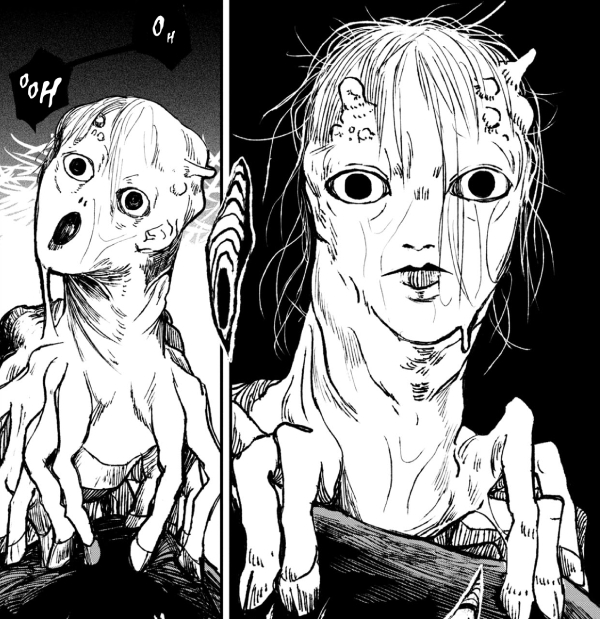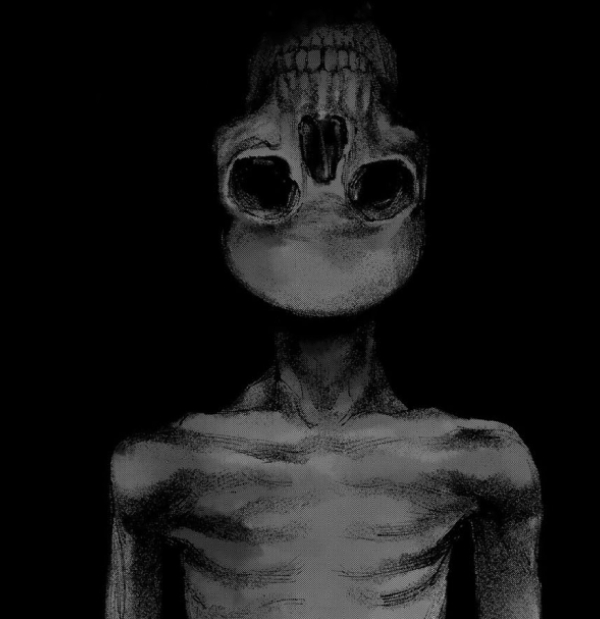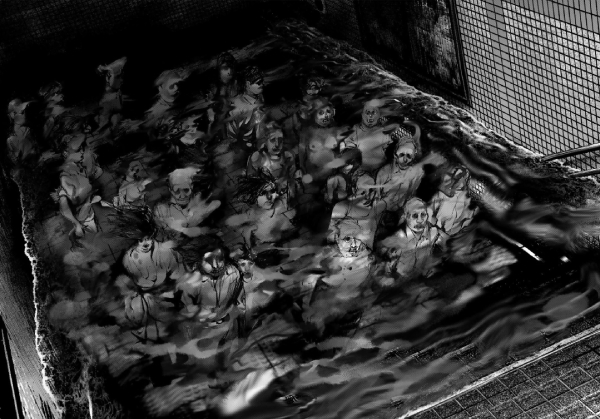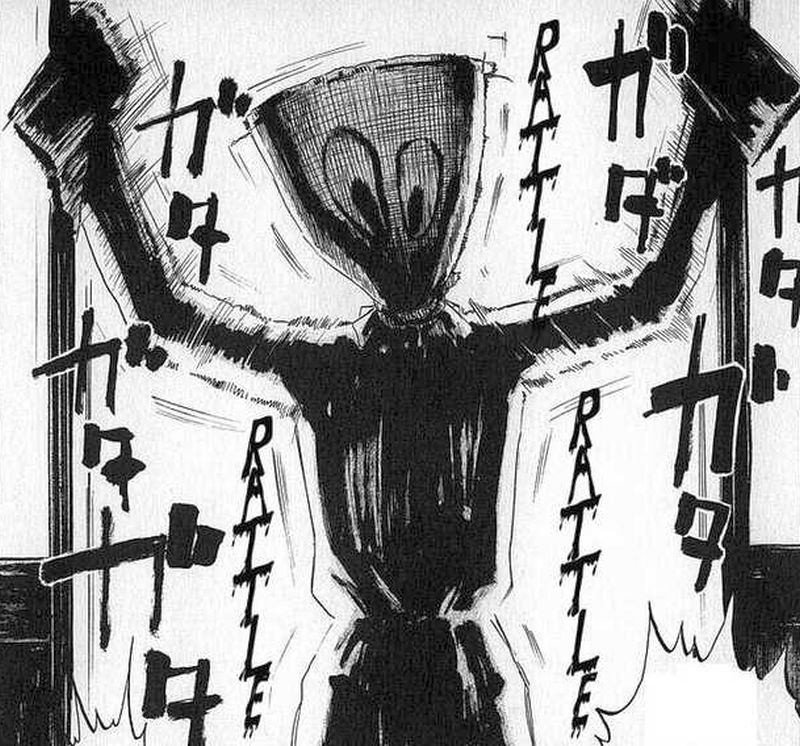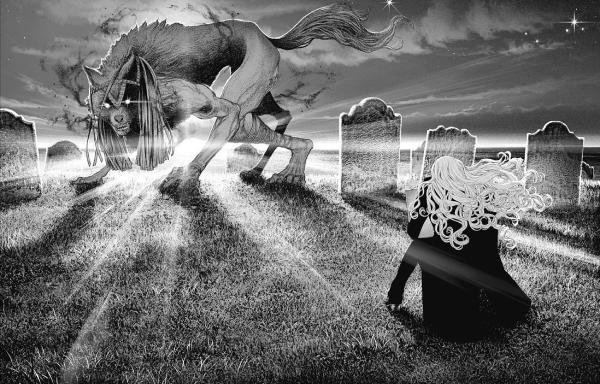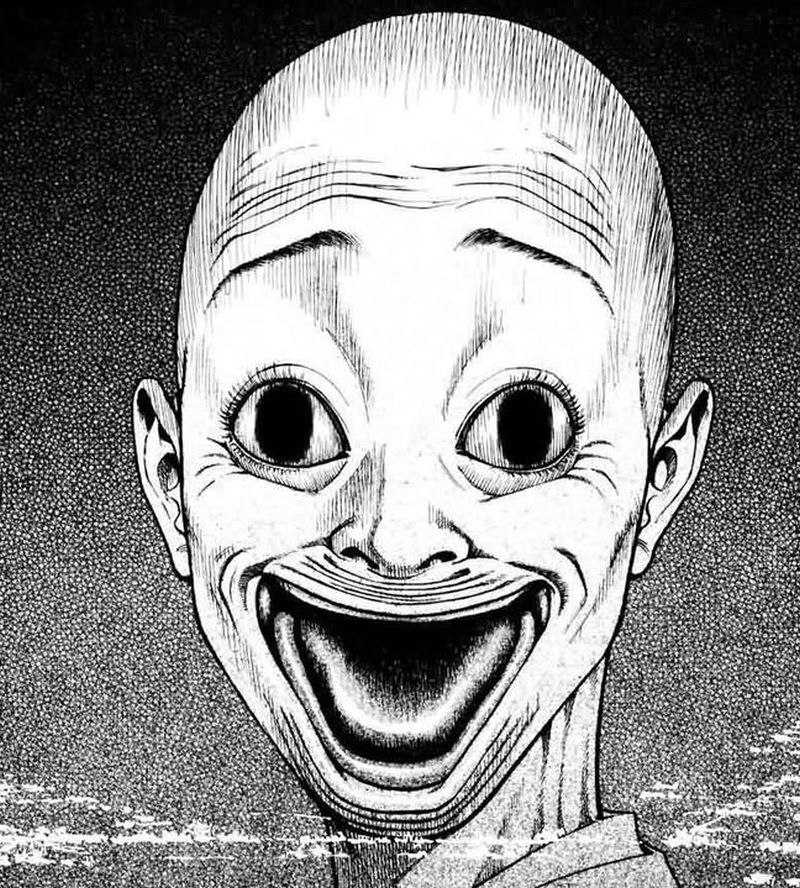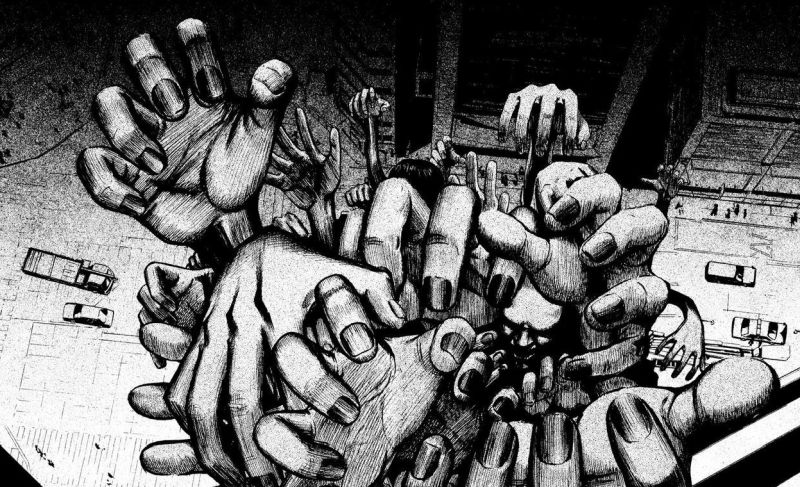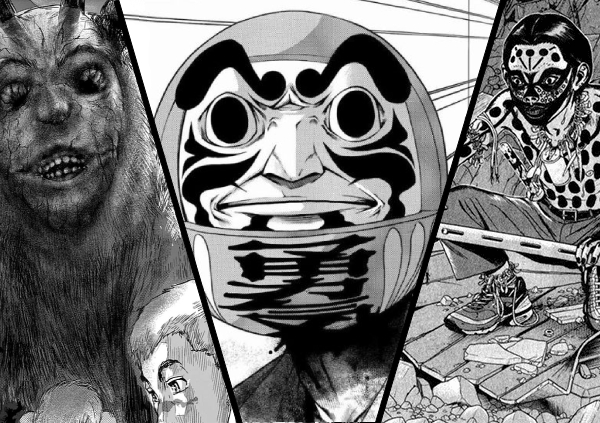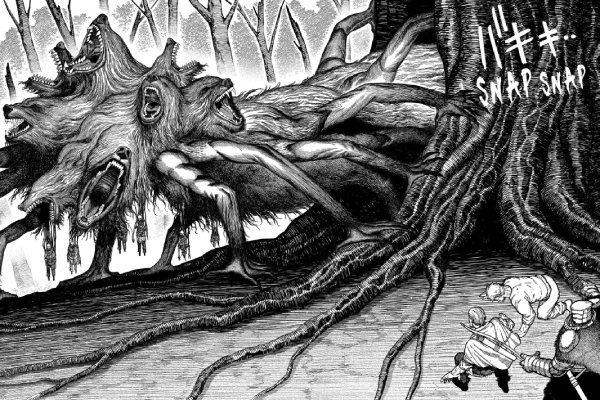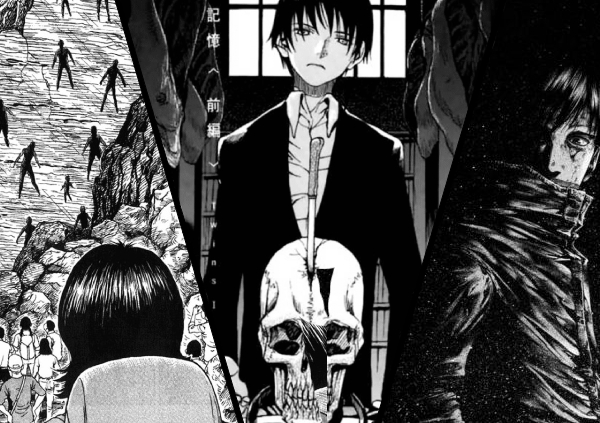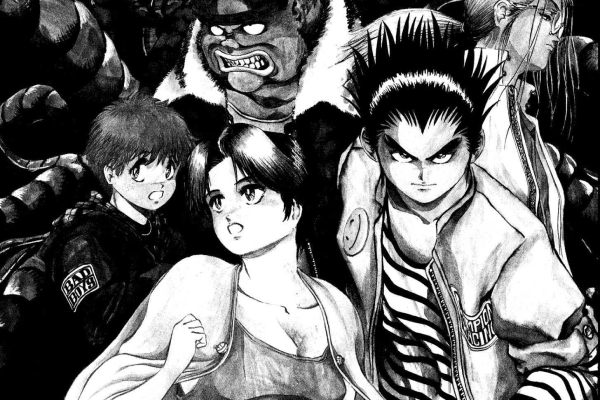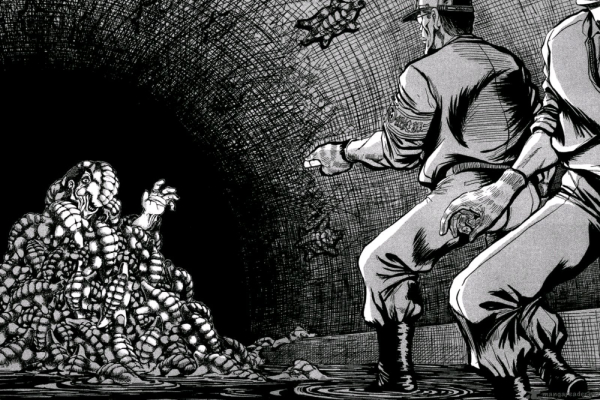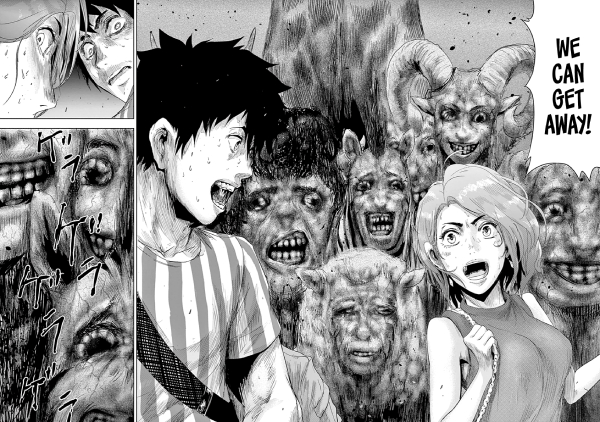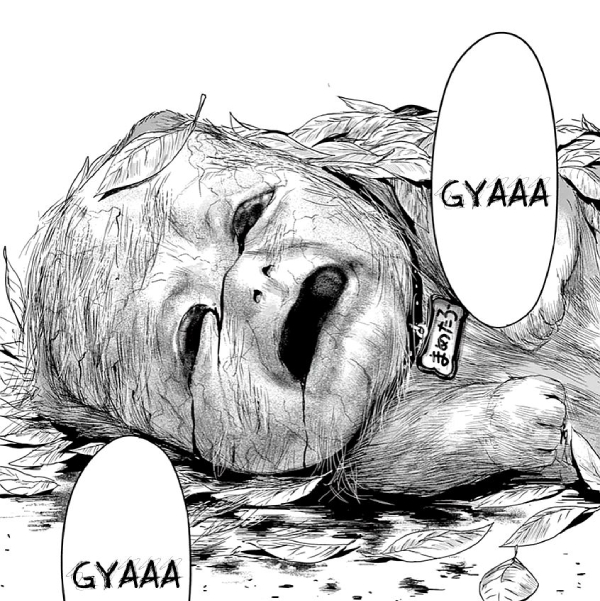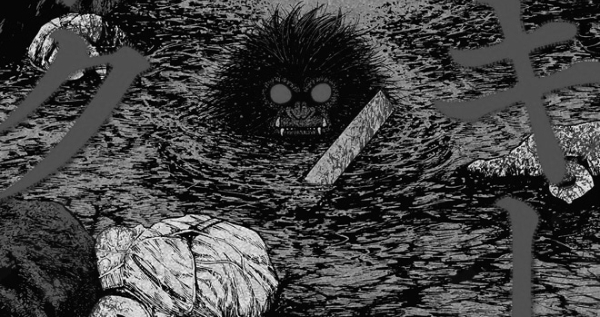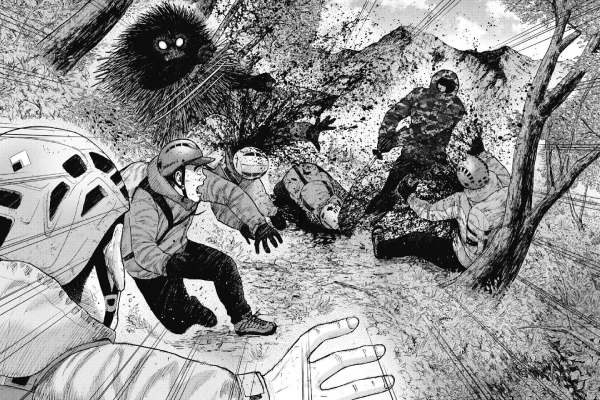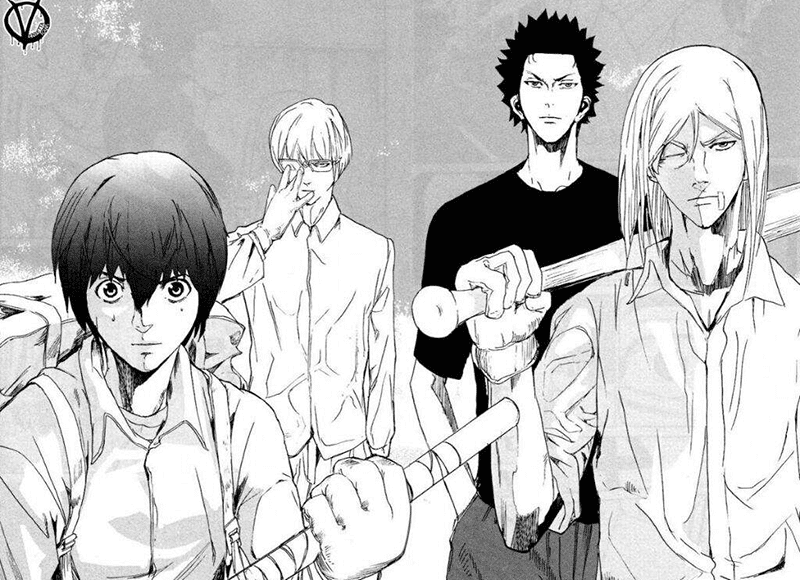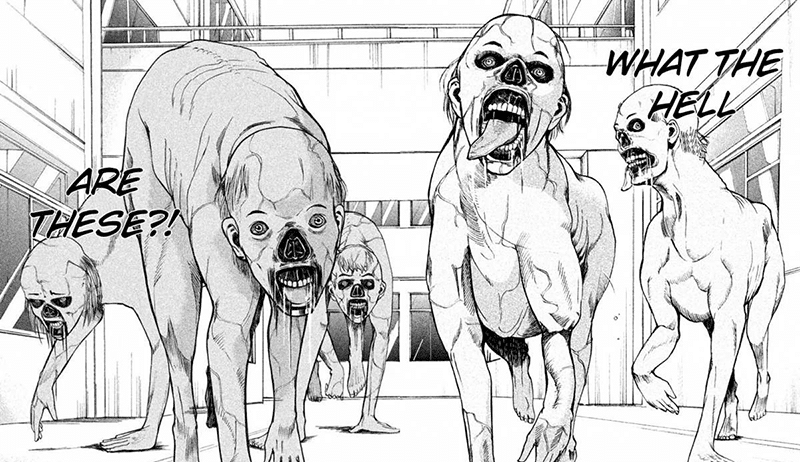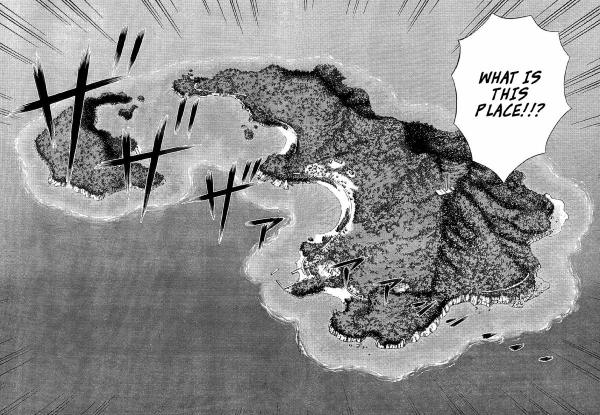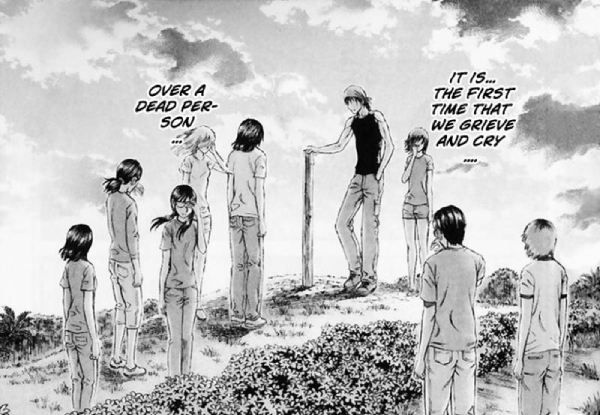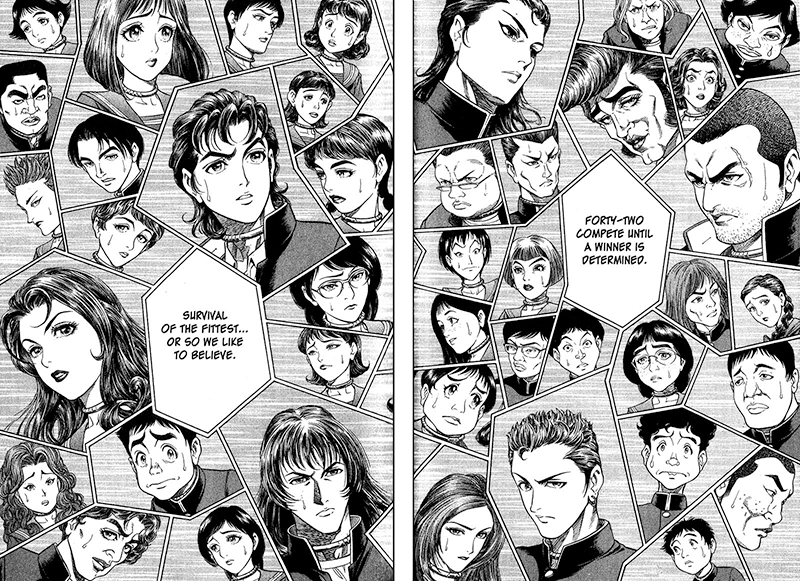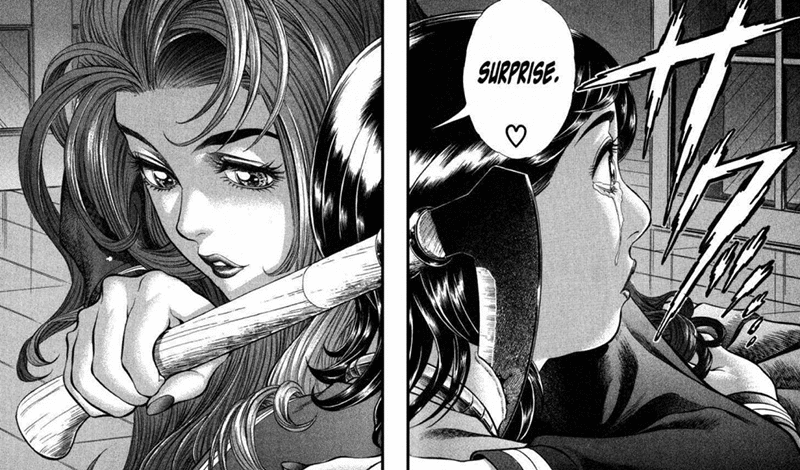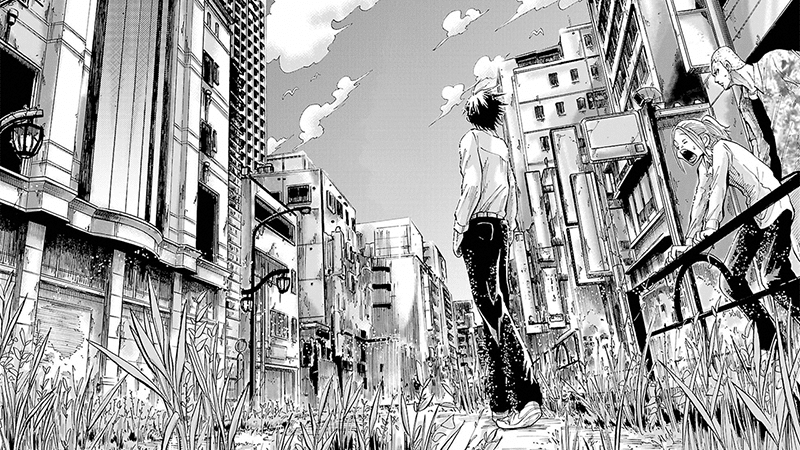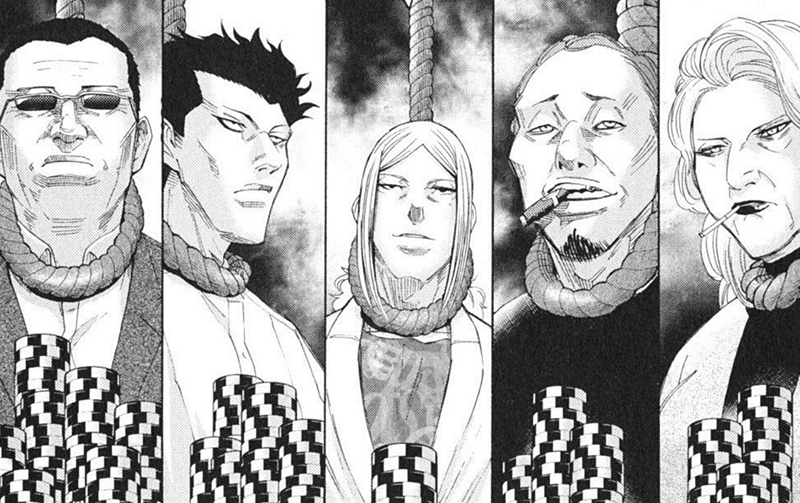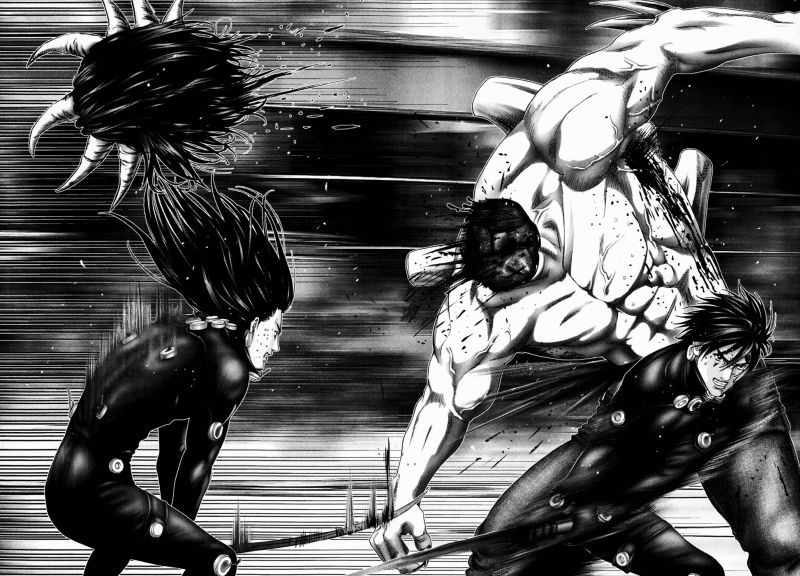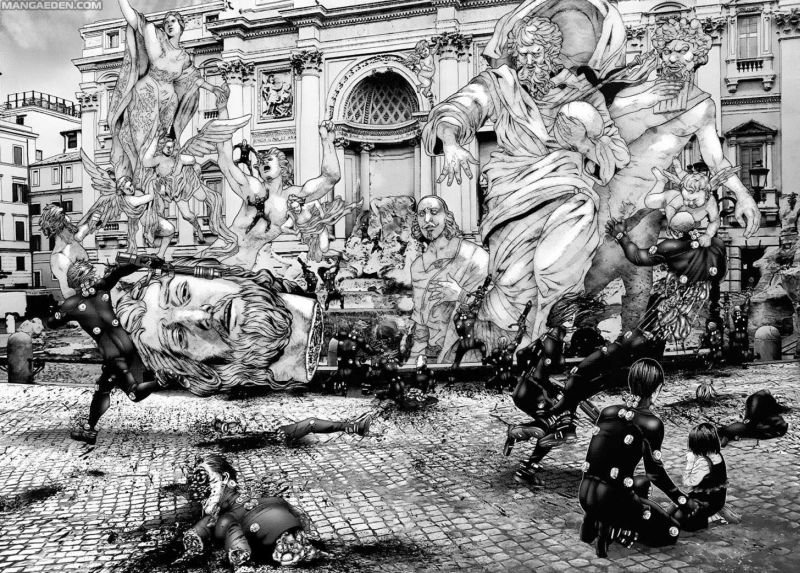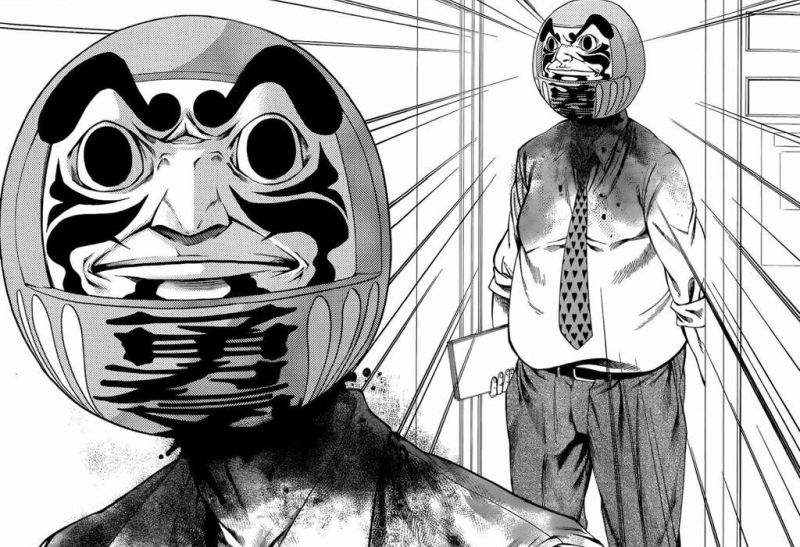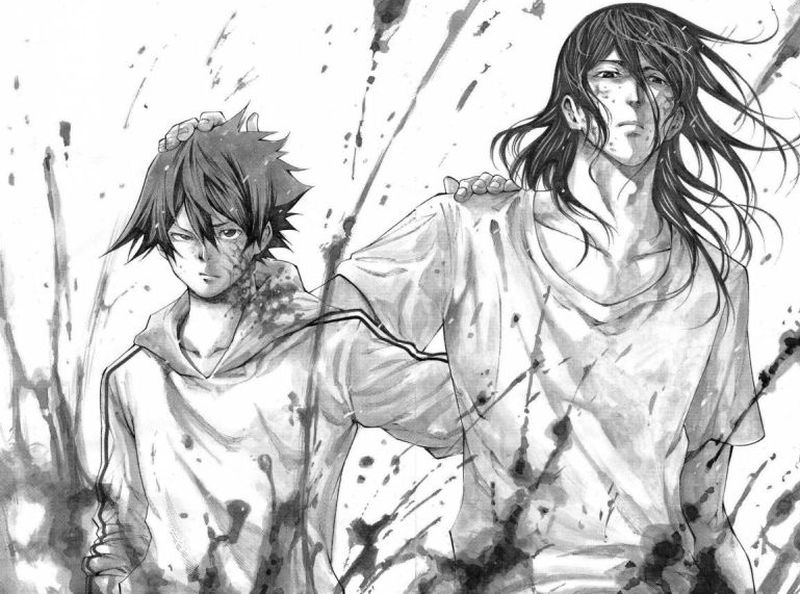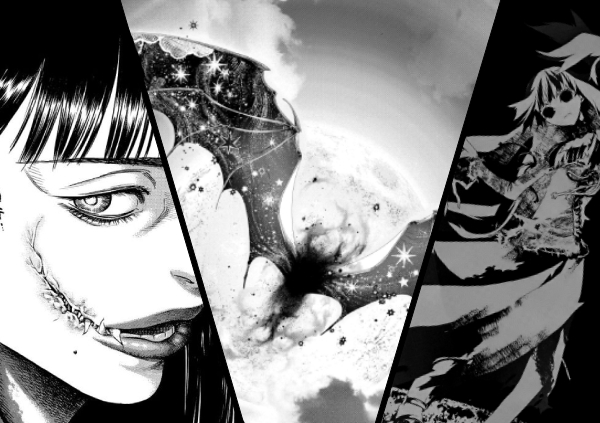I’ve always had a soft spot for samurai manga. There’s something timeless about the image of a lone swordsman facing impossible odds: the clash of steel, the rhythm of the duel, and the raw physicality of every strike. I love the choreography of sword battles, but just as much the quieter, more contemplative moments that accompany them. Beyond the action, samurai manga offer glimpses into Japan’s past, reflections on honor, duty, and the thin line between life and death.
There’s no shortage of manga that feature samurai or samurai-like characters. It’s an archetype that has become one of the most popular and influential in Japanese storytelling. Not all of them are worth your time, though. That’s why I put together this list of my favorites, samurai manga that stand out for their storytelling, atmosphere, and unforgettable characters.
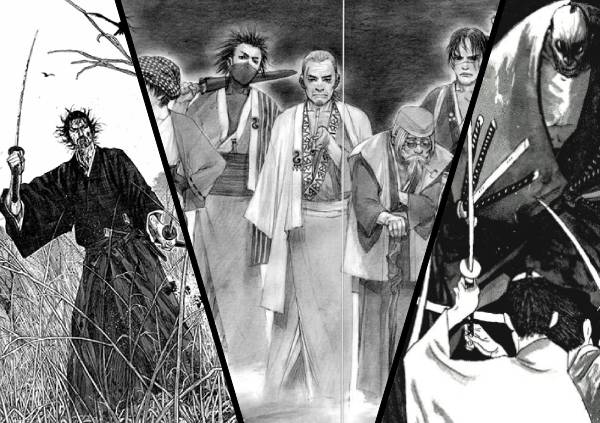
Some of these stories are brutal revenge tales; others are deep character studies or meditative journeys about purpose and the warrior spirit. While some might lean more toward fantasy, others feature tournament-style action packed full of larger-than-life characters and sheer spectacle.
And yet, each of them stands out and has a reason for being on this list. From the elegant brushwork of Takemitsu Zamurai to the savage beauty of Shigurui, and from the philosophical artistry of Vagabond to the chaotic energy of Gintama, this list spans the full spectrum of samurai fiction.
Mild spoiler warning: I’ll avoid major reveals, but some plot details are necessary for context.
Below is my ranking of the 12 best samurai manga and what makes each one worth reading (last updated: October 2025).
12. Ichigeki
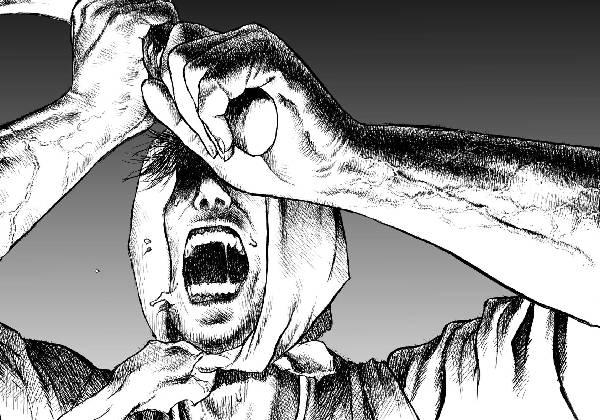
Most samurai manga celebrate noble swordsmen or stoic masters of the blade, but Ichigeki takes a different path entirely. Written by Yoshio Nagai and illustrated by Jiro Matsumoto, it’s a grim and grounded historical samurai manga set during the final days of the Edo Period, as Japan teeters on the edge of the Meiji Restoration. Instead of polished warriors, the story focuses on peasants pressed into military service. They are normal men given swords, minimal training, and the vague promise of glory.
The story follows Ushigorou, a farmer recruited into a one-strike, one-kill squad tasked with covert attacks against the Satsuma forces. Alongside nine other conscripts, he learns to fight with a single decisive blow, since defense is a luxury they can’t afford. What unfolds is a raw, unflinching depiction of class, desperation, and the illusion of honor.
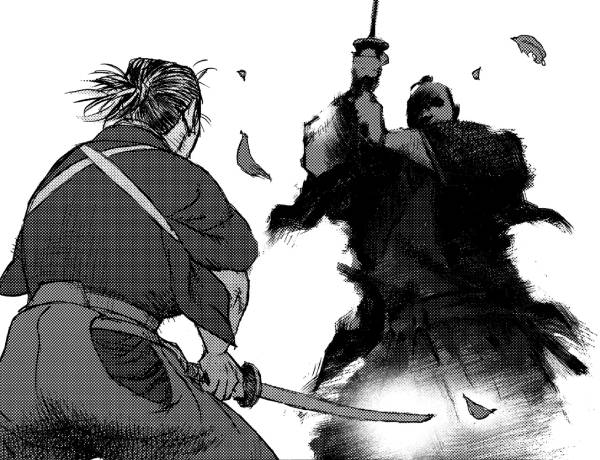
Matsumoto’s sketch-like art perfectly complements the tone. The loose lines and rough shadows capture motion and chaos alike: the blur of blades, the exhaustion of soldiers, and the confusion of men fighting battles they barely understand. It’s not a traditionally beautiful manga, but it’s fiercely alive. Every panel feels grimy, real, and human, which suits a story about moral decay and emotional ambiguity.
What makes Ichigeki stand out among other samurai manga is its focus on perspective. Instead of romanticizing the samurai ideal, it exposes its dark truth. For most, the sword was not a symbol of honor, but a tool for survival. Ushigorou and his later rival Imuta embody this tension: two men from opposite sides of the conflict, each shaped and scarred by the same violence.
Though its pacing can feel uneven and the political background may confuse readers unfamiliar with the Meiji era, Ichigeki remains one of the most original and brutally authentic samurai stories in recent memory. Short, sharp, and unforgettable.
Genres: Historical, Samurai
Status: Completed (Seinen)
11. Gamaran

Few series capture the thrill of sword duels like Gamaran. Written and illustrated by Yosuke Nakamura, this samurai manga is a pure celebration of swordsmanship, and a tale of warriors who live and die by the blade. Set in the Edo period, it takes the structure of a grand tournament and turns it into a relentless display of combat techniques, discipline, and pride.
The story begins when the daimyo of Unabara declares a massive competition to determine his successor. Each of his sons must choose a champion to represent them, and only one will remain. Naoyoshi Washitsu sets out to recruit the infamous swordsman Kurogane Jinsuke, but instead finds his son Gama, a prodigy with untold potential. What follows is a cascade of duels as Gama faces martial artists from across Japan, each specializing in distinct weapons, schools, and philosophies.
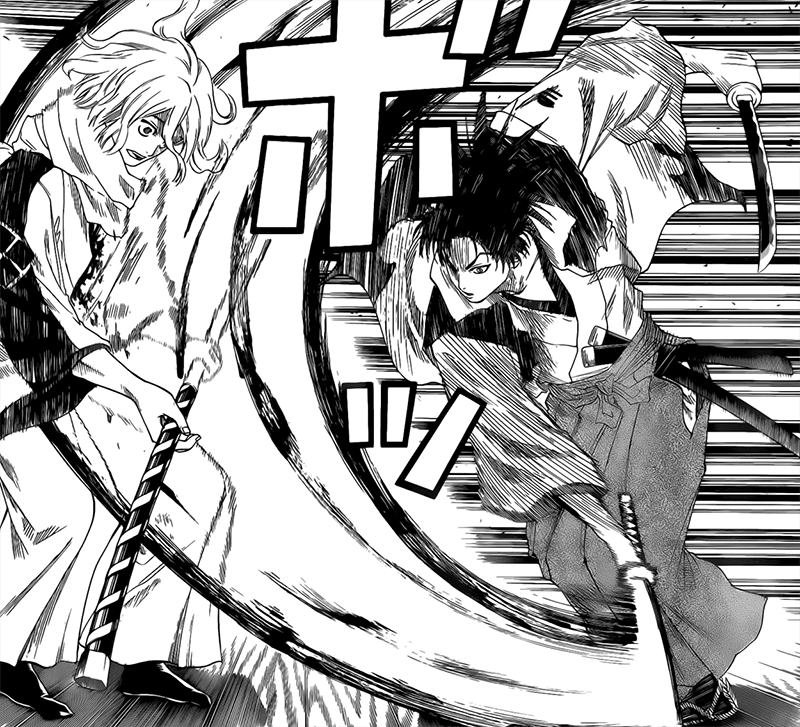
Rather than focusing on melodrama or politics, Gamaran is entirely devoted to the art of battle. Every encounter feels like a lesson in samurai discipline. More than thirty different fighters appear throughout the series, each showcasing their own martial approach, from precise swordsplay to raw, brutal strikes. Nakamura explains their techniques and weapons in enough detail to make the fights feel grounded, yet never slows down the pace. The result is one of the most dynamic and readable action series of its kind.
Visually, the manga emphasizes clarity over flash. The choreography is crisp, every strike carries weight, and the motion feels almost cinematic. It’s a grounded, tactile kind of action that many samurai manga lack. When blades meet, there’s always the sense that one wrong move means death, and this tension keeps every chapter alive.
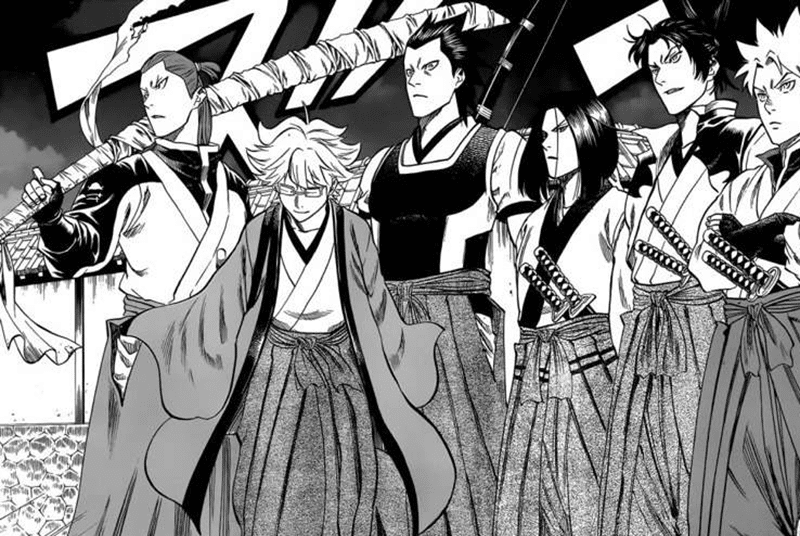
If there’s a weakness, it’s in the storytelling depth. Beyond Gama’s determination to grow stronger, the plot doesn’t evolve much, and character arcs are minimal. But that simplicity is part of Gamaran’s strength. It never pretends to be more than a showcase of martial skills and raw intensity.
For readers looking for the best samurai manga centered on dueling, training, and the spirit of competition, Gamaran remains a standout.
Genres: Action, Samurai, Tournament
Status: Completed (Shonen)
10. Jin
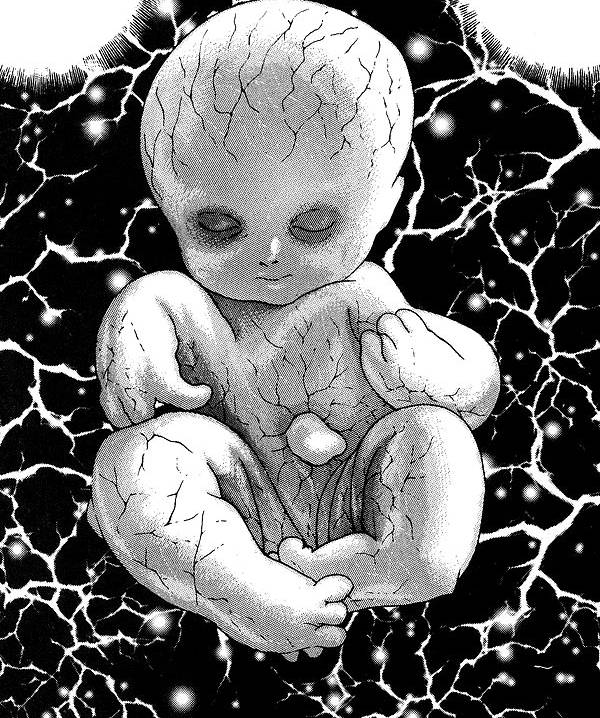
Among all the samurai manga on this list, Jin stands out for one simple reason: it isn’t about warriors. Instead, it’s about a man of science, navigating a world ruled by the sword. Written and illustrated by Motoka Murakami, Jin tells the story of Minakata Jin, a modern brain surgeon who, after a bizarre medical incident involving a fetus found in a patient’s skull, is suddenly thrown back to 19th-century Edo. Stranded in a time before antibiotics or anesthesia, Jin must use his knowledge to treat the people of the era while struggling to understand why he was sent there in the first place.
Set on the brink of the Meiji Restoration, this historical manga captures a time when tradition and modernity were violently colliding. Samurai still held political power, but Western science was beginning to reshape the country. Murakami uses Jin’s medical work as a bridge between those worlds. Each chapter focuses on a different illness or injury, from head trauma to epidemics, revealing both the miracle and fragility of life.
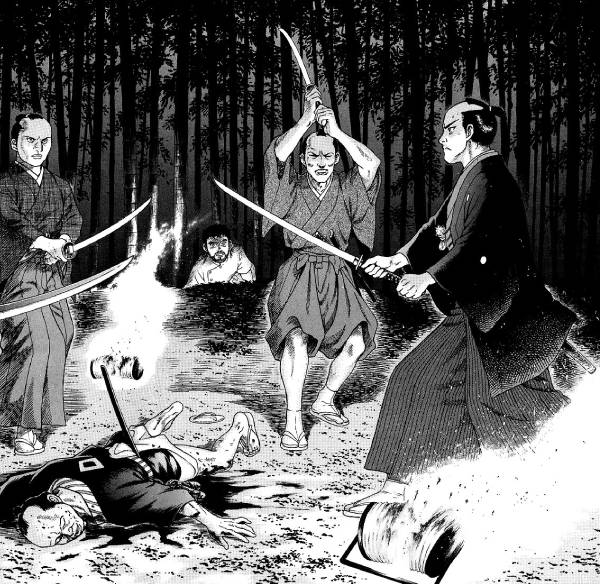
What makes Jin remarkable is its attention to historical and medical detail. The surgeries are drawn with clinical precision, and the setting, from narrow Edo streets to candlelit sickrooms, feels alive and authentic. Rather than relying on spectacle, the manga builds tension through intellect and empathy. Watching Jin improvise with crude tools or collaborate with local healers carries the same thrill as a duel might in a more traditional samurai manga.
At times, the medical jargon and technical discussion can be overwhelming, and the time-travel explanation itself verges on abstract. Yet that hardly matters. Jin isn’t about science-fiction; it’s about humanity, and saving lives in a world defined by violence.

For readers interested in stories beyond sword fights and revenge, Jin offers something not only different but deeper, a thoughtful, emotionally grounded story that redefines what a samurai manga can be. It’s a history lesson, a character study, and a celebration of how knowledge can change lives.
Genres: Historical, Drama, Time Travel
Status: Completed (Seinen)
9. Takemitsu Zamurai
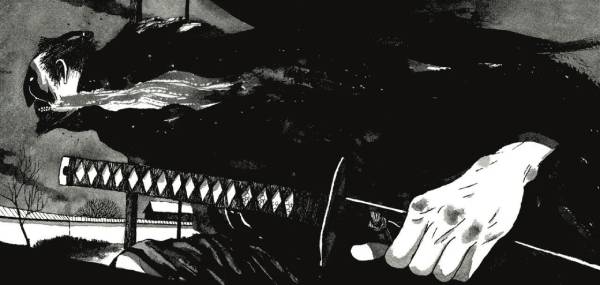
If there’s one title on this list that defies every expectation of what a samurai manga can be, it’s Takemitsu Zamurai. Written by Issai Eifuku and illustrated by Taiyō Matsumoto, the manga reimagines the classic wandering swordsman tale through an avant-garde lens. It’s both meditative and unpredictable, filled with humor, melancholy, and brushstroke art that feels closer to ink painting than to traditional manga panels.
The story follows Souichiro Senou, a mysterious ronin who settles in a poor Edo tenement after abandoning the life of a warrior. Hoping to leave violence behind, he trades his katana for a bamboo blade and spends his days quietly observing the world: chasing butterflies, befriending neighbors, rediscovering the simple joys of life. But Edo is not a place to seek peace. When assassins and old grudges resurface, Souichiro is forced to confront both his past and the bloodlust that still hides inside of him.
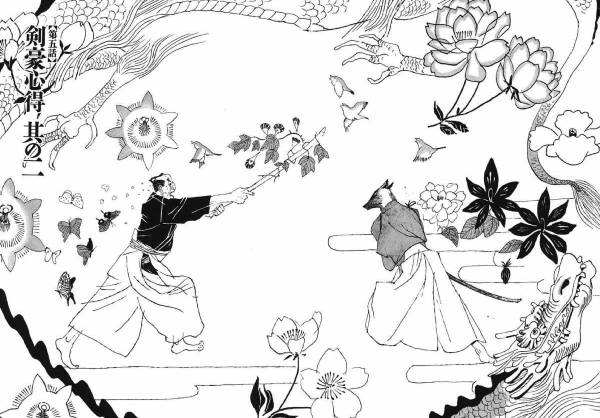
Matsumoto’s art makes Takemitsu Zamurai a masterpiece. His calligraphic linework evokes the spirit of woodblock prints and Edo-period ink paintings. Characters bend and flow with the brush, the world drips with atmosphere, and whole scenes play out without dialogue, conveying emotion purely through movement and shadow. The result is an experience that feels both ancient and experimental. It’s easily one of the most visually striking works among the best samurai manga ever made.
What’s remarkable is how human the story remains beneath its abstraction. Souichiro isn’t a grand hero or a brooding archetype, but a man learning to live again. His interactions with the townspeople, from curious boys to weary landlords, create a gentle rhythm that makes each burst of violence even more haunting.
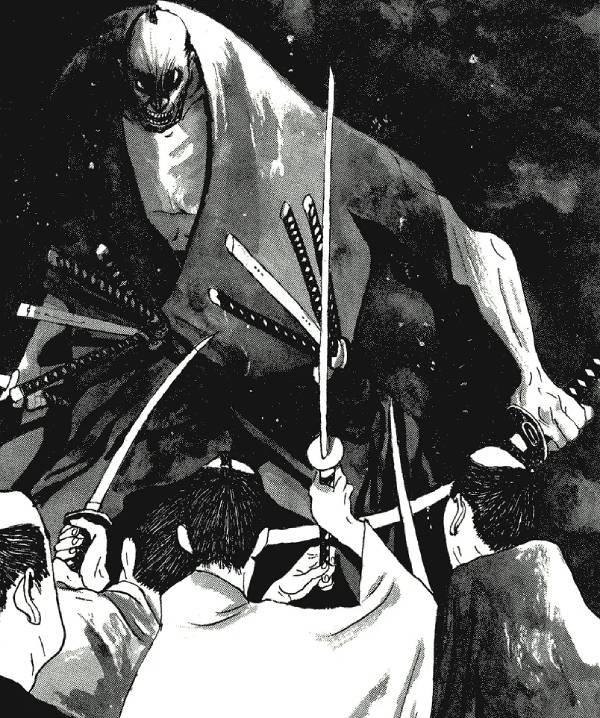
While the plot is deceptively simple, the execution is brilliant. Each chapter feels like a vignette, a glimpse of a man caught between peace and duty. For readers open to something different, poetic, and deeply Japanese, Takemitsu Zamurai remains one of the most unforgettable historical samurai manga ever drawn.
Genres: Historical, Samurai, Slice of Life
Status: Completed (Seinen)
8. Gintama
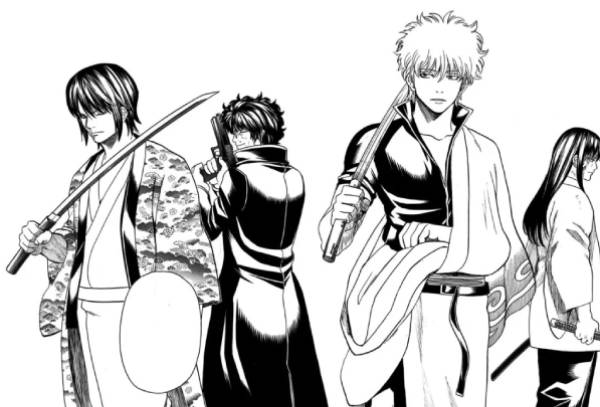
Hideaki Sorachi’s Gintama is one of the strangest, longest-running, and most beloved samurai manga ever created, though it hardly resembles a traditional example of the genre. Equal parts science-fiction, slapstick comedy, and sincere character drama, it reimagines Edo Japan under alien occupation. Swords have been outlawed, the samurai class has fallen, and the once-proud warriors now scrape by in a world ruled by absurdity and bureaucracy. Yet, even in this absurd parody of history, Gintama captures the heart of what makes samurai stories so enduring: perseverance, loyalty, and the struggle to uphold one’s honor in a changing world.
The story follows Gintoki Sakata, a lazy former samurai turned freelancer, who runs an odd jobs business with his companions Shinpachi, Kagura, and their oversized dog, Sadaharu. Their daily lives swing from the ridiculous to the profound. One chapter might parody shonen stereotypes or break the fourth wall, while the next dives into heartbreaking flashbacks or deadly sword duels. Sorachi’s genius lies in how he balances these tones. Beneath the chaos lies genuine emotion, and beneath the jokes, an aching melancholy about a generation of samurai left behind.
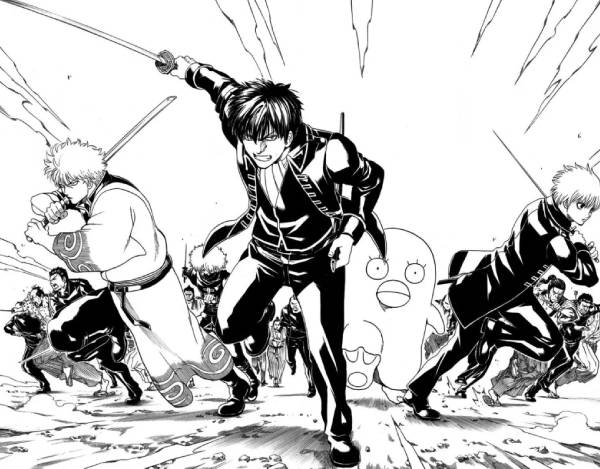
While Gintama’s art starts off simple, it steadily improves through its massive 700+ chapter run. Sorachi’s clean paneling and expressive faces make the humor land perfectly, and when the story shifts into serious arcs like the Benizakura or Shogun Assassination arcs, his choreography and atmosphere rival those of any other samurai manga. The contrast between laughter and tragedy gives those moments a shocking gravity.
What truly elevates Gintama is its ability to evolve. It begins as a parody of samurai manga and ends as a love letter to the genre. Through Gintoki’s laziness, Shinpachi’s ideals, and Kagura’s alien innocence, the series explores what happens when the samurai code loses its meaning, and how individuals must redefine themselves.
Its length and tonal whiplash can intimidate, but for those who stick with it, Gintama offers one of the richest and most unpredictable journeys in manga. It’s a chaotic blend of humor and honor, and proof that even in a world ruled by aliens and absurdity, the spirit of the samurai never truly dies.
Genres: Comedy, Action, Sci-Fi, Samurai
Status: Completed (Shonen)
7. Demon Slayer
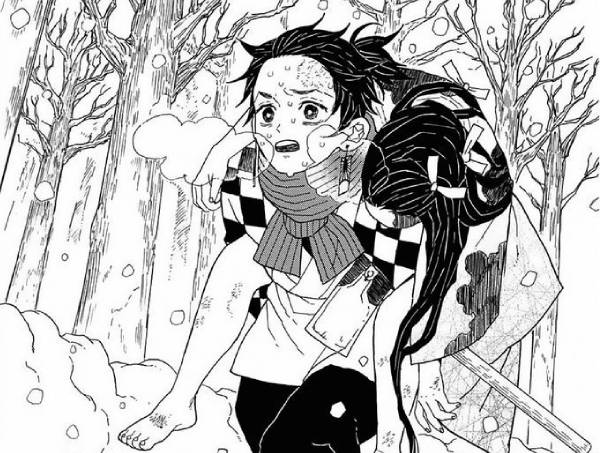
Koyoharu Gotouge’s Demon Slayer: Kimetsu no Yaiba isn’t your typical samurai manga. There are no rival clans or political wars here. Instead, it reimagines the samurai ethos through the lens of myth and fantasy, crafting a story about demon hunters wielding breathing techniques that transform swordsmanship into something almost elemental. It’s easily the most fantastical entry on this list, yet its spirit remains unmistakably samurai: duty, loss, and the pursuit of mastery through hardship.
The story follows Tanjiro Kamado, a kind-hearted boy whose family is slaughtered by demons, leaving only his sister Nezuko, now transformed into one of the monsters he’s sworn to destroy. Joining the Demon Slayer Corps, Tanjiro takes up the sword to avenge his family and find a cure for Nezuko’s condition. From that simple premise, Demon Slayer builds a vast, emotionally charged world of monsters, mentors, and tragic villains. Every battle feels personal, and every demon slain carries a story of human pain and regret.
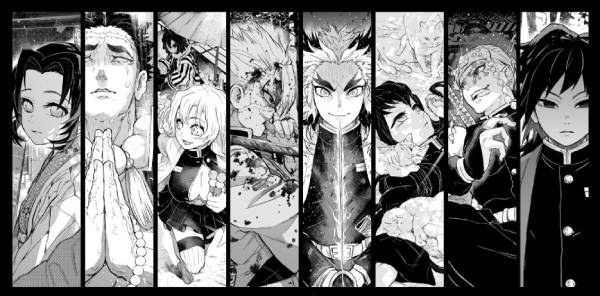
What made Demon Slayer a cultural phenomenon isn’t originality, but precision. Gotouge’s storytelling is clean, fast-paced, and sincere. It embraces every hallmark of classic shonen, from training arcs and emotional flashbacks to ranked villains and explosive final battles, executing them with near-perfect balance. The Breath Styles and beautifully choreographed duels give the manga its unmistakable energy. You can practically feel the motion of the strikes and the flow of water and flame.
As a fantasy samurai manga, Demon Slayer transforms swordsmanship into something mythic. Its characters are not warriors of history but protectors of humanity, fighting an endless battle against the darkness within and without. It may not offer the philosophical depth of other samurai manga on this list, but it delivers a story full of emotions, courage, and compassion that will resonate with readers of all ages.
If you want sweeping action, heartfelt storytelling, and the distilled essence of modern shonen in a samurai-inspired world, Demon Slayer is a must-read. It’s a masterclass in craft and heart: proof that even the most familiar formulas can feel fresh when executed flawlessly.
Genres: Action, Fantasy, Adventure, Samurai
Status: Completed (Shonen)
6. Sidooh
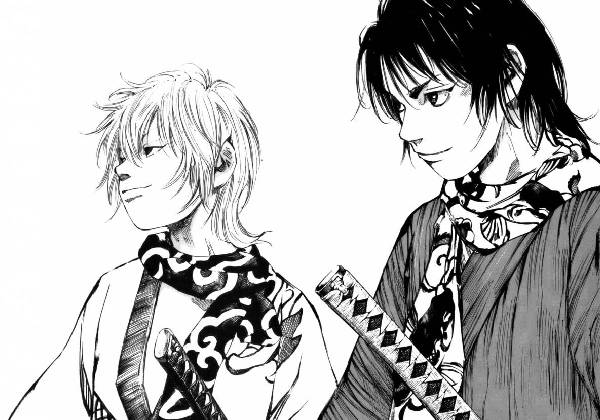
I first started reading Sidooh years ago during a period when I was devouring samurai manga. At the time, I didn’t finish it, but I’m glad I went back to it. Tsutomu Takahashi’s work is far more mature and emotionally grounded than I remembered. Rather than glorifying swordsmanship or samurai ideas, Sidooh captures the harsh reality of the Tokugawa era’s end.
Set in 1855, during Japan’s turbulent transition toward modernization, the story follows two orphaned brothers, Shoutarou and Gentarou Yukimura, as they struggle to survive. Their only inheritance is their father’s sword and their mother’s dying words: to live by the Path of the Warrior, Sidooh. What begins as a tale of endurance soon evolves into something greater: a brutal chronicle of two boys forced to become men amidst corruption, war, and change.
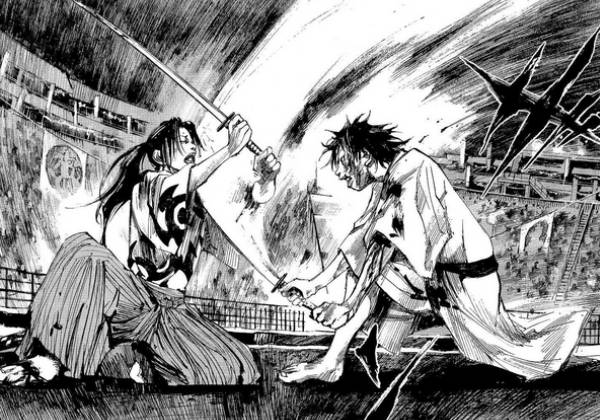
Takahashi’s approach to storytelling is uncompromising. Every chapter pulses with tension and tragedy. Violence isn’t a spectacle, but a constant, dirty reality. The brothers encounter ronin, warlords, and revolutionaries, each scarred by loss or ambition. Over time, Sidooh becomes less a chronicle of bloodshed and more a historical epic about a society on the verge of transformation, clinging to old ideals.
Visually, Takahashi’s art is unmistakable: raw, heavy, and atmospheric. His brushwork gives every duel a sense of weight and chaos, while quieter scenes feel almost haunted. His depiction of Edo’s crumbling streets and the looming presence of Western influence make Sidooh one of the most immersive historical samurai manga out there.
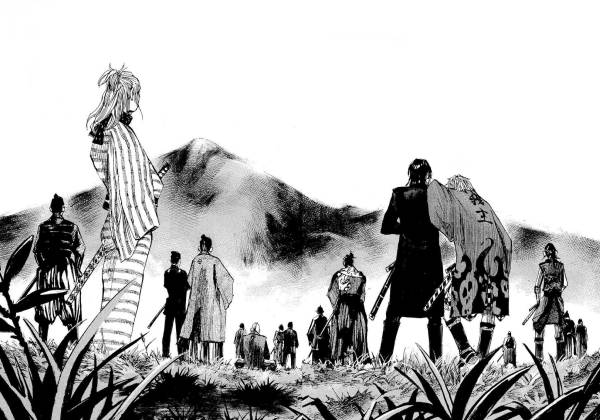
Sidooh’s tone is neither romantic, idealistic, nor clean. It’s a rough, realistic, and deeply human story about two brothers carving a path through an era that no longer has a place for them. For anyone interested in a more grounded and emotionally charged take on samurai fiction, Sidooh is a must-read.
Genres: Historical, Action, Drama, Samurai
Status: Completed (Seinen)
5. Tenkaichi
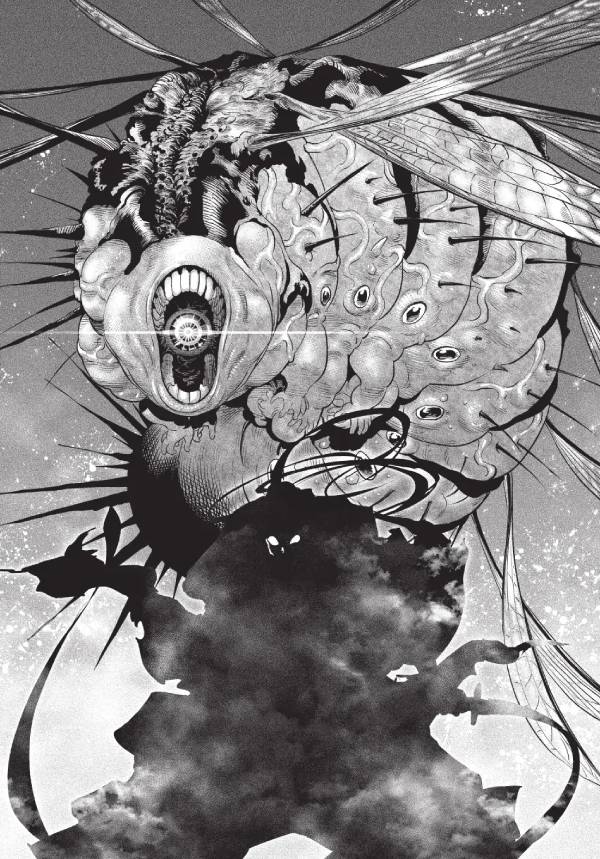
Tenkaichi is a samurai manga that fully embraces the myth of samurai legend, and it’s one of the most entertaining series I’ve read in years. It’s a high-octane, alternate history tournament where Japan’s greatest warriors face off in brutal duels to decide the fate of the nation. Think Record of Ragnarok but with samurai, ninja, and warlords from Japanese legend: all reimagined as larger-than-life martial gods.
The premise is simple but effective. The year is 1600, a decade after Oda Nobunaga unified Japan. Sensing his death approaching, he declares a grand tournament. In it sixteen of Japan’s strongest warriors will fight to the death, with the victor’s master granted the right to rule the nation. What follows is a series of cinematic, brutal duels that blur the line between history and fantasy.
Each combatant is drawn from real Japanese history and legend. Tenkaichi throws together icons like Miyamoto Musashi, Sasaki Kojirō, Honda Tadakatsu, Fūma Kotarō, and countless others, transforming them into near-mythic figures. Their designs, fighting styles, and personalities all reflect distorted echoes of the legends they’re based on. This makes it part history, part fever dream. Watching these figures collide in exaggerated, near-divine combat is a thrill in itself.
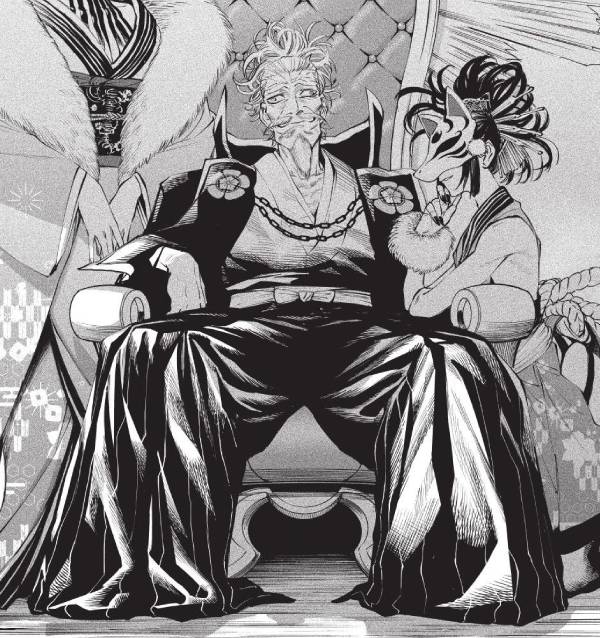
Stylistically, Tenkaichi is one of the most impressive samurai manga currently running. The art is detailed and explosive, filled with muscular anatomy, dynamic motion, and perfectly timed double-page spreads. Every swing feels heavy, every wound visceral, and every match builds to an insane crescendo. It’s pure spectacle, but it’s done with such commitment and polish that it earns every drop of hype.
What separates Tenkaichi from something like Gamaran is tone. Where Gamaran grounds its swordsmanship in believable technique and discipline, Tenkaichi goes completely over-the-top. Its samurai are closer to demigods than warriors, characters who transform and ascend to new heights in the heat of battle. And yet, despite the excess, it never loses sight of its core appeal: watching legends clash in a contest of strength, skill, and ego.
It may not be subtle or philosophical, but few series deliver action with this much flair. For fans of historical what-ifs and wild tournament arcs, Tenkaichi easily earns its place among the best samurai series of today.
Genres: Action, Historical, Martial Arts, Samurai
Status: Ongoing (Seinen)
4. Lone Wolf and Cub
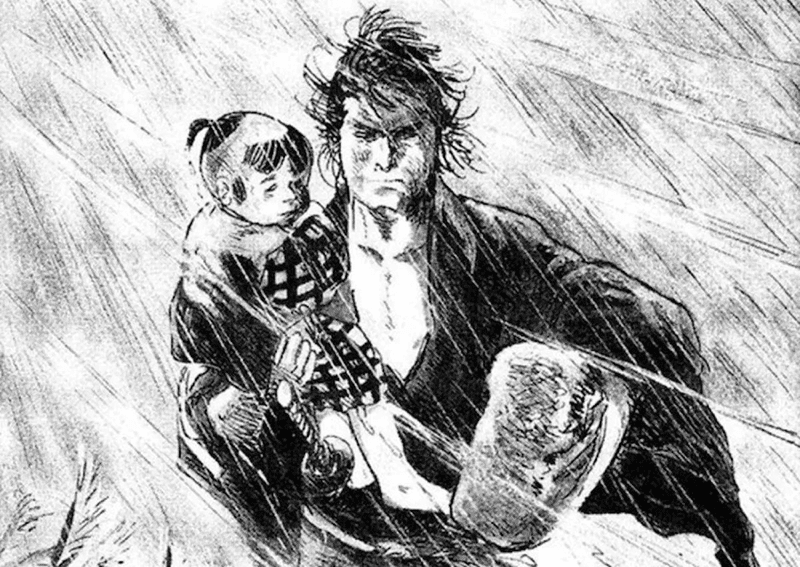
Few works have defined the spirit of the samurai manga genre like Lone Wolf and Cub. Written by Kazuo Koike and illustrated by Goseki Kojima, this 1970s masterpiece remains one of the most influential manga ever created. It laid the foundation for countless later works, from gritty revenge epics to philosophical wandering-swordsman tales, and remains the definitive samurai road story.
The premise is both simple and mythic. Itto Ogami, once the Shogunate’s chief executioner, is betrayed by the scheming Yagyū clan and accused of treason. Stripped of his honor and title, he becomes a ronin, wandering the land with his infant son Daigoro in a wooden cart. Together, they take assassination contracts as they carve a blood-soaked path of vengeance across feudal Japan.

Each chapter functions like a moral parable or folktale, as the duo encounters corrupt officials, desperate villagers, and rival assassins. Beneath the endless duels lies a tale of fatherhood, duty, and the cost of violence. Ogami’s stoic resolve contrasts beautifully with Daigoro’s quiet innocence, creating one of the most iconic dynamics in manga history. It’s brutal yet tender, a story of survival, legacy, and the unbreakable bond between father and son.
Artistically, Lone Wolf and Cub is unmatched in atmosphere. Kojima’s art blends stark precision with the cinematic language of jidaigeki film. Each panel feels deliberate: blades slicing through snow, silent standoffs on moonlit bridges, wind sweeping across empty fields. The pacing is slow, meditative, and often wordless, yet every motion carries immense weight. Even half a century later, its visual storytelling remains a benchmark for other samurai manga.
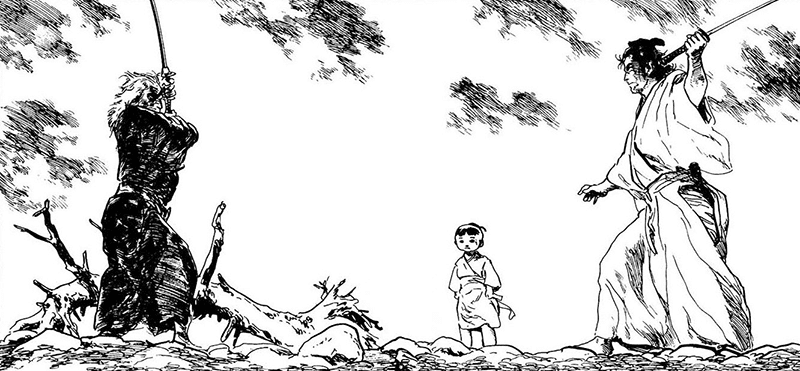
Modern readers might find the pacing slow compared to newer action series, but that’s part of its timeless strength. It’s not about flashy techniques or exaggerated duels; it’s about the burden of revenge and the quiet dignity of endurance.
If you’re exploring the best samurai manga ever made, Lone Wolf and Cub is a must-read. It’s the blueprint that shaped everything that followed, a classic that captures the beauty, brutality, and tragedy of the warrior’s path.
Genres: Historical, Action, Samurai
Status: Completed (Seinen)
3. Shigurui
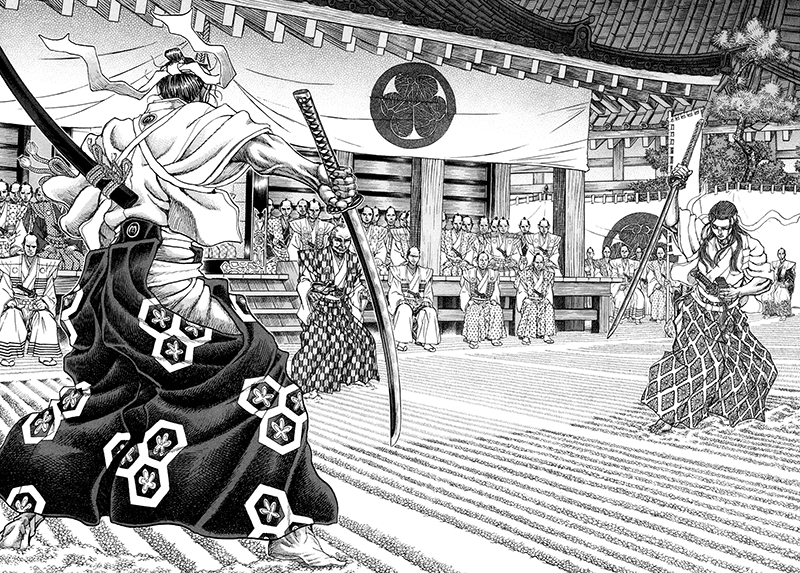
If Lone Wolf and Cub embodies the legend of the wandering swordsman, Shigurui represents its antithesis: the corruption beneath the code. Few samurai manga have dared to strip away the myth of honor and reveal what lies beneath: pain, obsession, and decay. Based on Norio Nanjo’s novel and illustrated by Takayuki Yamaguchi, Shigurui is the most grotesque, haunting, and psychologically devastating samurai story on this list.
The manga opens with a tournament unlike any other. Daimyo Tadanaga Tokugawa announces a deadly competition in which combatants must fight not with wooden swords, but real blades. The first duel pits two broken men against each other: Gennosuke Fujiki, missing an arm, and Seigen Irako, blind and lame. From that shocking introduction, Shigurui descends into their shared past, exposing the brutal training, rivalries, and betrayals that forged them.
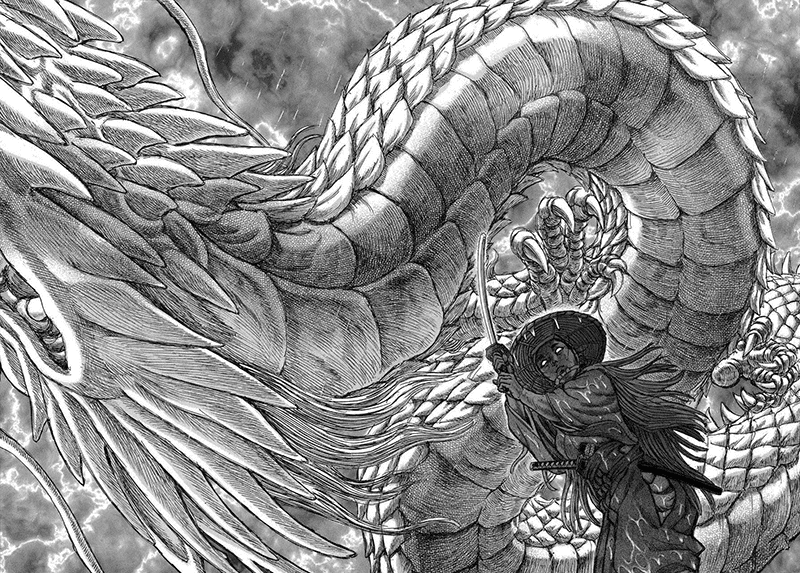
What separates Shigurui from most samurai manga is its refusal to romanticize the warrior class. There is no heroism here, only the suffocating weight of hierarchy and obedience. The samurai code is portrayed not as a source of honor, but as a system of cruelty. Students are beaten, mutilated, and humiliated in pursuit of perfection. Women exist as bargaining chips or victims, bound by the same dehumanizing code as their masters. Every duel, every act of violence, feels ritualistic: an expression of beauty and madness intertwined.
Yamaguchi’s art is breathtaking and horrifying in equal measure. His anatomical precision turns every sword strike into something disturbingly real. Flesh tears, bones shatter, and blood flows. Yet amid the horror, there’s an undeniable elegance. Panels are composed with painterly care, capturing the eerie stillness before death and the hypnotic motion of the blade. It’s both mesmerizing and repulsive; violence as art.
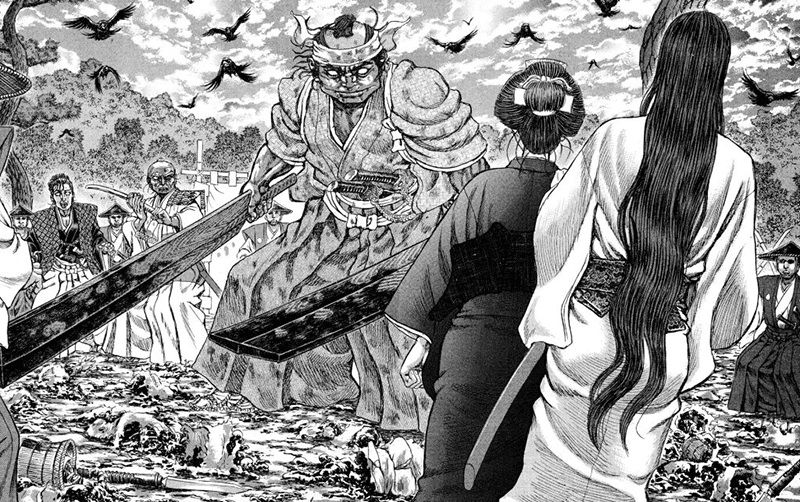
Shigurui isn’t for everyone. It’s slow, grim, and often nauseating in its detail. But for those who can stomach its intensity, it’s one of the best samurai manga ever written, a work that challenges everything the genre stands for. Beneath the gore lies a profound critique of blind devotion, power, and the human need for transcendence through suffering.
Genres: Historical, Action, Drama, Tragedy, Martial Arts
Status: Completed (Seinen)
2. Vagabond
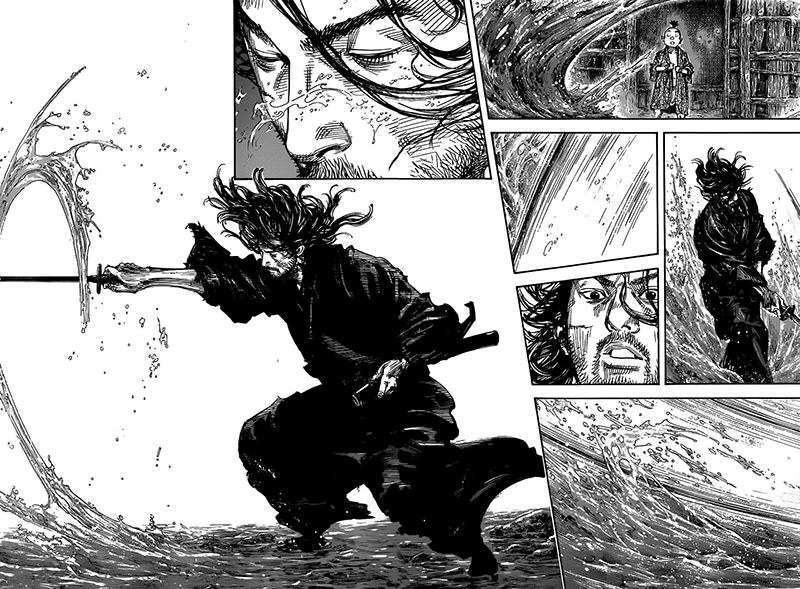
Few works in manga history reach the level of refinement and depth found in Vagabond. Written and illustrated by Takehiko Inoue, this adaptation of Eiji Yoshikawa’s Musashi is not only a landmark in the medium but often cited as the spiritual summit of samurai manga. Through stunning brushwork and philosophical storytelling, Vagabond transforms the legend of Miyamoto Musashi into a meditation on mastery, ego, and the search for peace.
The story begins with Shinmen Takezō, a violent and impulsive youth who dreams of becoming the strongest under heaven. After surviving the carnage of war alongside his friend Matahachi, he returns home, but is soon branded a criminal. His rebirth comes through the monk Takuan, who grants him a new name: Miyamoto Musashi. From that moment, the tale becomes a lifelong pilgrimage: a man’s journey to understand the sword, and ultimately, himself.
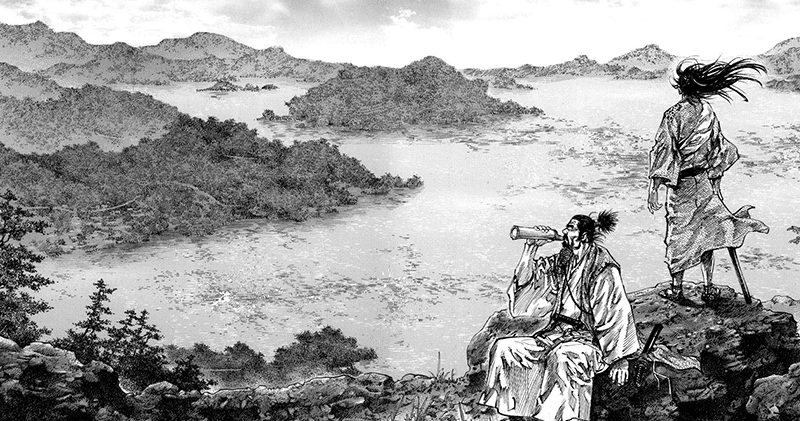
Inoue’s storytelling captures both the grandeur and the silence of the samurai era. Each duel is rendered not merely as combat but as a reflection of character and philosophy. Musashi’s early battles are savage, driven by raw instinct and pride. As he matures, his fighting style evolves. The blade becomes an extension of himself, his purpose more inward than outward. This transformation feels organic, mirroring his slow path toward enlightenment.
Artistically, Vagabond stands alone. Inoue’s ink work is fluid and painterly, bridging the gap between manga and fine art. Every page is stunning, be it the motion of grass in the wind, rain cascading through bamboo, or the stillness before a strike. His visual language conveys what words cannot: exhaustion, fear, serenity, the quiet dignity of persistence. It’s a world alive with texture, emotion, and impermanence.
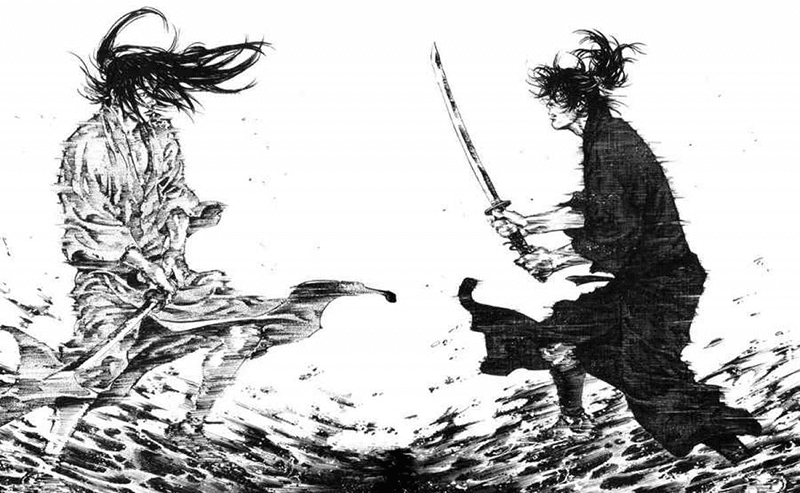
What elevates Vagabond above even the best samurai manga is its willingness to confront the emptiness behind the warrior’s path. The glory of victory fades quickly, and what remains is solitude. Musashi’s story becomes a universal one, not about killing or triumph, but about learning how to live.
Though unfinished and likely to remain so, Vagabond endures as a complete experience in spirit. It captures both the ferocity and fragility of the human soul. For anyone seeking beauty, depth, and truth within samurai manga, this is the summit, an unparalleled work of art and introspection.
Genres: Historical, Action, Drama, Samurai
Status: On Hiatus (Seinen)
1. Blade of the Immortal
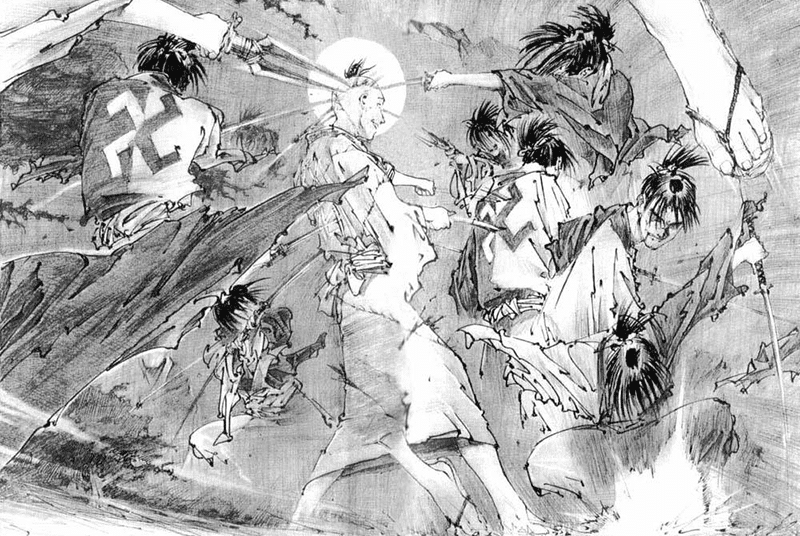
For many readers, Vagabond defines the peak of the samurai genre. For me, that honor belongs to Blade of the Immortal: Hiroaki Samura’s brutal, stylish, and deeply human revenge epic. Where Vagabond is meditative and philosophical, Blade of the Immortal is full of raw emotion and grit. It’s the punk sibling of Japan’s greatest epics, violent, morally tangled, and unforgettable.
The story follows Manji, the infamous Hundred Men Killer. Cursed with immortality by the nun Yaobikuni through sacred bloodworms, he’s doomed to wander the land, unable to die. Seeking redemption, Manji vows to slay a thousand evil men to regain his mortality. His path collides with Rin Asano, a teenage girl whose family was slaughtered by the Itto-ryu, a sword school that rejects all notions of honor. United by vengeance, the two travel Japan, confronting warriors, assassins, and their own consciences.
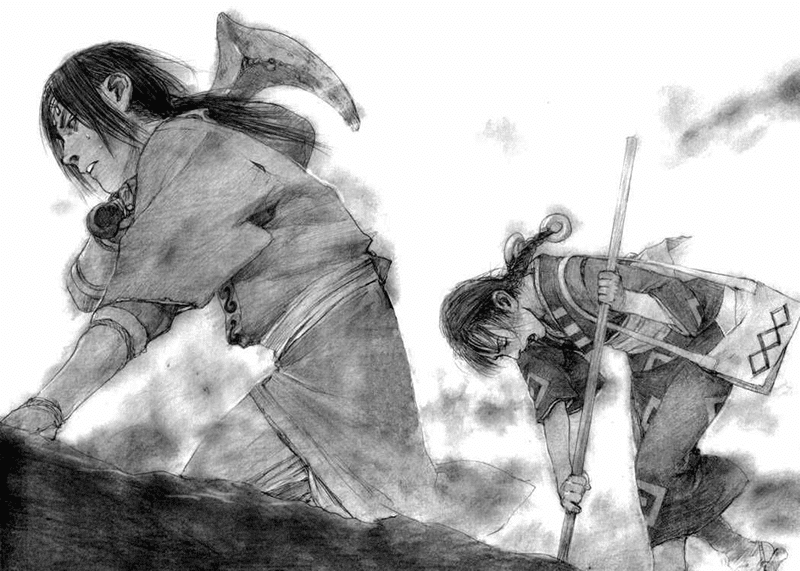
Unlike most samurai manga, Blade of the Immortal doesn’t glorify Bushido or romanticize feudal ideals. Its characters are messy, contradictory, and painfully human. Morality is fluid; even villains like Anotsu, the Itto-ryu leader, have their own ideals and philosophies. The manga constantly blurs the line between justice and revenge, exploring whether killing for a righteous cause is any less sinful than murder itself.
Samura’s art is breathtaking, scratchy, expressive, and alive. His brushwork alone balances elegance with chaos, rendering every duel as both dance and carnage. These sword fights are among the best drawn in manga: fast, visceral, full of unpredictable choreography. Blood sprays across panels, yet the violence almost always feels purposeful, seldom gratuitous.
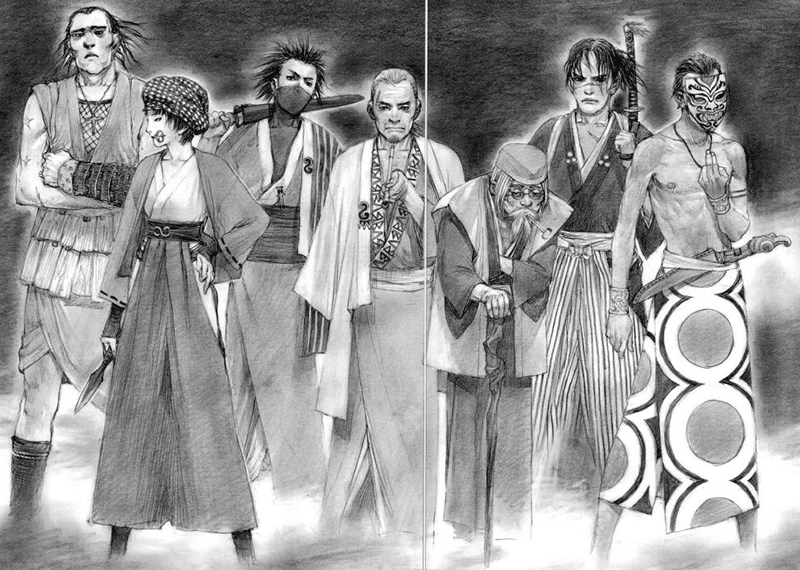
Equally impressive is the cast. Blade of the Immortal boasts one of the richest ensembles in all of samurai manga. Women like Maki and Hyakurin are not passive bystanders but warriors and survivors, defined by strength and tragedy. Almost every other character, ally or enemy, carries scars, both literal and spiritual. The only outlier is Shira, one of manga’s most unhinged and despicable antagonists, whose scenes often spiral into excessive brutality and torture.
If Vagabond is the refined Zen of swordsmanship, Blade of the Immortal is its punk brother. It’s a story about revenge, but also about the people driven by it and what made them that way. With its unforgettable art, savage duels, and existential undercurrent, it’s not just one of the best samurai manga ever made; it’s one of the greatest manga of all time.
Genres: Historical, Action, Drama, Revenge
Status: Completed (Seinen)
